Antarctica Science Program 2023-2024
Don’t miss the chance to sail with Antarctic scientists this season! From penguins and whale research to fisheries management and the impact of Citizen Science, you’ll have the chance to get up close and personal with any of seven different projects.
1 mins read
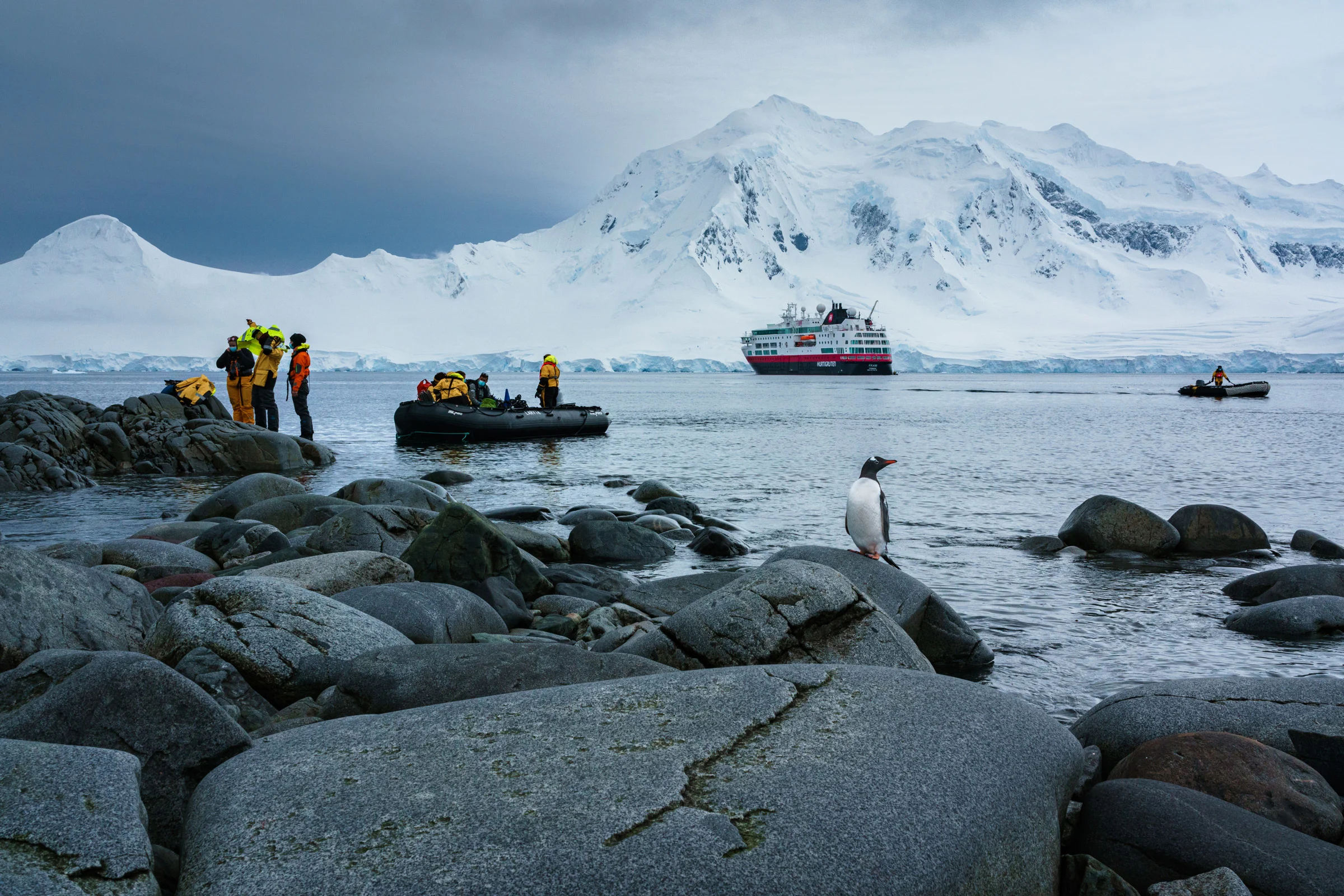

1. Penguin Watch
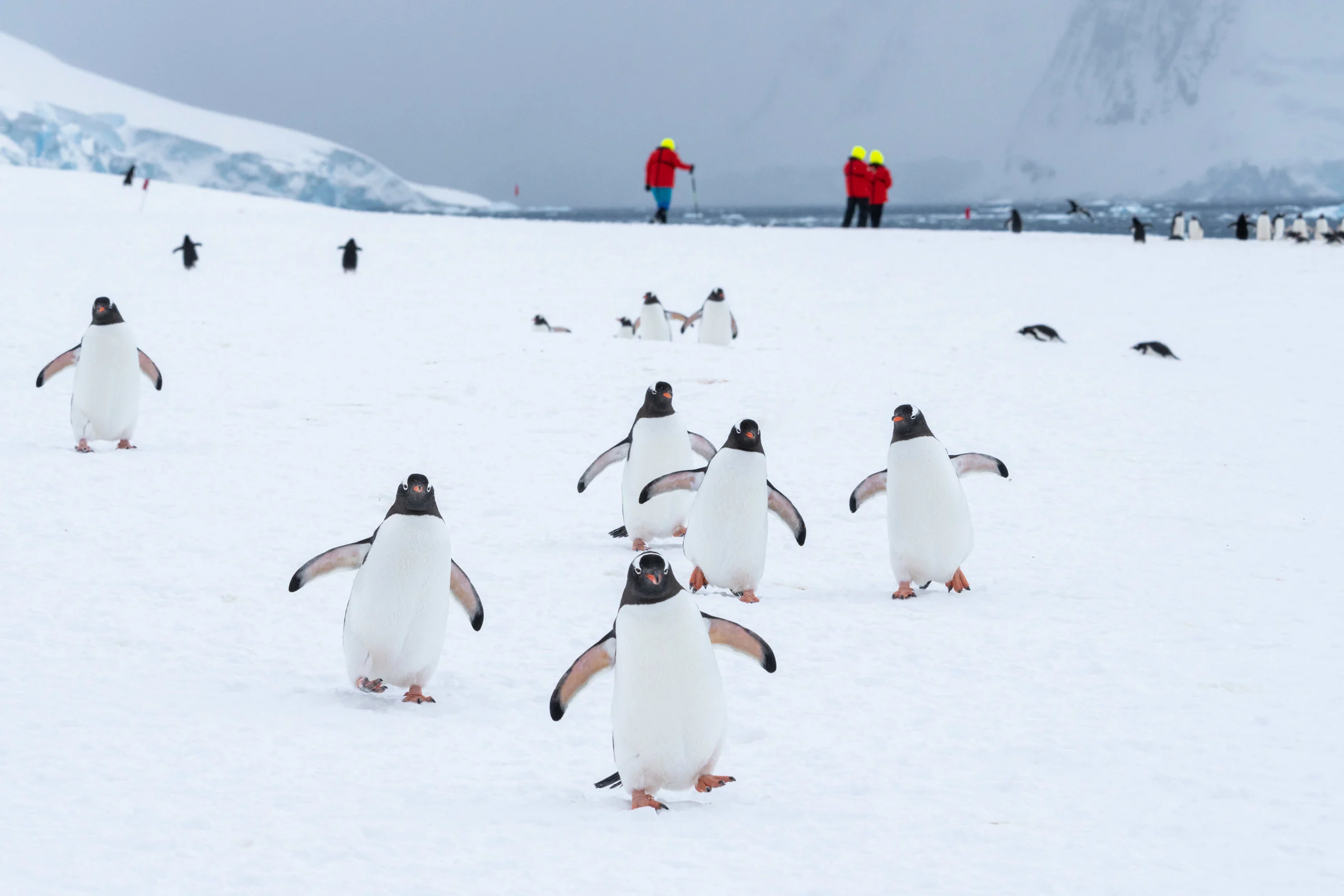
2. Marine Mammal Observations (MMO)
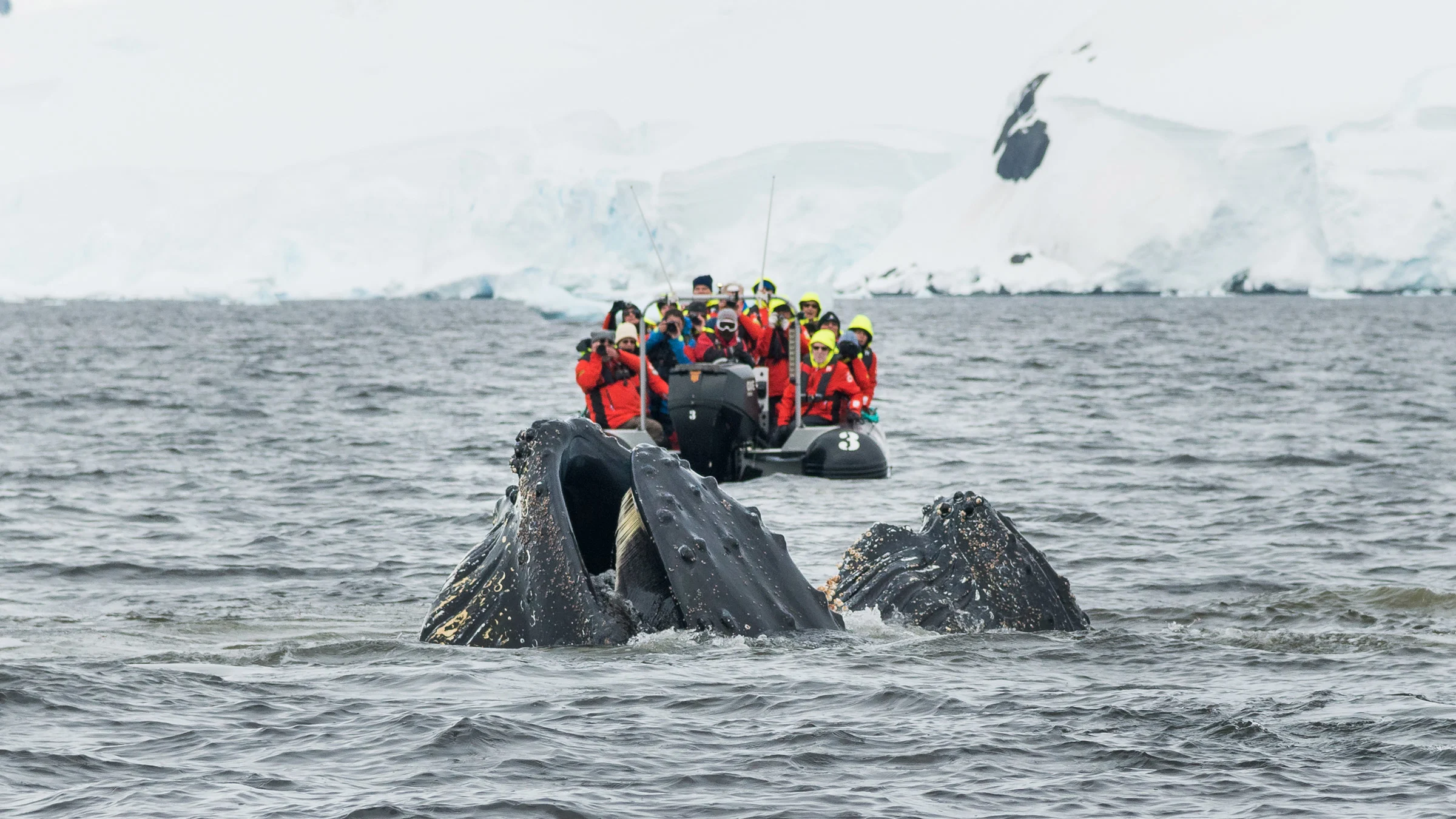
3. How does Citizen Science Affect Attitudes and Behaviors?
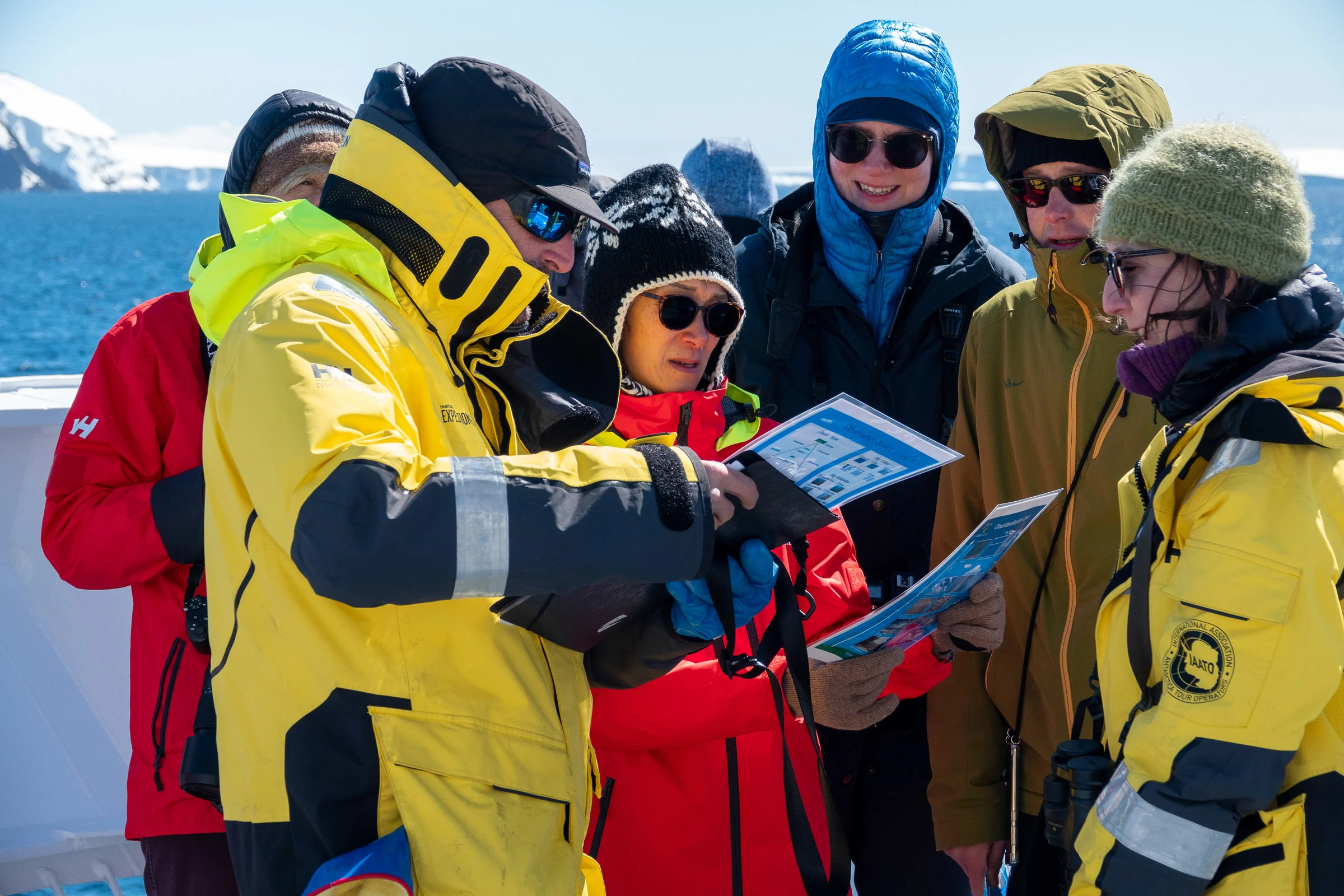
4. Sea Ice Seals in the Antarctic Peninsula

5. Whale Research Study

6. The Impacts of Antarctic Snow Algae
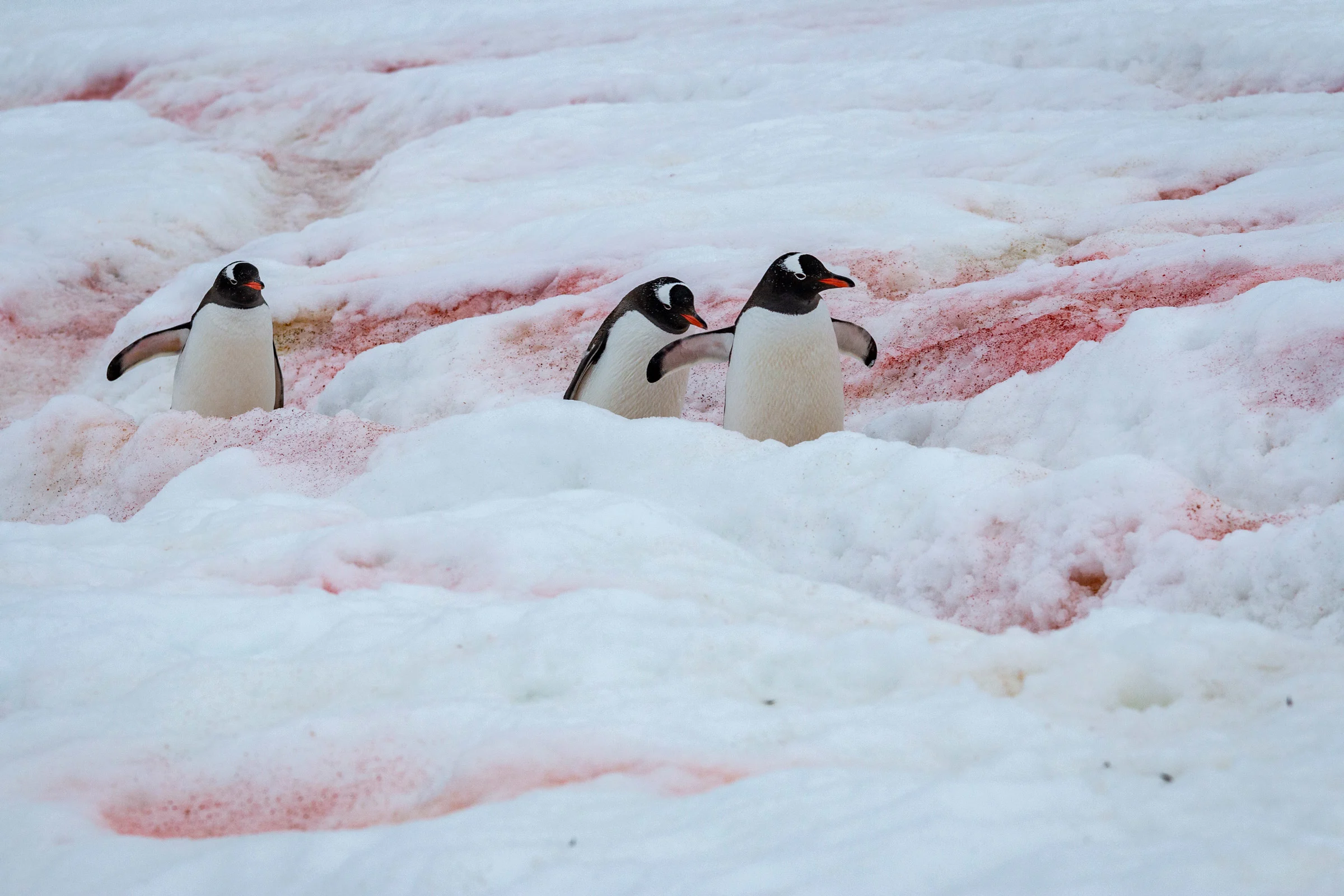
7. Abundance and Distribution of Whales in South Georgia
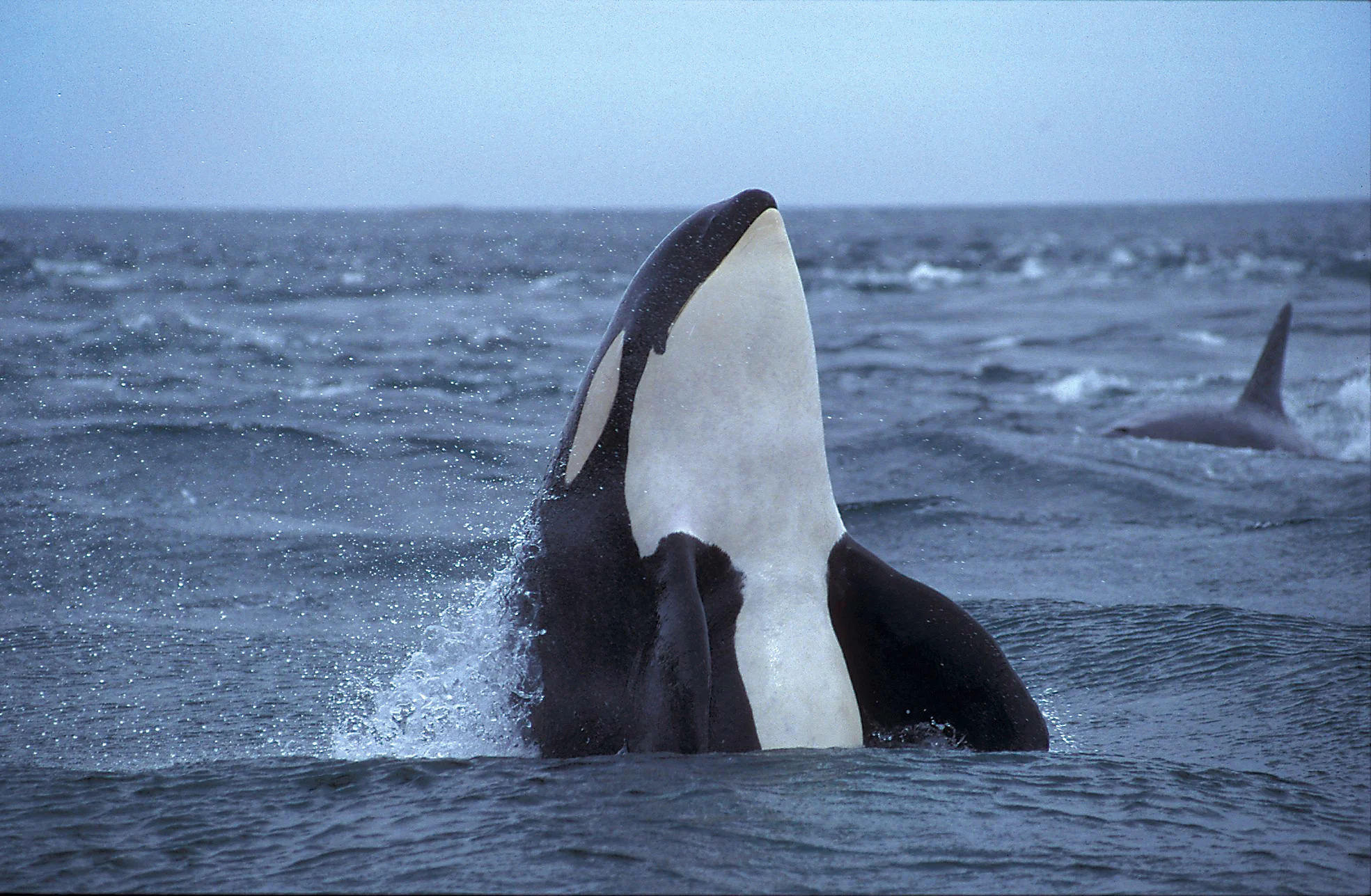
Other stories
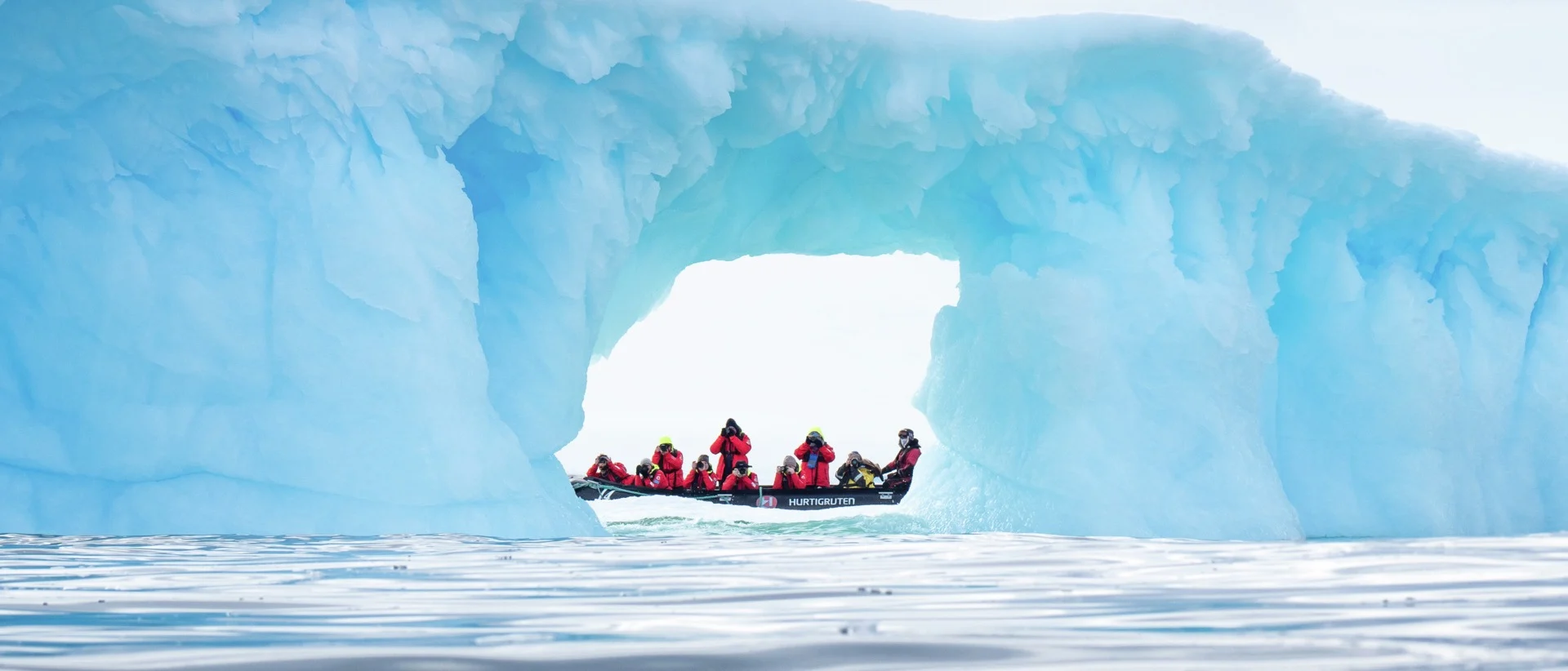
10 fascinating Antarctic features
10 Amazing physical features of Antarctica that will inspire you to learn more about this wonderful landscape!

14 fun facts about penguins
Penguins are an iconic part of the wildlife across Antarctica and the Southern Hemisphere. We've pulled together 14 of our favourite fun facts about these loveable birds.
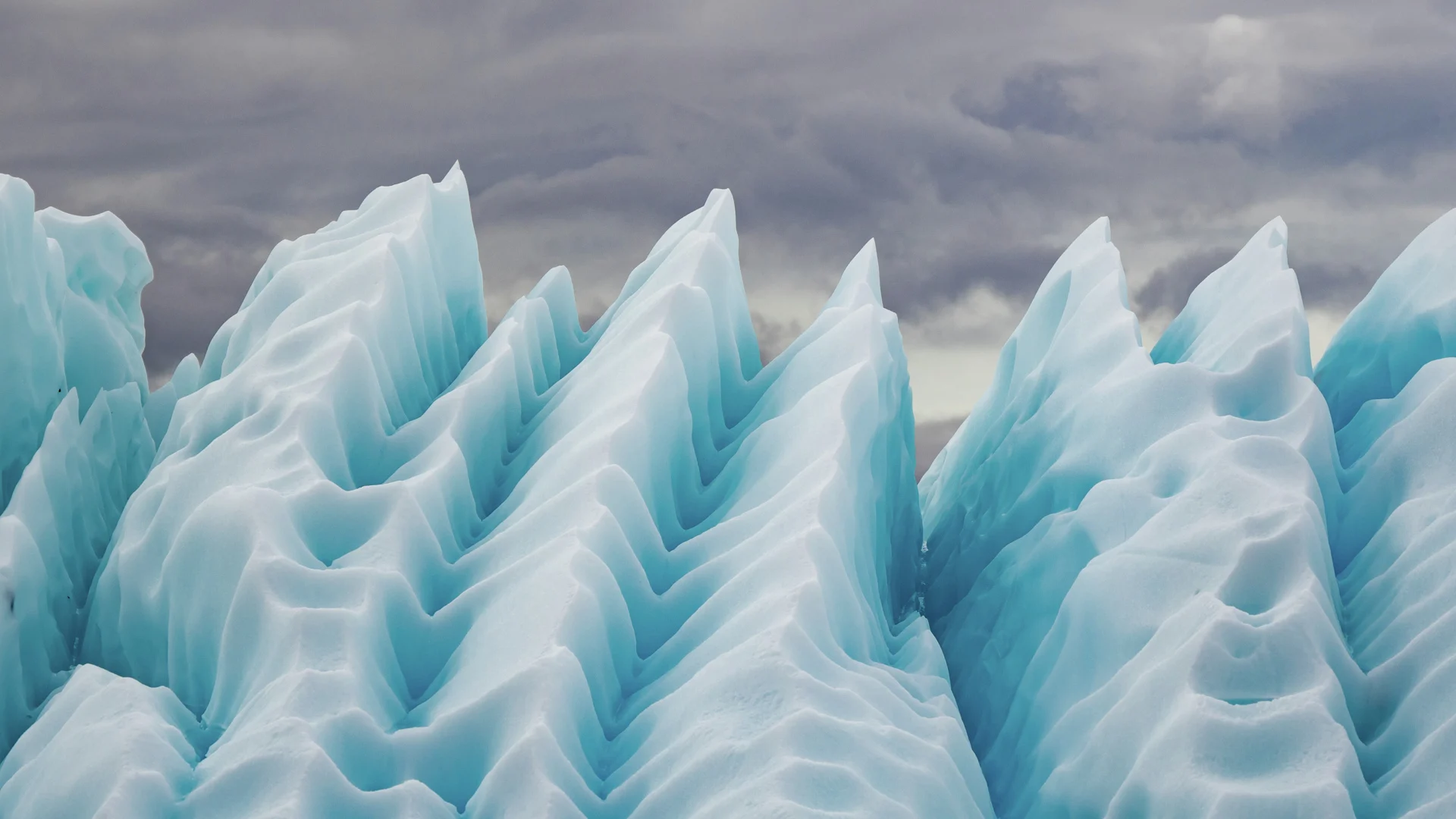
15 Interesting Facts About Antarctica
On the southern-most tip of the planet rests one of the world's most massive and mysterious landmasses - the frozen realm of Antarctica.
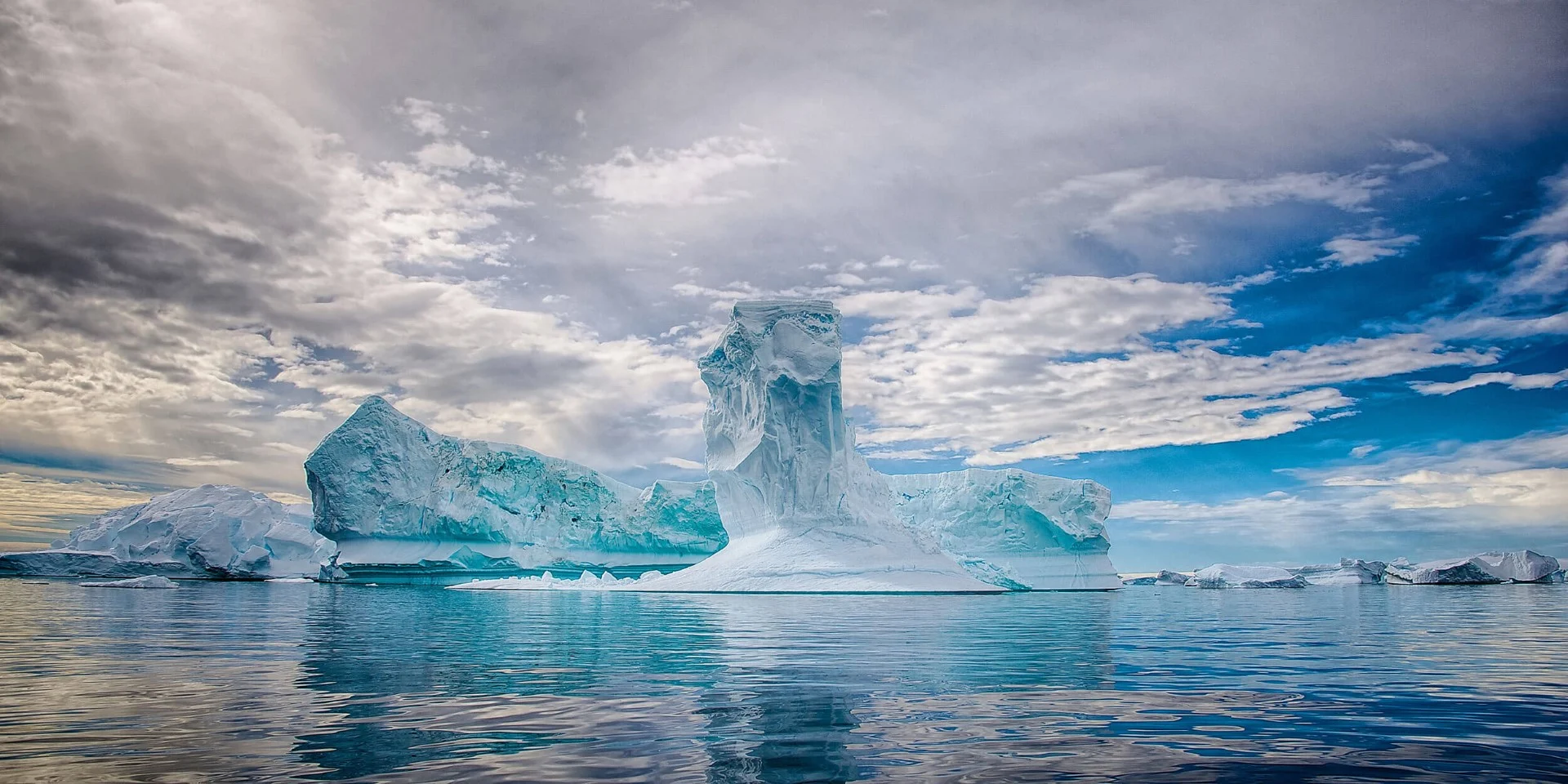
9 reasons to travel to Antarctica
Never mind the bragging rights - here are nine reasons you should hop on an Antarctic cruise and head toward the South Pole.

Antarctica: Fact vs Fiction
Antarctica: Fact vs Fiction - 5 myths about the frozen continent Antarctica's remote nature and sheer isolation means that there are a lot of misconceptions about life near the south pole.
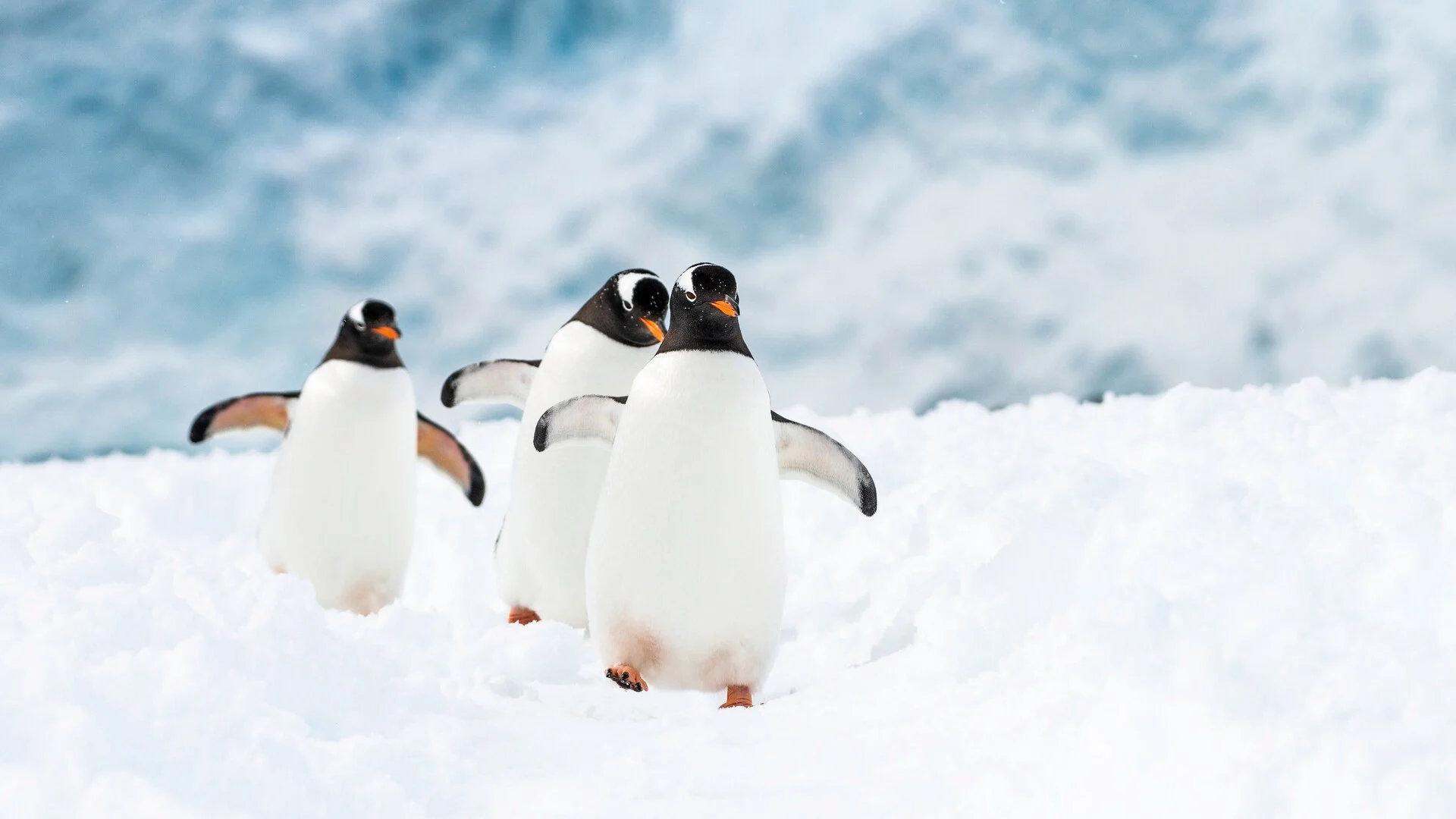
Antarctica Landings
Antarctica Landings Explore this wild and wonderful frozen continent and see penguins, whales and seals in their natural habitat.
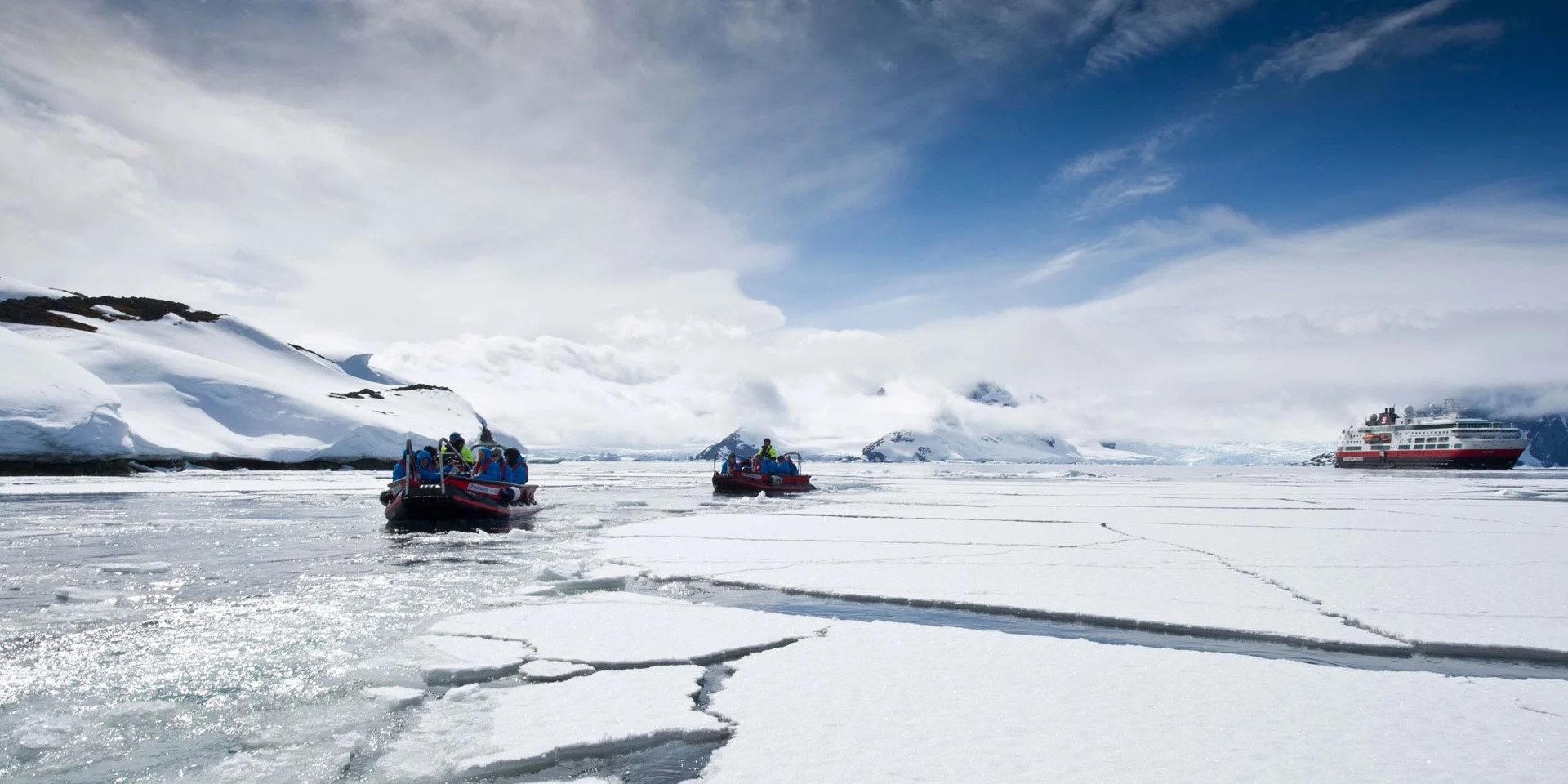
Antarctica Reading List
Antarctica Reading List Here's a reading list to give you an idea of what you can expect from your trip to the world's most remote location.
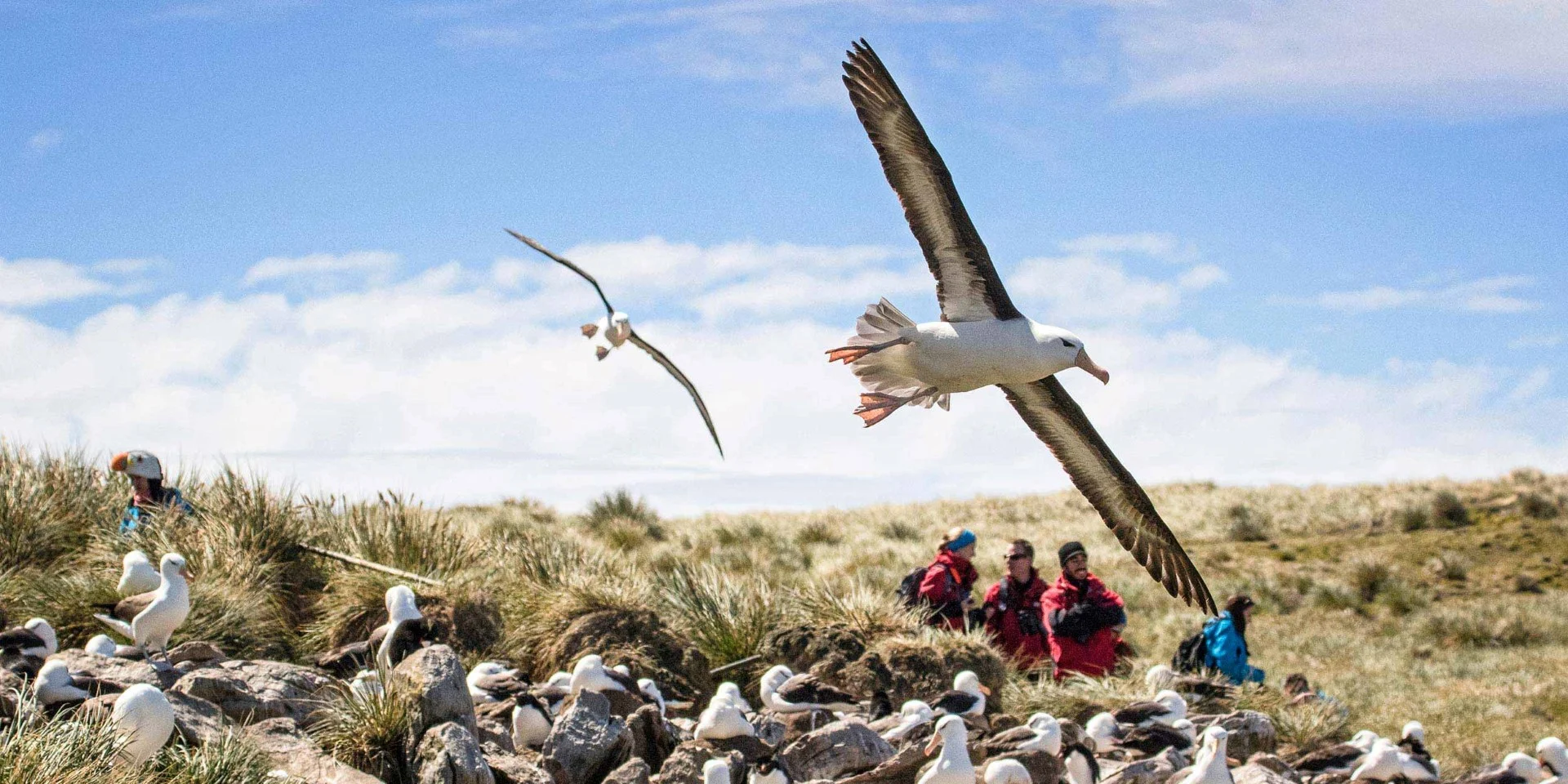
A traveller's guide to the Falkand Islands
Dive into the fascinating history of the Falkand Islands, discover what the islands look like today and what you can do there.
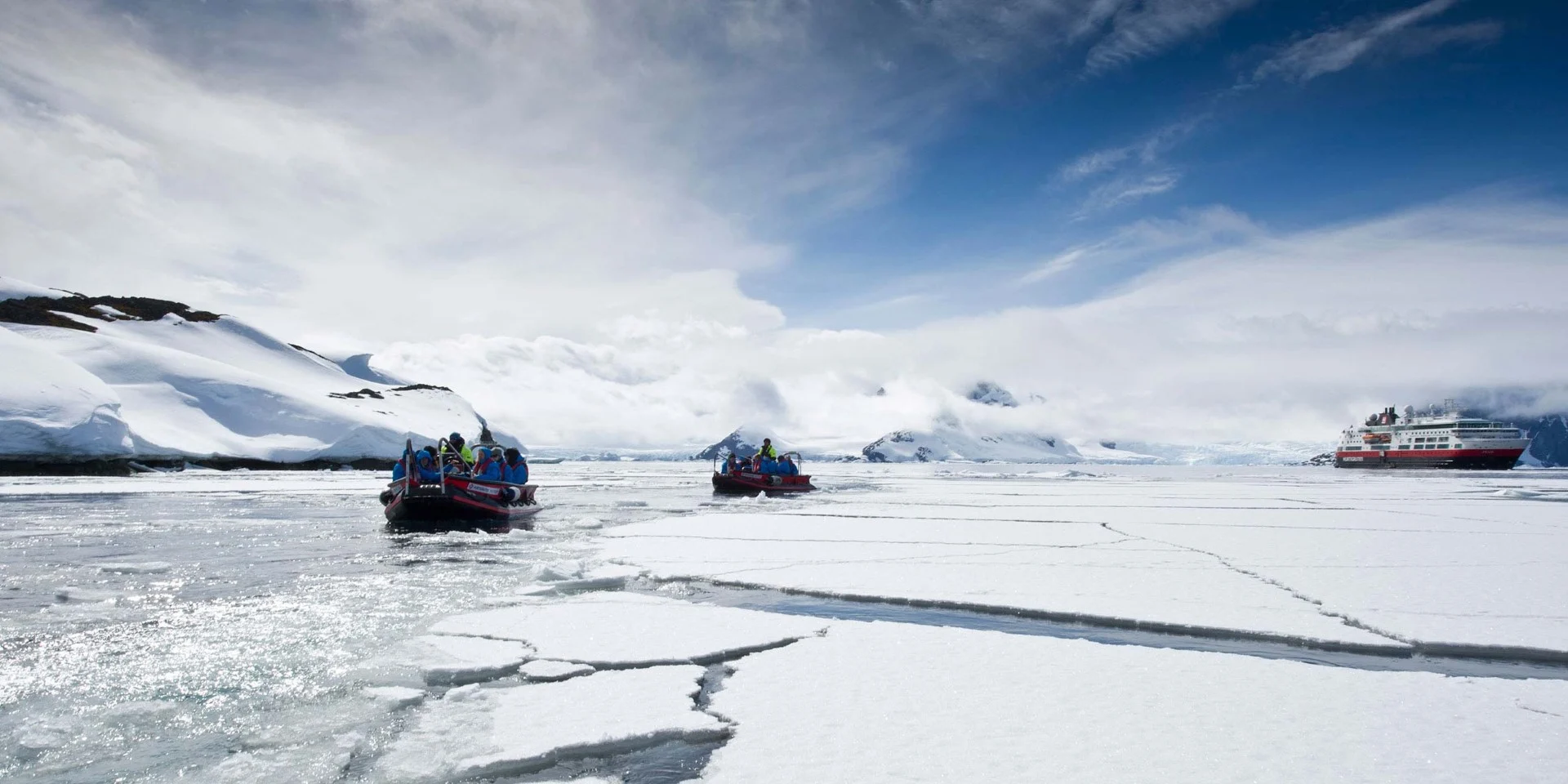
Changing climate in Antarctica
Changing climate in Antarctica With the beginning of the industrial revolution in the early 18th century humans began pouring CO2 into the atmosphere – first from burning coal, and later from oil and gas. Since then this period of anthropogenic climate change has led to a global warming of about 1˚C.

Port Lockroy: Five Fun Facts
Located off the Antarctic Peninsula’s coast, Port Lockroy is a natural harbor with two ship visits per day during summer, making it Antarctica’s single most visited site.
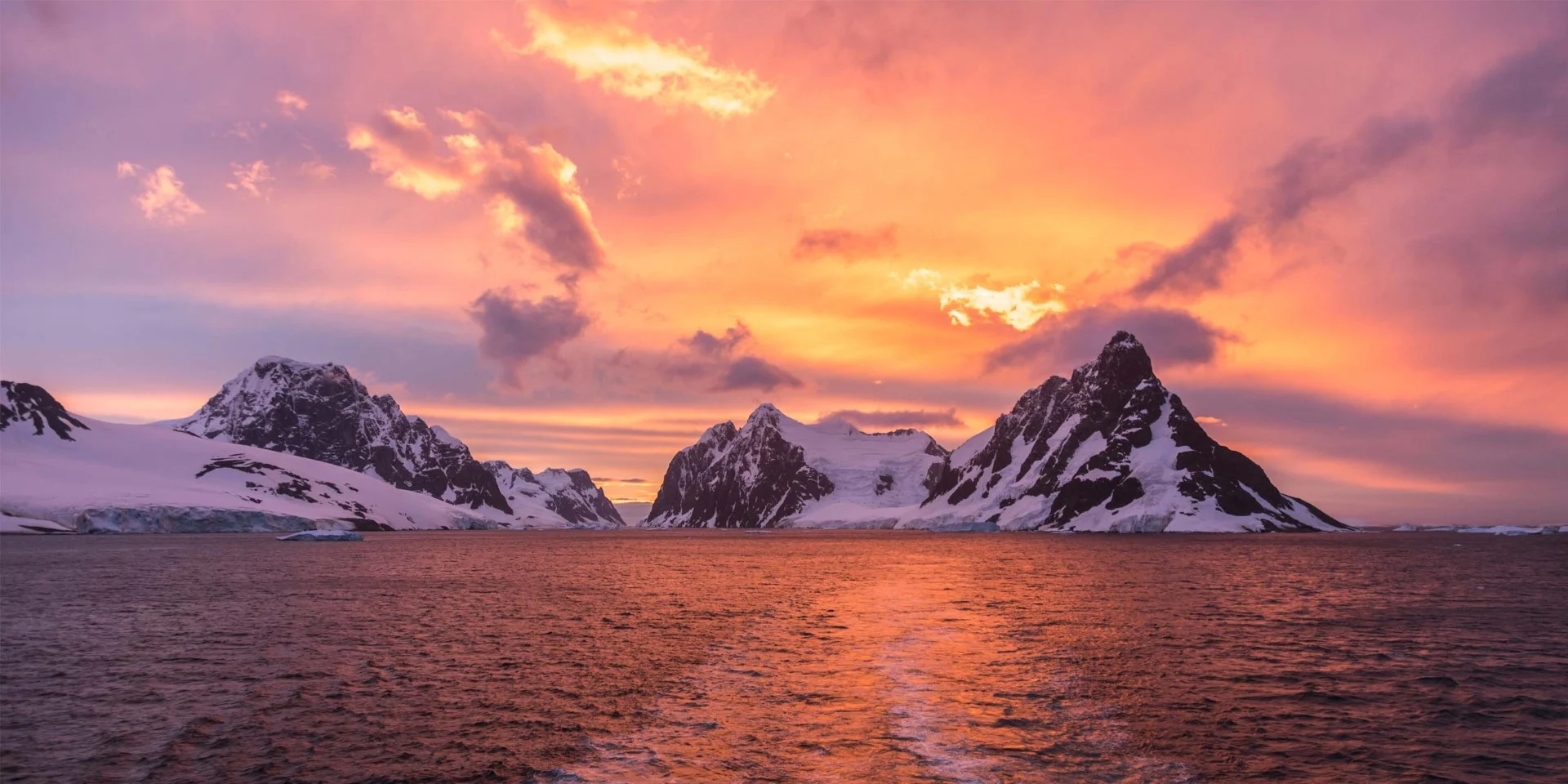
When to visit Antarctica
Not sure when exactly to travel to Antarctica? This calendar of what you can see during different stages of its spring and summer season might help you decide. As the sun returns to Antarctica after its long winter, a wealth of wildlife can be seen throughout the spring and summer season. Each period showcases different stages of the cycle of life, including courting, nest-building, giving birth to new life, and raising their young.
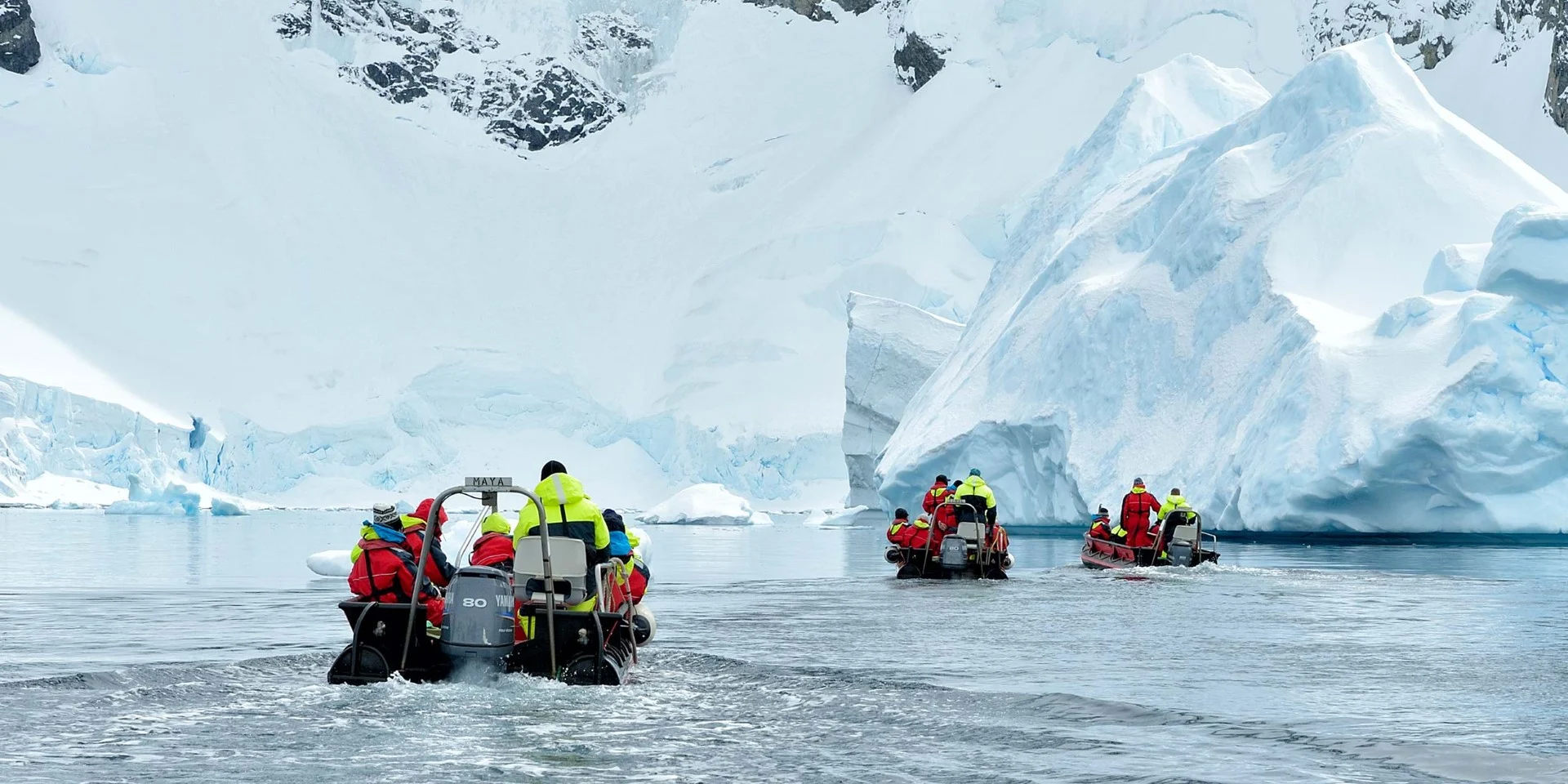
Why Hurtigruten Expeditions ?
With a focus on sustainable cruising, we continue to explore the planet, visiting some of the world’s most beautiful and pristine regions.
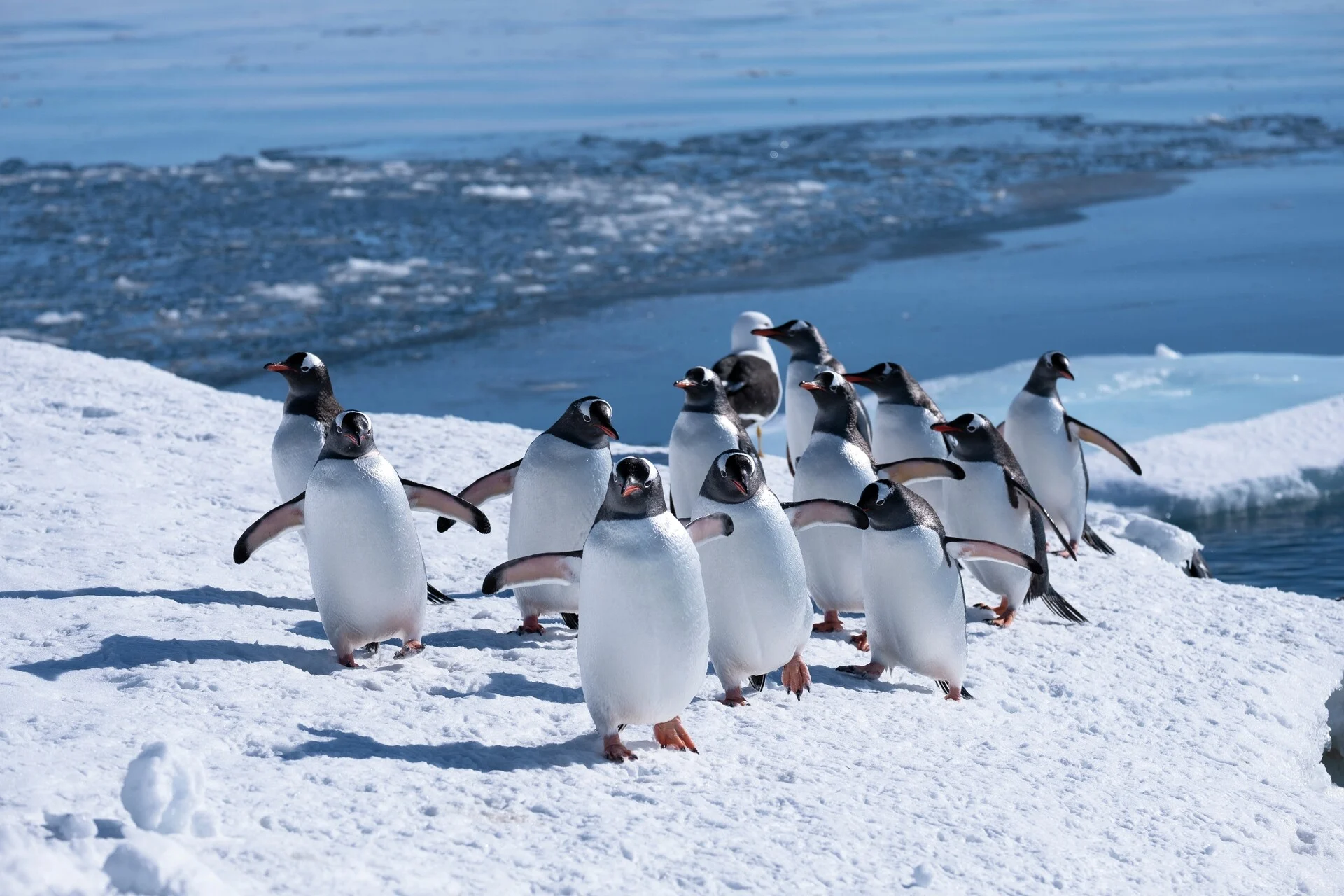
Wildlife in Antarctica
Antarctica is the only continent with no significant plant life and no native land mammals, reptiles, or amphibians. Even in the extreme environment of Antarctica, life not only survives but thrives. Its icy seas, isolated icebergs and snow-driven deserts are home to wildlife that surprise and charm all who visit them.
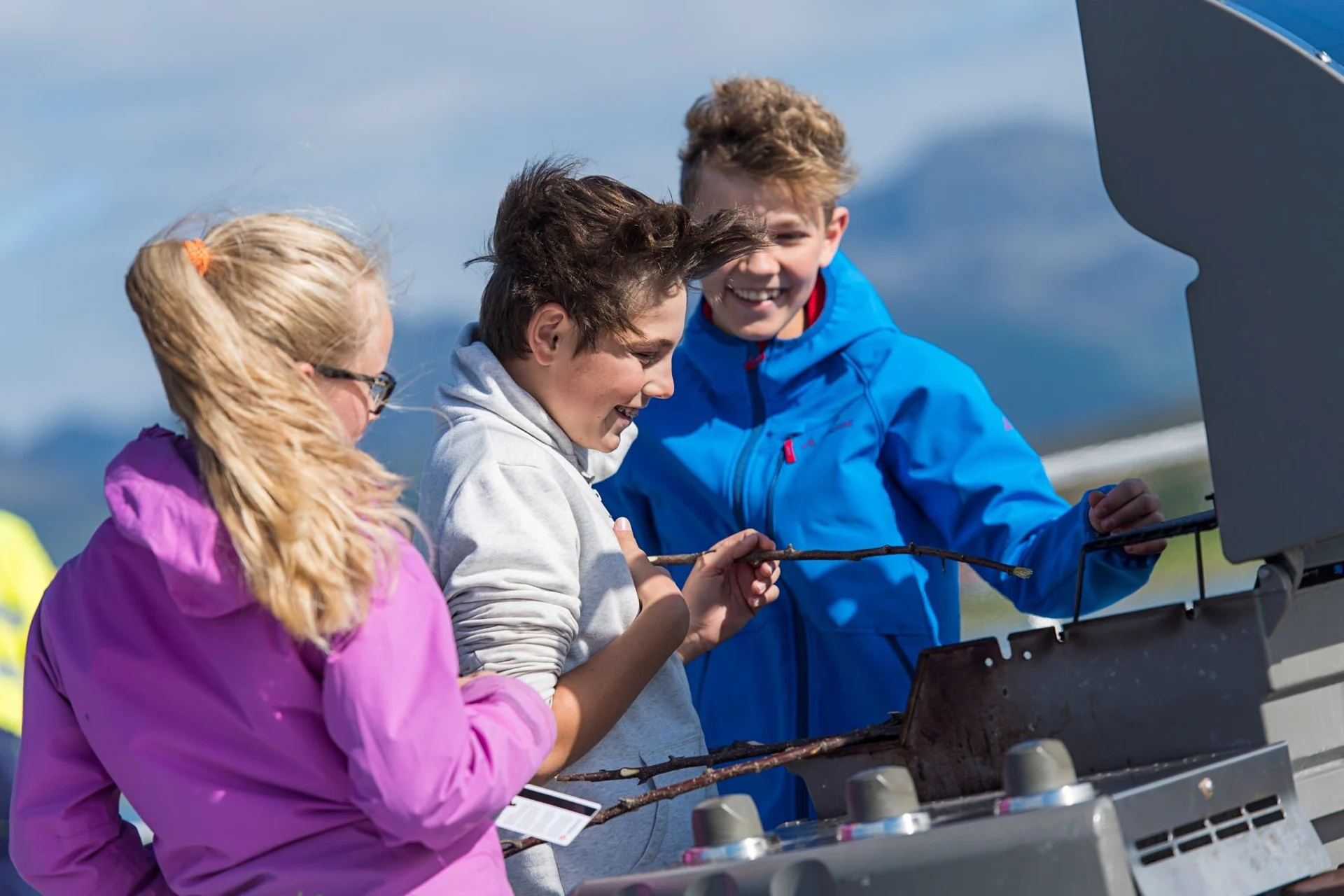
Young Explorers Programme Expedition
Young Explorers’ Programme: Bring your kids on board Young Explorer is a complimentary, year-round programme on selected Hurtigruten ships for curious and active youth aged 6-12 years of age.
Related cruises
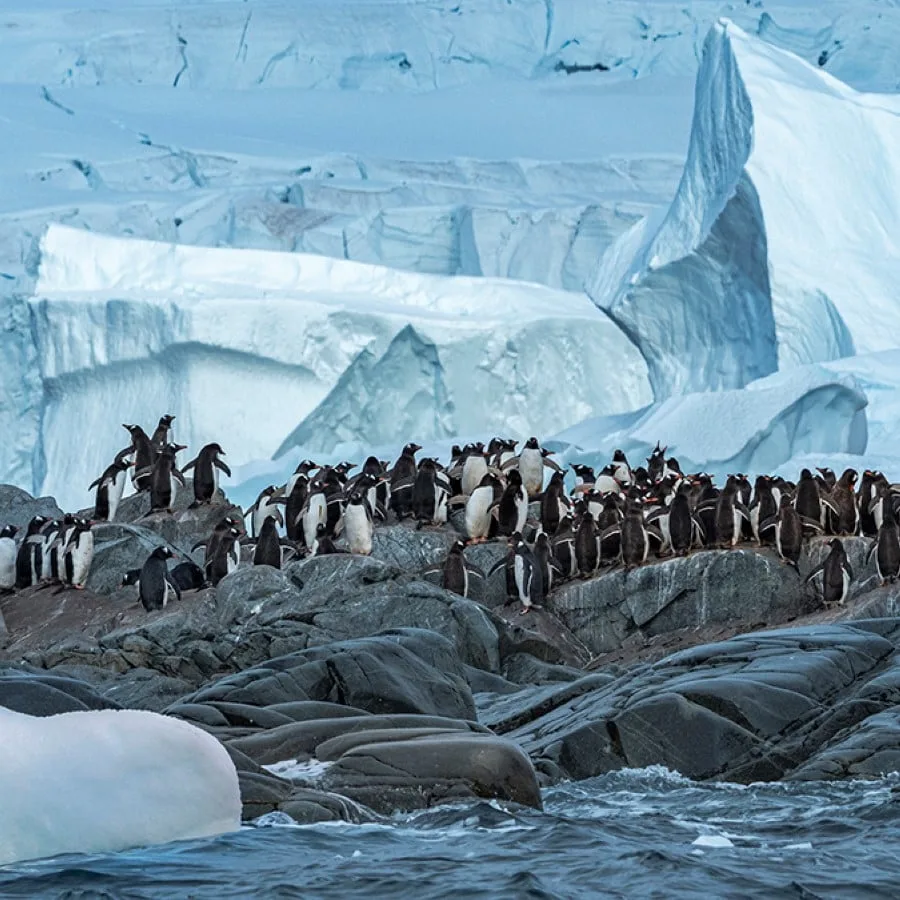
Antarctica & Patagonia Expedition | Southbound
Departure Dates
Oct 21, 24, Nov 1, 24
Price from $17,653
MS Roald Amundsen +1
MS Roald Amundsen MS Fridtjof Nansen
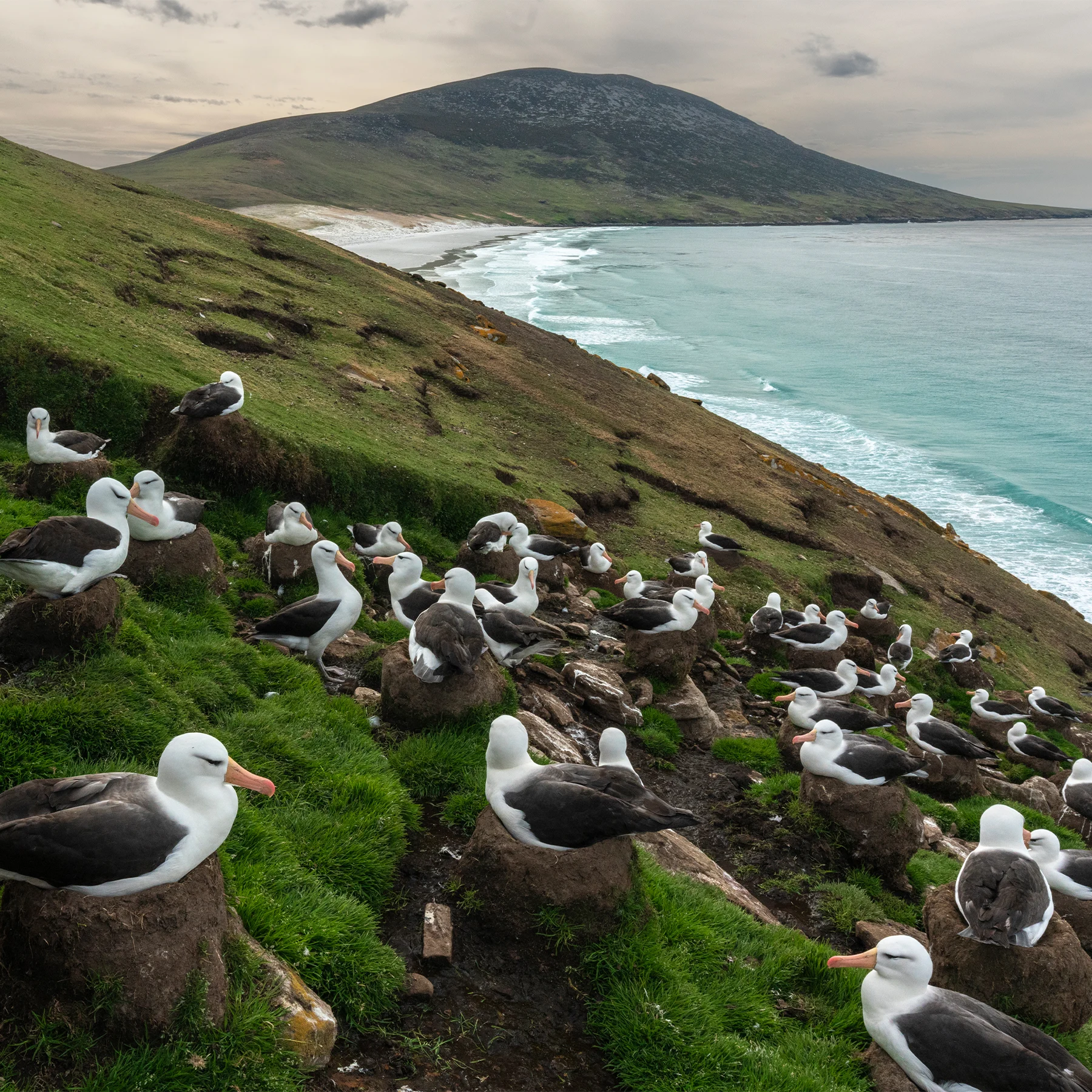
Antarctica & Falkland Expedition
Nov 6, 24, Nov 20, 24 + 4 more departures
Price from $15,480
MS Roald Amundsen
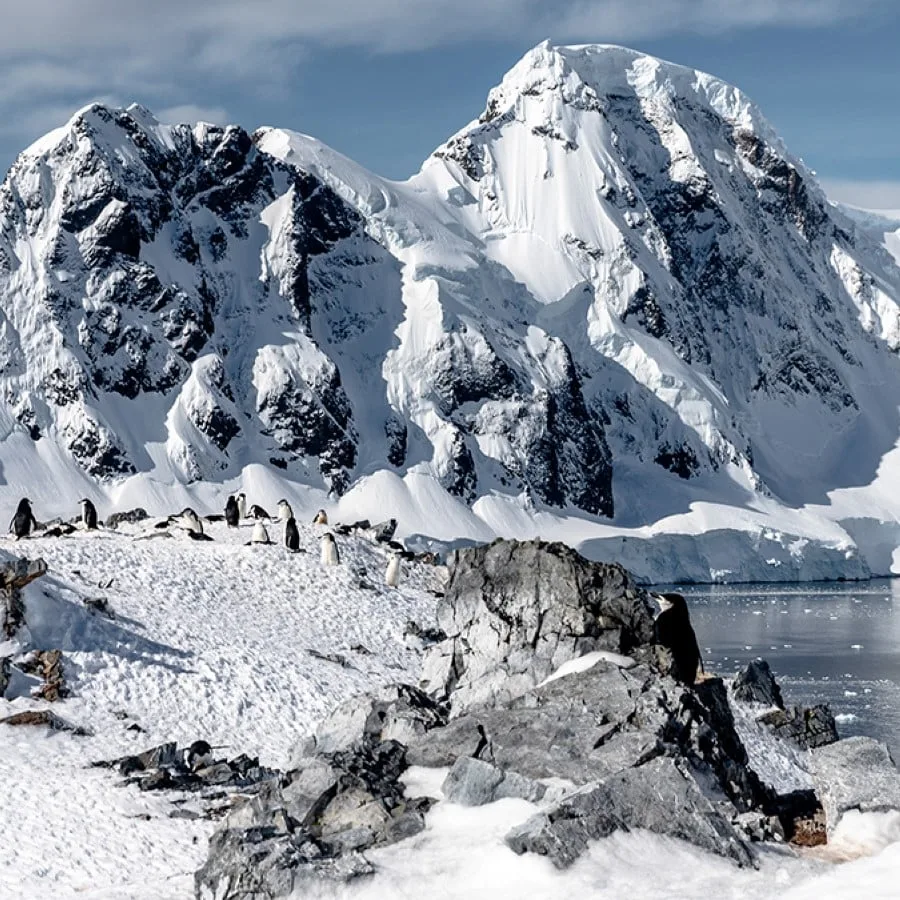
Highlights of Antarctica
Nov 17, 24, Nov 27, 24 + 31 more departures
Price from $13,495
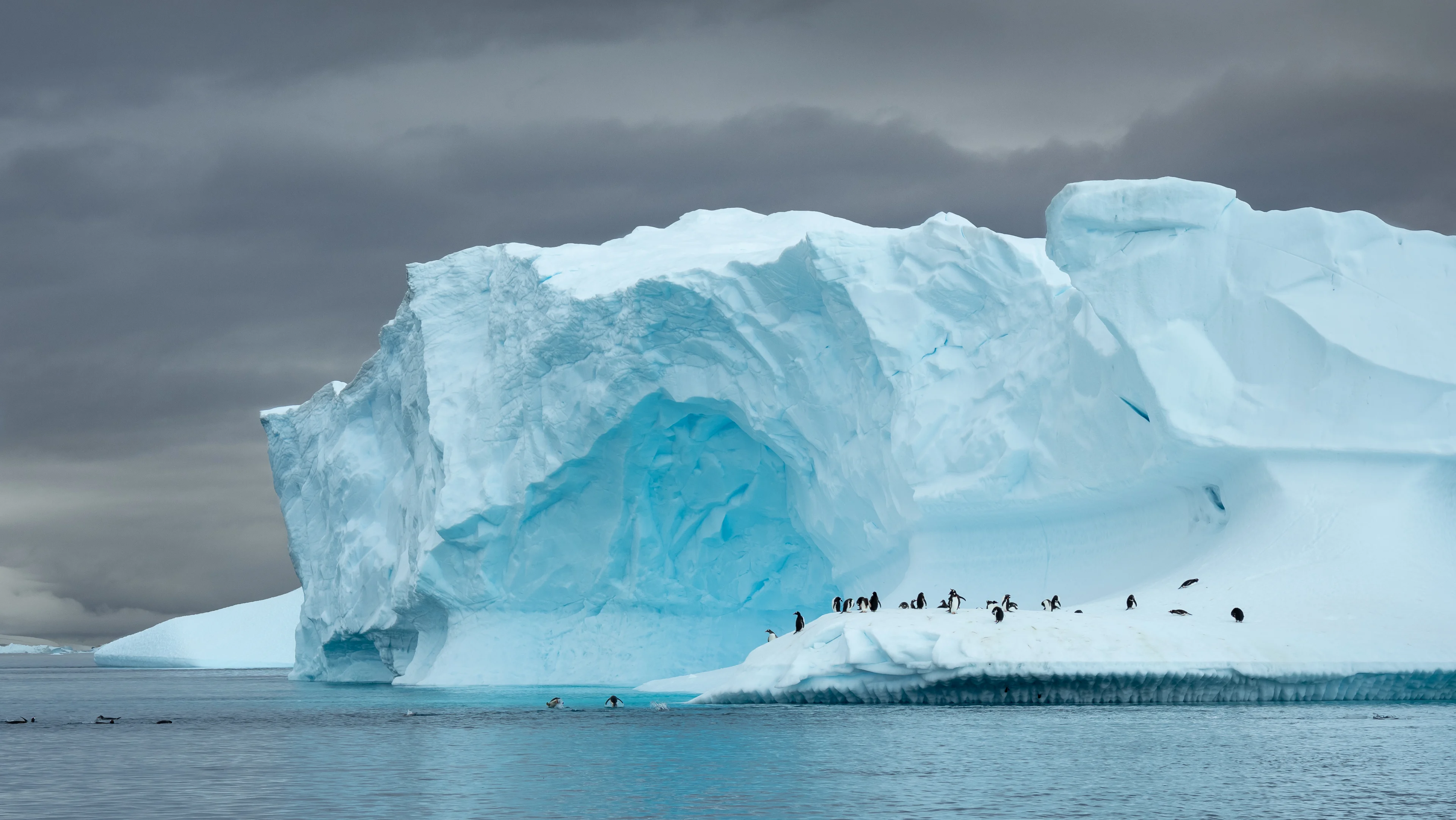
Sign up for our newsletter
Be the first to hear about our latest offers, exciting itineraries and inspirational articles.
Skip to main content
Wanted: Five Volunteers to Join Scientific Research Mission to Antarctica
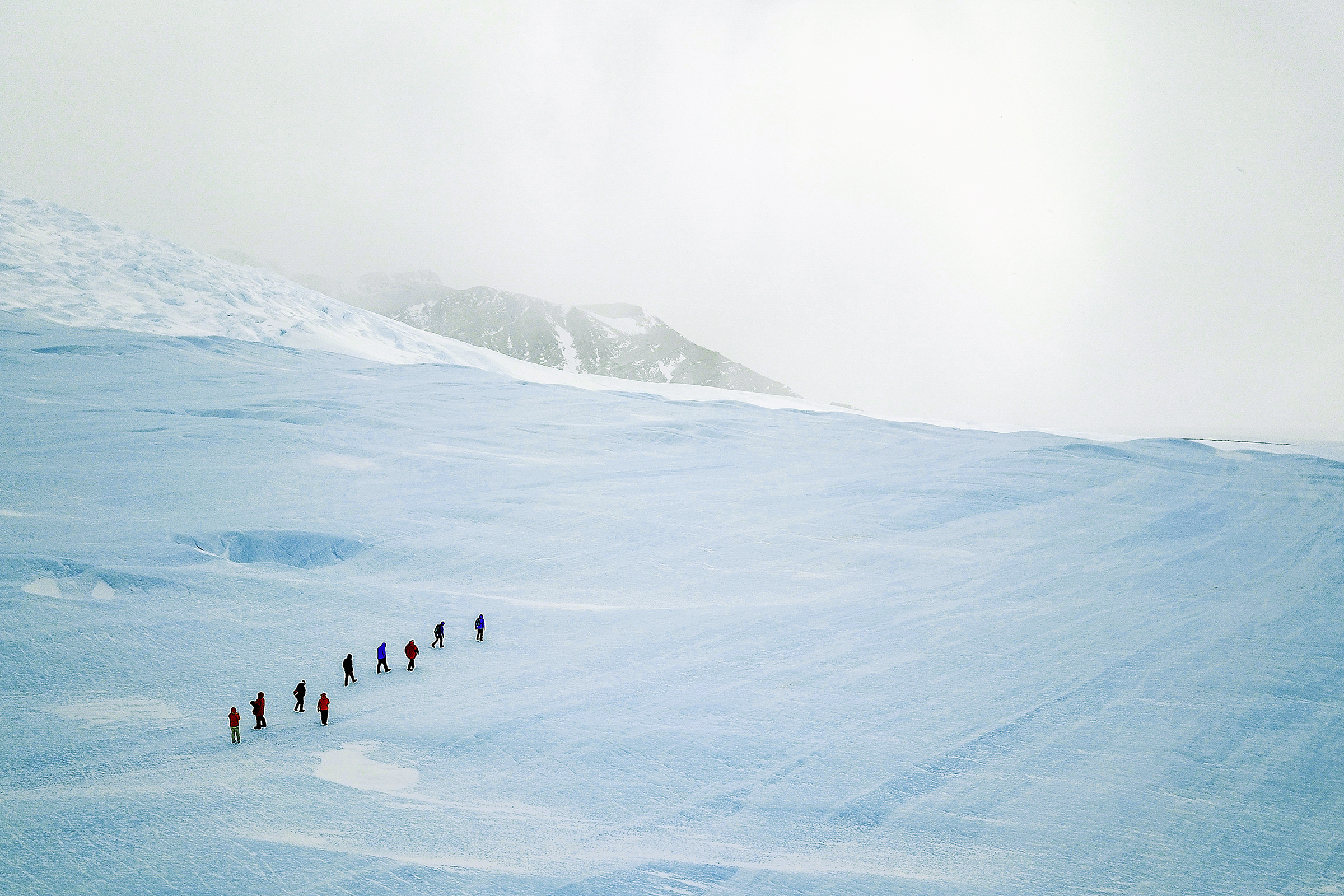
- The Antarctic Sabbatical – a once-in-a-lifetime opportunity to journey to the frozen frontier and help us better understand humans’ environmental impact
- No formal qualifications required, other than an adventurous spirit, passion for the environment and willingness to apply
- Part of larger Airbnb Sabbatical program designed to inspire people to take time out of their careers to give back
Today, Airbnb and Ocean Conservancy announced the Antarctic Sabbatical, an unprecedented opportunity for five passionate individuals to travel to Earth’s most remote continent and join Antarctic Scientist Kirstie Jones-Williams on a first-of-its-kind scientific research mission in December.
The five volunteer citizen scientists will collect snow samples and study the extent to which microplastics have made their way to the interior of Antarctica. The goal of the Antarctic Sabbatical is to bring greater awareness to humans’ impact on the climate in one of the world’s least understood and most isolated ecosystems. By understanding the impact of plastic pollution generated elsewhere in the world, the citizen scientists will deliver insights on how the global community can help protect both Antarctica and the planet.

“Most people think of Antarctica as a pristine and isolated continent, but recent evidence shows that even the most remote locations are affected by plastic pollution. This expedition will help us understand the pathways of microplastics to remote regions such as Antarctica and comes at a critical time to highlight our responsibility to protect our natural world,” said Jones-Williams. “This expedition will be hard work, with scientific rigour required during unforgiving wintery conditions. We are looking for passionate individuals, with a sense of global citizenship, who are excited to be a part of the team and to return home and share our findings with the world.”
On the month-long expedition, the citizen scientists will:
Attend an immersion training in Punta Arenas, Chile, where they will prepare themselves with courses on glaciology and field sampling as well as lab work and equipment practice.
Fly to Antarctica to begin their scientific mission, landing on a naturally formed blue-ice runway deep within the continent where the research will be conducted.
Collect snow samples from the interior of Antarctica and study them for foreign microfibers to determine how far waste and pollution has traveled across the world.
Visit the South Pole , where they can walk around the globe in just a few steps.
Get the chance to explore the beauty of Antarctic sites like the Drake Icefall, Charles Peak Winds coop, and Elephant’s Head to learn about the continent’s geography.
Return to Chile where they will continue to study their findings and work with Ocean Conservancy to become ambassadors for protecting the oceans. In this advocacy role, they will deliver insights on how the Airbnb community and others can help minimize their collective plastic footprint to support Ocean Conservancy’s mission.
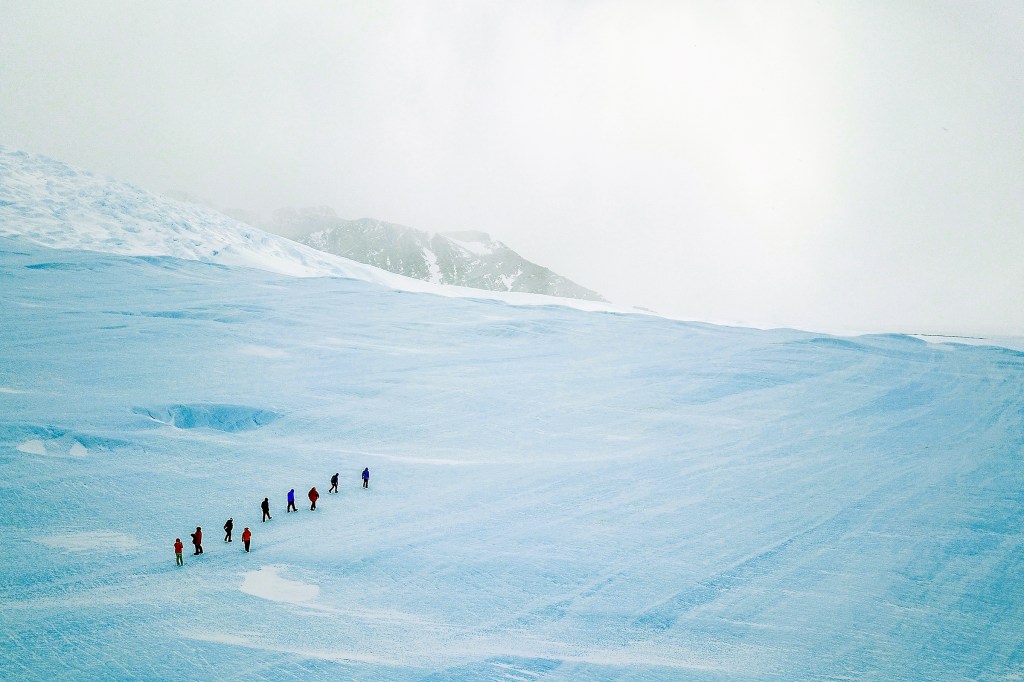
Airbnb is committed to providing the option for sustainable travel to its community at every point of the trip. To further this commitment, Airbnb is working with Ocean Conservancy to use the research findings from the Antarctic Sabbatical to inform educational and advocacy efforts. Airbnb is also conducting an environmental impact assessment to measure and understand our impact and to identify what we can do to reduce our footprint over time. These are foundational steps that will inform future commitments and our vision to be a leader in sustainable travel.
Partnering with Airbnb on the Antarctic Sabbatical is an incredible opportunity to continue our fight against ocean plastic and raise awareness of this issue. Through our annual International Coastal Cleanup, where volunteers not only collect trash from beaches and waterways around the world but also log every item in our global database, Ocean Conservancy has a long history of working with citizen scientists, and we look forward to applying the results of this expedition to global solutions. Janis Searles Jones, CEO of Ocean Conservancy
The Airbnb community values healthy travel, including the 64 percent of guests who chose Airbnb in 2018 because they value that it is an environmentally sustainable travel option* that makes the most of spare space in people’s homes.
guests have checked into eco-friendly Airbnb listings since August 2018**
of Airbnb hosts around the world incorporate green practices into hosting*
increase in bookings for eco-friendly and sustainable Experiences over the past year * *
Together with Ocean Conservancy, we are highlighting the problem of microplastics to encourage a global audience to give great thought to the consequences of how we live and take collective action. While Airbnb is inherently more eco-friendly than other forms of travel given that people are using spaces already built, we need to continue to find ways for the platform to contribute to reducing the impact of humans on the environment. There is far more we need to do and will be looking to do as we go forward. Chris Lehane, Senior Vice President of Global Policy and Communications of Airbnb
The Antarctic Sabbatical follows the Italian Sabbatical , which was an urban regeneration project by Airbnb and Wonder Grottole that offered the opportunity for five volunteers to spend three months living in the historic town of Grottole in southern Italy to help revitalize a community that was facing extinction. The Sabbatical program is designed to inspire people to take advantage of earned time off to give back to the people and places around them for a life-changing experience.
To apply for the Antarctic Sabbatical, visit airbnb.com/sabbatical and complete the application form, terms apply.***
Download the full press release.
* Guest sentiment is based on nearly 12,000 responses to a voluntary survey sent to a sample of Airbnb guest accounts that had taken a trip to select countries in 2018. No payment or other incentive was provided in exchange for completing the survey.
**Based on Airbnb internal data of year-over-year growth globally in guest arrivals to eco-friendly active listings (Eco-friendly listings are defined as the following space types:‘Earth house’, ‘Yurt’, ‘Treehouse’, ‘Tent’, ‘Nature Lodge’, ‘Cabin’) and Experiences bookings, comparing August 1, 2018 to August 1, 2019.
***Before applying, carefully read the selection terms available on the website. Candidates must be over 18, available to travel to Chile and Antarctica for a month from November to December2019 to conduct volunteer work as citizen scientists and be able to speak conversational English. The final selection of five citizen scientists will be announced on October 30. The sabbatical is open to residents in the following countries and regions: Argentina, Austria, Australia, Belgium, Brazil, Canada, Chile, China, Denmark, Dubai, France, Germany, Ireland, India, Italy, Hong Kong, Japan, South Korea, Malaysia, Mexico, Netherlands, New Zealand, Norway, Portugal, Russia, Singapore, South Africa, Spain, Sweden, Switzerland, Taiwan, Thailand, UK, and US.
About Ocean Conservancy Ocean Conservancy is working to protect the ocean from today’s greatest global challenges. Together with their partners, they create science-based solutions for a healthy ocean and the wildlife and communities that depend on it.
About Antarctic Scientist Kirstie Jones-Williams Antarctic Scientist Kirstie Jones-Williams specializes in investigating the impact of microplastics on polar marine zooplankton. She is earning her PhD in Biological Sciences at the University of Exeter in the UK, funded by the NERC GW4+ DTP training program.
Various images and footage courtesy of Antarctic Logistics and Expeditions
5 Research Stations You Can Visit in Antarctica
Apr 6, 2020 | Antarctica Activities , Antarctica Citizen Science & Education , Antarctica Excursions & Sites
Antarctica has no permanent population, but what it does have is a seasonal population of scientists and academics that live in research stations that are scattered across the Antarctic Peninsula, conducting important studies as part of a collective commitment to the education, preservation and conservation of the land.
With over 29 countries represented across the continent, each station maintains a staff ready to maximize their time researching and studying as well as building and maintaining these research stations. There are 70 permanent bases with populations of up to 1200 in peak season in Antarctica. Each station has its own unique design, with a variety of colors and styles of architecture represented, including eco-friendly designs to minimize environmental impact.
Here are a few of the research stations that we often have the opportunity to visit on our trips. Visits to stations are determined based on itinerary and schedule and occur only when weather and conditions allow.
Passengers visiting Brown Station
A drink at the ‘Southernmost Bar in the World’, Vernadsky
Vernadsky Station
Vernadsky Station was established in 1947 by the United Kingdom but transferred ownership to Ukraine in 1996. Named after Russian and Ukrainian mineralogist Vladimir Vernadsky, this station is located at Marina Point on Galindez Island and boasts a lounge that serves as the ‘Southernmost Bar in the World’, as well as a post office where visitors may send mail from Antarctica. The station has been a base for scientific research studies on long-term temperature trends that indicate global warming.
Brown Station
Brown Station is located in stunning Paradise Harbour and is the location of a gentoo penguin colony and a lookout point 300 feet above the station. This station was established in 1951 by Argentina and was developed for research programs such as biology, bacteriology, ecology, oceanography, and a slew of other sciences. Throughout the years of observation here, the Argentine Antarctic Institute has published more than 100 scientific papers on a variety of topics.
González Videla Base
Located at Waterboat Point in Paradise Bay, this base was named after Chilean President Gabriel González Videla, who, in the 1940s, became the first chief of state of any nation to visit Antarctica. It’s a small station and even at the height of the summer season, there is only up to 16 people living there. Waterboat Point is an official historic site under the Antarctic Treaty and it was here that the first scientific study on penguin breeding was conducted.
Cámara Station
Located on Half Moon Island in the South Shetland Islands and established by Argentina in 1953, this base is identifiable by its black tower with yellow stripes and is considered small, housing just up to 36 people during the summer months only. These scientists carry out observations of surface meteorology, birds, and the impacts of local tourism, and there have also been studies of oceanography and geochronology held here.
Carlini Base
Formerly known as Jubany Base, Carlini is an Argentinian scientific research station located on King George Island in the South Shetland Islands. This base operates year-round with a staff of up to 100 people and has laboratories for meteorology, seismography, biology, and oceanography as well as a heliport, radio station, movie theater, and freezing chamber. In December 2013, rock band Metallica performed a concert at the base that was streamed worldwide.
On an interesting note, you will never see abandoned or empty research stations. As part of the Antarctic Treaty, should a base close down, the country wishing to discontinue its presence is responsible for removing all structures and returning the area to its original conditions. As you can imagine, this would be a financial and logistical hardship, so all stations remain operational, even if it means having limited staff.
A visit to one (or more) of these fascinating and important stations is always on our agenda, though weather and conditions will dictate if we can make landfall. If you are lucky enough, you’ll get to rub elbows with scientists and workers conducting important research in some of the most remote outposts in the world.
Interested in booking a voyage to Antarctica with us?
Contact your preferred travel professional or reach out to us here .
Featured Posts
Staff profiles, recent posts.
- Unveiling Our Antarctica 2025-26 Season
- Immersive Photography with Ami Vitale
- 2023 In Review and What’s Ahead for 2024
- Meet Oceanites – Our New Scientific Penguin Counting Friends
- Cross The Antarctic Circle with Polar Expert Dr. John Shears
Posts by Category
- Antarctica Activities
- Antarctica Citizen Science & Education
- Antarctica Cruises
- Antarctica Excursions & Sites
- Antarctica History
- Antarctica Wildlife
- Meet Our Polar Guides & Staff
- Planning Your Antarctica Trip
These new cruise ships have their own submarines and allow guests to learn from scientists on voyages to Antarctica. See what it's like onboard.
- Two expedition cruise ships are offering people the opportunity to cruise Antarctica and the Arctic.
- Participants will be able to learn from the scientists onboard.
- The vessels will also carry research labs, submarines, and expedition equipment.
The two new ships will sail to Antarctica, the Arctic and the Great Lakes.
The Viking Octantis and Viking Polaris — part of Viking Cruises' new expedition fleet — have an onboard lab, submarines, and a host of expedition equipment.
Each ship, which has to be small enough to navigate remote areas, has 189 staterooms, accommodating up to 378 guests.
The staterooms, equipped with sunrooms that convert into al fresco viewing platforms, range from 222 square feet to 1,223 square feet.
According to Viking's chairman, Torstein Hagan, the expedition ships are equipped to allow people to explore "the world's most pristine destinations in the most responsible way possible."
The ships are active research units. Resident scientists have the use of a 430 square foot laboratory complete with wet and dry facilities, a sample processing area, fume cupboard and freezer.
Guests will also have supervised access to the lab facilities to work alongside the experts.
The onboard expedition programme will allow guests to learn from resident scientists en route to their destination.
A team of over 25 experts, including expedition teams, photographers, submarine pilots, and researchers from Cambridge University and The Cornell Lab of Ornithology will be assigned to each expedition.
"The Aula" — a panoramic auditorium inspired by the University of Oslo's ceremonial hall where the Nobel Peace Prize has been awarded — is designed specifically for lectures.
According to Dr. Damon Stanwell-Smith, Viking's head of science and sustainability, guests will be able to participate in experiments such as weather balloon releases in collaboration with the National Oceanic and Atmospheric Administration (NOAA).
Expedition equipment including Arctic-tested kayaks, 12-seater convertible rigid inflatable boats (RIBs), and a fleet of military pro zodiacs, are kept in the Hangar, an onboard marina located just below the lab ...
... enabling guests to set off on fieldwork when they arrive at the shores of Antarctica, the Arctic or the Great Lakes.
The ships will also each host two, six-guest submarines, with revolving seats and 270-degree spherical windows.
Each ship is stocked with expedition kit including necessities such as boots, binoculars, waterproof trousers, safety equipment, and skis.
The expedition itineraries — which last between 8 and 47 days depending on the destination — start from $5,995 per person, rising to as much as $136,000 for a 13-day cruise to the Arctic from Tromsø, Norway, according to the company's website.
Viking Octantis, which set sail in January, recently completed its maiden voyage, cruising from Ushuaia, Argentina, to Antarctica for six days of exploration.
Viking's second ship, Viking Polaris, which is in its final stages of construction, is due to set sail in August, cruising to the Arctic and Antarctica on maiden voyages.
- Main content
Click here for details on our COVID-19 health and safety protocols.
Travel the world. make a difference..
Earthwatch expeditions pair researchers with volunteers to address some of the world’s most pressing environmental challenges. Explore our current expeditions to discover how you can make a difference.
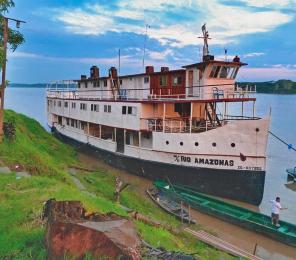
Help conserve wildlife within the Amazon Basin as you search for pink river dolphins, macaws, and other iconic species.

How much can the humble caterpillar tell us about the world we live in? More than you might imagine.
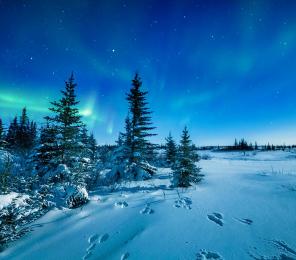
Scientists expect to see the greatest effects of climate change in the Arctic. But what, exactly, will these effects be?

Amongst the lush forest, help study bees, hummingbirds, and pollinators critical to ecological health.
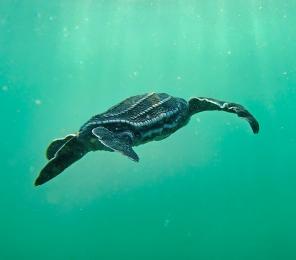
Why have Pacific leatherback sea turtles almost disappeared? Look for answers and solutions on Costa Rica’s beaches.

CUSTOM EXPEDITIONS FOR GROUPS
Explore the world together. Our expert staff can coordinate a meaningful experience for school groups, corporate employees, alumni associations, community groups, or other affiliations.
Learn more about group expeditions
Be more than a tourist
I highly recommend this expedition. I loved every minute of it. David was very passionate about the whales and dolphins and Golfo Dulce. Suzanne Thompson — Marine Life Conservation in Costa Rica
Our Research Focus

Sustainable Cities and Communities
Collect essential environmental data to promote urban resiliency while helping to influence positive change.
More about Sustainable Cities and Communities
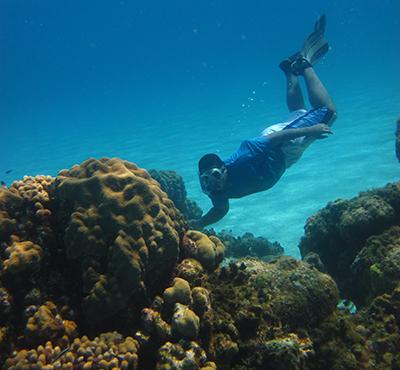
Ocean Ecosystems
Take action to protect marine habitats, conserve biodiversity, and promote sustainable livelihoods.
More about Ocean Ecosystems
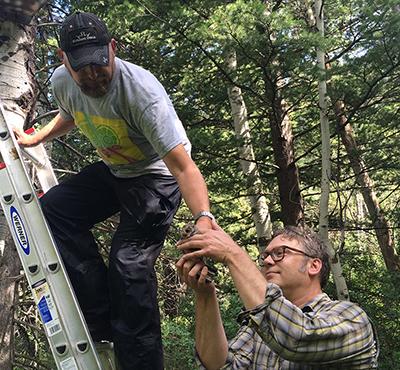
Terrestrial Ecosystems
Preserve and restore forests, assess and mitigate the impacts of a changing climate, and conserve biodiversity.
More about Terrestrial Ecosystems
- Search Please fill out this field.
- Manage Your Subscription
- Give a Gift Subscription
- Newsletters
- Sweepstakes
There's a Brand-new 30-day Antarctica Trip Departing in January 2024 — Here's How to Get on Board
The trip, a partnership between Ponant and the Explorers Club, is a research expedition, but leisure travelers are welcome.
:max_bytes(150000):strip_icc():format(webp)/StefanieWaldek-38071ba574ea46c2ac94e15fa18dc581.jpg)
If you haven't yet been to Antarctica , there's an upcoming sailing you might want to book as your next big trip. French luxury cruise line Ponant has partnered with the illustrious Explorers Club on a 30-day sailing to Antarctica departing in January 2024.
Olivier Blaud/Courtesy of Studio PONANT
Founded in 1904, the Explorers Club comprises illustrious figures across exploration and science. Ponant takes guests to the farthest reaches of the world on a fleet of small (but highly luxurious) expedition ships, making it the perfect partner for the exclusive society. The two have teamed up on a series of 12 expeditions across five continents in the name of research and adventure. The first, of course, is the 30-day Antarctic exploration.
Gilles Trillard/Courtesy of Studio PONANT
The Antarctica voyage, which runs from January 7 through February 5 next year, will study the effects of climate change on Antarctic glaciers. It'll be taken aboard Ponant's flagship Le Commandant Charcot, an icebreaker with an onboard laboratory, sailing from Argentina to New Zealand — with a half-circumnavigation of Antarctica that crosses the Antarctic Circle. Fittingly, the trip will be led by glaciologist and geologist Dr. Ulyana Horodyskyj Peña, whose research on glaciers has taken her from the Arctic to the Himalayas. Science activities for guests will range from discussions to workshops (snow sampling, for example, is on the docket). And, of course, as this is an expedition, there will be plenty of off-ship activities, too. Highlights include hiking, snowshoeing, kayaking, and Zodiac cruises.
"Both Ponant and the Explorers Club are founded on principles of exploration with a deep respect for scientific research whose studies aim at preserving our oceans, the environment, and climate," Navin Sawhney, Ponant's CEO of the Americas, said in a statement. "The Explorers Club’s members have been responsible for a series of famous 'firsts,' including first to the South Pole, so it felt fitting for Antarctica to be the inaugural expedition on board our polar exploration vessel, Le Commandant Charcot ."
Rates for the 30-day itinerary start at $50,550 per person and can be booked at ponant.com .
Related Articles

- Science →
Current Science
- Long-Term Science
- Antarctic Science Platform
- Scholarships
- Logistics Support Request
- The New Zealand – Australia Antarctic Science Conference 2023
- Adélie Penguin Census
- Scott Base →
- Webcams and Weather
- Our Facilities
- Scott Base Redevelopment
- Travelling to Antarctica
- Environment →
- Environmental Protection
- Protecting Special Areas
- Comprehensive Environmental Evaluation
- Jobs →
- Education →
- Education Hub
- Media →
- Community Engagement Programme
- Winter School
- Photo Library
- About Us →
- Tiriti O Waitangi
- Partnerships
- Policies & Publications
- Official Information Act
- Contact Us →
- Supplier Information
- COVID-19 Requirements

Each summer season, between October and February, around 100 scientists and technicians travel to Antarctica and the Southern Ocean to conduct research. Other scientists carry out Antarctic research from New Zealand using remote technology and by tapping in to sample and data archives.
The scientists that work out of Scott Base come from all of the New Zealand universities, key Crown Research Institutes and private research organisations, and their teams often include international collaborators.
Increasingly, scientists are travelling further afield from Scott Base with the support of Antarctica New Zealand. These trips into the “deep field”, up to 1000km from Scott Base, are required to get to the places where change is happening the fastest; places such as the northern extent of the Ross Sea, and the edges of floating ice shelves.
2023/24 science
New Zealand’s Antarctic Science Programme is driven by the Government’s science strategy for Antarctica and the Southern Ocean. Events for this season are grouped into strategic themes.
Science outcomes
We would like to acknowledge the support from funding agencies including the Ministry of Business, Innovation and Employment; the Antarctic Science Platform; the New Zealand Antarctic Research Institute; the Marsden Fund; the Deep South National Science Challenge. We also acknowledge the contributions from partnering research institutions including GNS Science; Manaaki Whenua Landcare Research; NIWA; Cawthron Institute; University of Otago; University of Canterbury; Victoria University of Wellington; University of Waikato and University of Auckland.
Protect Your Trip »
The 7 top antarctica cruises for 2024 + tips from an expert.
Plan your next epic adventure to the White Continent.
The Top Antarctica Cruises

Yuri Matisse Choufour | Courtesy of Hurtigruten Expeditions
Experience otherworldly beauty on an Antarctica cruise.
An expedition to Antarctica is a once-in-a-lifetime adventure for intrepid travelers who want to explore this remote destination at the bottom of the world. The landscapes are surreal, with eerily blue icebergs, towering ice-capped mountains, dramatic weather conditions that change within seconds and species of wildlife that exist nowhere else on Earth – it's hard to imagine until you've made the long journey yourself.
The fifth-largest continent is home to the largest ice sheet on the planet, the Antarctic Ice Sheet, as well as the Transantarctic Mountains, with peaks soaring more than 14,700 feet into the sky. West Antarctica has volcanoes that are part of a tectonically active area around the Pacific Ocean known as the "Ring of Fire." This incredibly diverse and magical part of the world also has the coldest temperature ever recorded at -135.8 degrees Fahrenheit in 2010.
U.S. News has compiled a selection of seven different Antarctic experiences to help you plan your bucket list adventure to the White Continent.
Book an Antarctica cruise on GoToSea , a service of U.S. News.
Atlas Ocean Voyages: 11-night Ushuaia Roundtrip

Courtesy of Atlas Ocean Voyages
This 11-night expedition with Atlas is available on several dates in 2024. One highlight of the voyage is crossing the Antarctic Circle, along with four days exploring Antarctica and two days spent in the South Shetland Islands. You'll also have two days en route to Antarctica and two days on the return trip on the famed Drake Passage – also known as the "Drake Lake" (on smooth days) or the "Drake Shake" (when the seas are rough).
During your days at sea, take in all the onboard lectures and films about Antarctica, and head outside on the decks to see petrels and albatrosses soaring overhead. This is the perfect opportunity to practice your photography skills before reaching the Antarctic Peninsula, where you want to take nothing but pictures and leave nothing but footprints.
Atlas' Jan. 14 expedition is on the line's newest ship, World Voyager. The purpose-built yacht-style vessel features a hydro-jet propulsion system that's quieter and less disruptive to the fragile ecosystem. This feature also provides the opportunity for guests to see more wildlife during up-close encounters. Pricing is all-inclusive on board the ship with free open bars; all meals, wines, spirits and craft beers; a stocked in-room minibar; all landings, Zodiac excursions and lectures; the use of kayaks, walking sticks, knee boots and binoculars; and a souvenir Atlas jacket to take home. Fares also include a one-night pre-cruise stay and private charter jet service round-trip from Buenos Aires to Ushuaia, Argentina.
Aurora Expeditions: Antarctic Peninsula in Depth

Tyson Mayr | Courtesy of Aurora Expeditions
Aurora offers a 14-night Antarctic intensive voyage sailing round-trip from Ushuaia on Nov. 6, 2024, aboard the 132-passenger purpose-built expedition ship Greg Mortimer. This vessel was the first passenger ship to utilize the state-of-the-art Ulstein X-BOW, which provides a smoother, quicker and more efficient transit across the ocean. The ship also incorporates many environmentally conscious features, including low energy consumption and virtual anchoring, which protects the sea floor and minimizes damage caused by traditional anchors.
Guests will find expansive observation decks and hydraulic viewing platforms for optimal wildlife viewing on board. Other highlights of the expedition are nine full days to explore the Antarctic Peninsula in nearly 24 hours of daylight at the peak of summer. During this time, you can expect to see whales arriving to feed on the plentiful krill, fur seal pups and many entertaining penguins.
Prices are mostly all-inclusive, with a one-night hotel stay before boarding the ship; all meals, snacks and complimentary nonalcoholic beverages; beer and house wine at lunch and dinner; the use of Muck Boots for the expedition; all shore excursions and Zodiac cruises; educational lectures; and more. Adventurous explorers can add on activities (at an additional cost) such as sea kayaking, snowshoeing, camping, and skiing or snowboarding. The line also offers longer 20- to 24-day expeditions that include South Georgia Island.
Read: Sustainable Cruises: The Top Lines Making Progress
Hurtigruten Expeditions: Antarctica, Patagonia and Chilean Fjords Expedition

Dan Avila | Courtesy of Hurtigruten Expeditions
For an extended adventure that includes crossing the Drake Passage twice, spending up to five days in Antarctica and then landing on Cape Horn in Chile (weather permitting), consider the 25-night grand expedition cruise aboard the Hutrigruten Expeditions' MS Roald Amundsen. Additional highlights are scenic cruising in Garibaldi Fjord in Alberto de Agostini National Park to see the Garibaldi Glacier; visiting the town of Puerto Natales, the gateway to Torres del Paine National Park ; and seeing the longest Southern Hemisphere glacier outside of Antarctica (which grows by as much as 150 feet a day), the Pio XI Glacier in Bernado O'Higgins National Park. This epic adventure begins March 9, 2024, in Buenos Aires and ends in Valparaíso, Chile.
The ship for the voyage, MS Roald Amundsen, is a hybrid vessel that reduces CO2 emissions by using electrical propulsion – and it's designed specifically for use in polar waters. The vessel carries just 500 guests (to adhere to regulations for visiting Antarctica) and features all exterior cabins with Scandinavian inspired decor. Guests will also find an Explorer lounge and bar, three dining venues, the Science Center, a sauna and spa, and other amenities. Fares are mostly all-inclusive, covering a complimentary expedition jacket; the use of expedition equipment like boots and trekking poles; landing activities; most dining options; and wine, beer and soft drinks at meals.
Lindblad Expeditions – National Geographic: Journey to Antarctica: The White Continent

Ralph Lee Hopkins | Courtesy of Lindblad Expeditions
Lindblad Expeditions was the first company to bring citizen explorers to Antarctica in 1966, pioneering travel to this remote destination. The line's 13-night expedition to Antarctica is offered nearly 20 times throughout the summer season in 2024 on one of three ships. Depending on the ship, guests will have one evening in either Buenos Aires or Santiago, Chile , before flying to Ushuaia the next morning to embark the vessel.
With about five days to explore Antarctica, you'll have time to take in the awe-inspiring landscapes and look for seals and blue-eyed shags up close from Zodiacs. On land, watch thousands of Adélie and gentoo penguins as they playfully slide down the snow-covered hills on their bellies – one right after the other – diving headfirst into the icy waters. After the adventure, a private charter flight will return you to either Buenos Aires or Santiago before your return flight home.
The line's newest expedition vessel, National Geographic Resolution, accommodates just 138 guests – and there are two new cabins for solo cruisers . Guests on the Polar Class 5 vessel will have a National Geographic photographer and a Lindblad-National Geographic-certified photo instructor and video chronicler documenting the trip. Onboard amenities include a yoga studio, a wellness specialist, infinity-style hot tubs, two restaurants and a chef's table, and plenty of indoor and outdoor viewing areas. This ship also carries an ROV (a remotely operated vehicle) for underwater exploration and other high-tech video gear.
You can even book an overnight stay in an igloo (on a first-come, first-served basis) and spend the evening under the polar sky. Fares are mostly all-inclusive and include all onboard meals and most meals ashore; nonalcoholic and alcoholic beverages; transfers; excursions; a complimentary jacket; and more.
Silversea: King George Island to King George Island (Antarctica Bridge)

Courtesy of Silversea
Silversea's six-night Antarctica Bridge expedition takes guests round-trip by a business class flight directly to the Antarctica Peninsula, flying into King George Island from Punta Arenas, Chile. This itinerary is offered several times throughout the season for guests who don't have extensive time to travel – or are nervous about sailing the Drake Passage. Silversea 's pricing is all-inclusive, and guests can choose between door-to-door or port-to-port fares.
While the weather determines the specific itinerary in Antarctica, guests can expect to have several excursions in the Antarctic Sound and as many as nine excursions on the Antarctic Peninsula that include hiking, kayaking and scenic Zodiac cruises with the expedition team. There's also one excursion in the South Shetland Islands, where you can look for massive elephant seals. There will be an abundance of bird and animal viewing on wildlife-rich King George Island, the largest of the South Shetland Islands, which is home to Adélie, chinstrap and gentoo penguins as well as Weddell and leopard seals.
Oceanwide Expeditions and Swoop Antarctica: Quest for the Emperor Penguins of Snow Hill Island

Getty Images
Swoop Antarctica's 10-night adventure-filled journey takes wildlife and history enthusiasts into the ice-choked waters of the Weddell Sea, past towering tabular icebergs, in search of the emperor penguin's rookery on Snow Hill: one of the most remote penguin rookeries on the planet. The incredible itinerary also sails through the same waters where famed Antarctic explorer Sir Ernest Shackleton's ship, the Endurance, sank in 1915 – and to the rarely seen west slopes of the Antarctic Sound.
Other highlights include Zodiac and helicopter landings (weather permitting) to additional remote locales, including Seymour Island, where the Swedish Antarctic Expedition of 1901 to 1904 spent a winter season; Brown Bluff, one of the most scenic places on the northern tip of the Antarctic Continent and home to a large Adélie penguin rookery; and the volcanic crater of Deception Island.
There are two sailings in November 2024 on board the 1A-class, ice-strengthened Oceanwide Expeditions' Ortelius: a 108-passenger former Russian research vessel. Fares includes all meals and nonalcoholic beverages, all Zodiac and shore excursions, educational lectures, helicopter transfers, and group transfers. Optional adventure activities, alcoholic beverages and other personal expenses are at an additional cost.
The onboard helicopter pad is one of the features of the vessel and is used on select expeditions in the Weddell and Ross seas. It's important to note that very few companies offer expeditions to the Weddell Sea that include Snow Hill Island. While Ortelius is not a luxury vessel like other ships mentioned in this list, it is a stable expedition-style ship built for these icy – and at times treacherous – waters and weather conditions.
Viking: Antarctica & South Georgia Island

Courtesy of Viking
Viking's 18-night Antarctica and South Georgia Island expedition begins with an overnight stay in Buenos Aires followed by a flight the next morning to Ushuaia, the southernmost city in the world. The first two stops on the expedition are in the Falkland Islands, where you'll find beautiful scenery with imposing cliffs, many types of marine birds and five species of penguins. In South Georgia, watch for king penguins and seals. Then, it's on to Antarctica for days 12 through 16. Guests will have the option to reserve a spot on the Viking DNV-classed submarine for a thrilling journey into the depths of the frigid waters in Antarctica. The return sailing, by way of the Drake Passage, disembarks in Ushuaia.
In 2024, this itinerary is available Jan. 31 and again Dec. 15 on Viking Octantis. The purpose-built Polar Class 6 vessel accommodates up to 378 guests and offers many of the same venues found on Viking's ocean ships, including the Explorers' Lounge, World Café, Mamsen's, Manfredi's Italian Restaurant and the Nordic Spa. There are also expedition-specific features, such as Expedition Central, the Science Lab and – for educational lectures and briefings – the Aula theater. Viking's fares are mostly all-inclusive, with all meals and wine and beer served with lunch and dinner; 24-hour specialty teas, coffees and nonalcoholic beverages; a keepsake Viking jacket; complimentary use of the excursion gear; and more.
Find an Antarctica cruise on GoToSea.
Tips on Trips and Expert Picks Newsletter
Travel tips, vacation ideas and more to make your next vacation stellar.
Sign up to receive the latest updates from U.S News & World Report and our trusted partners and sponsors. By clicking submit, you are agreeing to our Terms and Conditions & Privacy Policy .
Expert tips on Antarctica expeditions
There are many factors to consider when planning an Antarctica expedition, including where you want to travel to, the length of the trip and whether you want to sail the famed Drake Passage twice.
To provide helpful insights and information to plan your trip, U.S. News reached out to an expert in the region, Aurora Expeditions' expedition leader, Ashley Perrin , for tips on planning your adventure to the White Continent. Perrin has degrees in both geography and oceanography from the University of Southampton. She was appointed as the first woman boating officer in Antarctica by the British Antarctic Survey in 2009, and has led multiple expeditions to Antarctica, South Georgia and the Falklands.
Which month is best (in your opinion) to travel to Antarctica and why?
Perrin: "My favorite time to travel to Antarctica is the end of December or beginning of January, because the penguin chicks are starting to come out and you get the most wildlife spotting opportunities, with marine mammals, penguins and albatross – on top of the spectacular scenery."
What length of trip do you recommend for first-time visitors?
Perrin: "The 10- to 12-day Spirit of Antarctica or Antarctic Explorer (with Aurora Expeditions) is a fantastic introduction to the Antarctic Peninsula. If you had the additional time and opportunity, ideally you would also opt for a voyage that visits South Georgia. For many travelers, this is really the jewel in the crown of the Antarctic experience because of the incredible wildlife opportunities here."
What should you look for in an expedition ship/tour when planning a trip to Antarctica?
Perrin: "Travelers should look for a high-quality educational experience, including lectures and opportunities for Citizen Science. This is such a fascinating and important destination, and you want to ensure you can learn and take as much in as you can. A pivotal factor in this is also choosing a company that offers low passenger numbers.
"Travelers don't have enough of an understanding of the impact of this on their voyage. In the Antarctic Peninsula only 100 people are allowed on land at one time, while at some sites it is 30 to 50 people. Having smaller groups enables passengers to have more time off ship exploring and connecting with nature, and this has such a significant impact on your experience.
"If you like to be a little more active, I would also highly recommend an operator that offers activities, such as kayaking in Antarctica. This allows you to see Antarctica from a different viewpoint and the silence is amazing. You still have opportunities to do landings as well, so I think it's the best of both worlds."
Do you prefer the combination fly/sail for the Drake Passage or sailing the Drake Passage both ways?
Perrin: "I prefer to sail both ways as it's how you earn your right to get to Antarctica! You also get more opportunities to see wildlife like seabirds, and it gives you extra time to prepare for the Antarctic experience through pre-lectures and education. Travelers arrive with more of an understanding of what to expect."
Any other tips, advice or comments you'd like to share?
Perrin: "Do your research into the operator you are choosing and their different offerings – things like passenger numbers, expedition team experience and off ship activities – as these can all have a significant impact on the travel experience. There is also a big difference between traditional cruise operators and expedition operators and what travelers can expect. We ensure that our passengers are exploring and getting off the ship as much as possible.
"I would also add that it's important to do your research into the areas that you're most interested in. For example, it could be history, exploration and walking in someone's footsteps (such as Sir Ernest Shackleton), or the types of wildlife you might see. Having a deeper understanding of the history and the region really does enhance the experience once you are there."
Frequently Asked Questions
An expedition where you get off the ship and make landings on the Antarctic peninsula typically costs about $10,000 per person for a 10-night voyage. However, depending on the cruise line, the ship and dates of travel – and whether you sail or fly the Drake Passage – you could spend as much as $29,000 per person for a 12-night expedition or more. There are slightly lower prices for some expeditions, such as a few with Hurtigruten Expeditions, and you can find reduced fares and deals with lines like Atlas Ocean Voyages and Quark Expeditions. In addition, there are extended polar expeditions that range from a 14-night trip to the 94-night Pole-to-Pole Ultimate Bucket List Expedition Cruise with Hurtigruten Expeditions, which is priced at close to $48,000.
If you're not interested in getting off the ship in Antarctica to see penguins and seals up close (but no closer than 15 feet, according to the Antarctic Treaty), you can opt for a voyage on a large cruise ship that sails around the continent for a much lower cost. Just know that you won't be able to disembark at any point in Antarctica. For example, Norwegian Cruise Line has a 14-night Antarctica and South America voyage that makes a round trip from Buenos Aires, Argentina, for as low as $999 per person. You may be able to find even cheaper fares from lines such as Celebrity Cruises or Princess Cruises.
It's important to note that by the rules set forth in the Antarctic Treaty, only ships carrying 500 or less passengers are permitted to make landings on the Antarctica peninsula. The Antarctic Treaty, along with the International Association of Antarctica Tour Operators, has strict conservation protocols and regulates that no more than 100 passengers are allowed to go ashore at one time. The IAATO works with more than 100 Antarctica outfitters to create the guidelines and safety procedures to protect the fragile environment and wildlife in this remote part of the world.
The following cruise lines offer small ship expeditions in Antarctica with no more than 500 passengers. You can also look at tour companies – such as Abercrombie & Kent, G Adventures, Adventure Life and Swoop Antarctica – that exclusively charter ships or help navigate the decision-making process for their clients and book individual expeditions with the cruise lines.
- Atlas Ocean Voyages
- Aurora Expeditions
- Hapag-Lloyd Cruises
- Hurtigruten Expeditions
- Lindblad Expeditions – National Geographic
- Quark Expeditions
- Scenic Luxury Cruises & Tours
- Seabourn Cruise Line
These larger cruise lines offer sailings around the Antarctic Peninsula, which may include scenic cruising in and around the Gerlache Strait, Elephant Island, Paradise Bay and Schollart Channel.
- Celebrity Cruises
- Holland America Line
- Norwegian Cruise Line
- Oceania Cruises
- Princess Cruises
- Regent Seven Seas Cruises
- Royal Caribbean International
The answer depends on the expedition. The majority of passengers will depart from South America in either Ushuaia, Argentina – which is also known as the "End of the World" – or Punta Arenas, Chile. Then it will take approximately two days to cross the Drake Passage to reach the Antarctic Peninsula. Some lines also offer chartered flights from Punta Arenas to Antarctica, which only take about two hours. Some passengers who have taken the flight say it can be as unnerving as sailing the Drake Passage, since weather conditions can delay the flight for up to several days where you could potentially miss the trip.
Cruises on larger ships that only sail around the Antarctic Peninsula may embark in Buenos Aires; Santiago, Chile; Puerto Williams, Chile; Rio de Janeiro; ports in Florida or New Zealand; or even the South Shetland Islands.
The expedition and cruise season to Antarctica extends from November to March, which is during the austral summer in the Southern Hemisphere. But Antarctica is still the windiest, coldest and driest continent on Earth, so weather conditions are unpredictable and can change quickly – even during the summertime. One minute the sun may be out, and the next minute it can be snowing and extremely windy and cloudy.
Visitors in November can expect temperatures between a low of 25 degrees to a high of 32 degrees Fahrenheit. The warmest temperatures are typically in January, when you'll find days ranging between 33 to 36 degrees before they start to drop again in February.
Most expedition companies provide jackets that you can take home, so you won't need to bring a heavy parka if it's given to you on board. They may also provide waterproof boots that you'll need to use for wet landings. It's best to check with your expedition line to see what's available on the ship, what you can rent or buy, and what you'll need to pack and bring with you. Due to the unpredictable weather, it's advisable to bring different types of layers.
Here are some of the items you'll want to pack:
Layers: Pack at least two top and two bottom quick-drying base layers (or more, depending on the length of your expedition) that wick moisture, such as those made of silk, wool or bamboo. It does get toasty when you're layered up and moving around ashore, so choose lightweight options that will layer easily under the rest of your clothing and keep you warm and dry. For your mid-layer top, go with a lightweight polar fleece or vest; for the bottom, quick-drying warm tights or fleece pants are a good option.
You'll also want to layer what's on your feet, starting with a wicking pair of socks made from silk or synthetic polypropylene, followed by a good pair of merino wool socks from a brand like Smartwool. Glove liners are another must, especially if your hands tend to get cold. If you can, buy insulated waterproof gloves with removable liners to save packing an extra item. You may also want to toss a few hand and foot warmers in the suitcase in case you need extra warmth. Bring a lighter pair of insulated gloves for warmer days off the ship.
And don't forget a lined wool beanie, a set of earmuffs, and a balaclava or fleece neck gaiter to keep your ears and face warm and your nose and mouth protected from the cold air and wind.
Waterproof gear: The parka and tall waterproof boots may be provided on the ship, but if they're not, you'll need to bring your own. You'll also need wind- and waterproof pants to go over your base layer and mid-layers. If they're tapered at the bottom, you should be able to tuck them into your boots. Perrin says this is one of the most important items you should purchase and pack for your expedition.
Comfy clothes and shoes for around the ship: Most people dress casual on Antarctica cruises, so bring clothes that will be comfortable for days and evenings around the ship. It can get rough when crossing the Drake Passage, so you'll want flat or low-heeled shoes for those days at sea.
Other items you'll want to pack:
- Waterproof dry pack
- Sea-Bands and medications for motion sickness
- Camera and accessories with a waterproof cover
- Hiking poles (unless the ship has them available)
- Swimsuit (you may want to take the polar plunge!)
- Other necessary medications
- Hydrating lip balm and a good protective moisturizer
- Polarized sunglasses
- Books on the history of early exploration in Antarctica and the incredible wildlife
Why Trust U.S. News Travel
Gwen Pratesi has been an avid cruiser since her early 20s. She has sailed on nearly every type of cruise ship built, including the newest megaships, paddle-wheelers on the Mississippi River, and an 18-stateroom river ship on the Mekong River in Vietnam and Cambodia. She has also cruised on a traditional masted sailing ship and on a small luxury expedition vessel in Antarctica crossing the notorious Drake Passage twice. Pratesi covers the travel and culinary industries for major publications including U.S. News & World Report.
You might also be interested in:
- Cruise Packing List
- Alaska Cruise Packing List
- The Best Alaska Cruise Lines
- The Best Time to Cruise to Alaska
- The Best Cruise Insurance Plans
Tags: Travel , Cruises
World's Best Places To Visit
- # 1 South Island, New Zealand
- # 4 Bora Bora
If you make a purchase from our site, we may earn a commission. This does not affect the quality or independence of our editorial content.
You May Also Like
The 15 best chicago tours for 2024.
John Rodwan May 1, 2024

The 10 Best Harry Potter Tours in London
Marisa Méndez April 30, 2024

12 Cheap Fourth of July Getaways
April 29, 2024

The Best Tours of Buckingham Palace
Laura French April 29, 2024

Flight Canceled or Delayed? What to Do
Amanda Norcross April 26, 2024

The Best Beach Hats
Megan Johnson and Sharael Kolberg April 26, 2024

The Best Florence Tours
John Rodwan April 25, 2024

The 9 Best Louisiana Swamp Tours of 2024
John Rodwan April 24, 2024

How Much Does a Cruise Cost?
Gwen Pratesi April 24, 2024

The Best Whale Watching in Cape Cod
Lyn Mettler April 24, 2024


TRAVEL to ANTARCTICA – Tips and Information Guide (2024 Update)
Here is our complete guide to tell you everything you need to know to travel to Antarctica, based on our experiences of visiting and working on the White Continent six times.
It may just be the number one bucket list adventure for millions of people around the world – travelling to Antarctica!
The remoteness and expense of this incredible destination makes it an unrealised dream for many, but we’re here to help you on your journey to experience it for yourself!
The White Continent is a truly unique place. From its phenomenal landscapes to diverse wildlife, nowhere else on the planet comes close to its beauty.
And that’s not the only things that make it unique. From a political point of view, did you know that there it is the only continent on earth with no official government and no permanent residents?
That’s because in 1959 a couple of countries signed a treaty that over 40 nations follow to this day.
Visiting Antarctica is an experience that everyone should have at least once in their lifetime.
Whether you would love to hang around with emperor penguins or go kayaking in the company of humpback whales , or perhaps even climb one of the world’s seven highest summits, there are plenty of reasons to want to pack your bags and t ravel to Antarctica !
So read carefully and find out why you should stock up on chocolate, what you should bring on your expedition and how to make the most of your trip!
Antarctica Travel Guide
We’ve been lucky enough to travel to Antarctica 6 times, with more trips booked in the near future, and we can safely say it was by the far the most incredible place we have ever visited.
That being said, it’s not an easy trip to make, and it’s especially not a cheap one, so if you’re lucky enough to have the opportunity to embark on a voyage, you’ll be one of only 100,000 people a year that actually visit!
In order to get the most out of your trip you need to be well prepared, so make sure to read through our detailed and informative Antarctica Travel Guide .
After our very successful tour to Antarctica this season, we are going to be running another exclusive adventure down to the Peninsula in 2025, this time crossing the Antarctic Circle! Check out the tour page if you’d like to learn more.
Planning on exploring other parts of the polar regions? Don’t miss our brand new complete guide to help you travel to South Georgia !
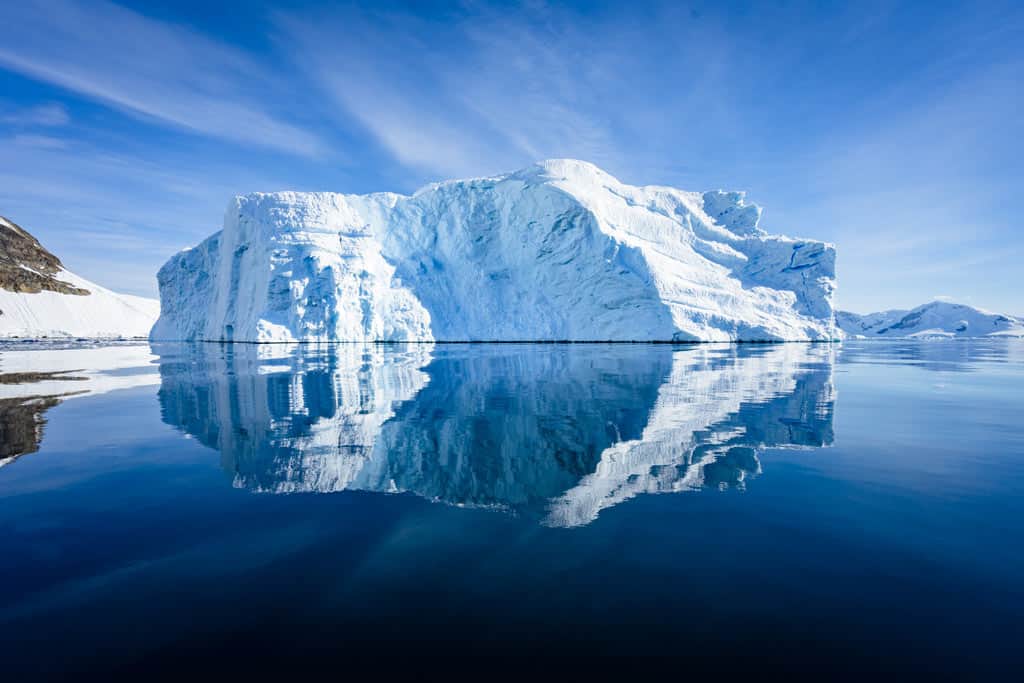
Best Antarctica Cruise – Ultimate Guide to Who & How [2024]
17 awesome things to do in antarctica (2024 guide), quark ultramarine review – best polar expedition ship [2024], travelling in antarctica: at a glance.
Here are the basics about travel to Antarctica.
Main Destinations
South Shetland Islands, Port Lockroy, Errera Channel, Lemaire Channel, King George Island
Primarily USD on ships.
ENTRY / VISA:
Visitors to Antarctica do not require a visa, however permits are necessary. These will be acquired on your behalf by the tour operator you are travelling with.
English, Spanish, Russian and others depending on the bases.
Travelling to Antarctica comes with inherent risks such as cold weather exposure and possible wildlife encounters. The remoteness of the destination means medical assistance is not instant. All tour operators have trained medical professionals onboard and will mitigate risks to the best of their ability.
ELECTRICITY:
Depends on the ship you are travelling on.
TRANSPORTATION:
The only commercial airport is on King George Island, with charter flights available from Punta Arenas, Chile. Transport around the continent for tourists is primarily done onboard expedition ships and zodiacs.
Don’t Forget to Pack the Most Important Thing: Travel Insurance !

TOP 5 TRAVEL EXPERIENCES IN ANTARCTICA
With so much to see and do in Antarctica, it really is hard to pick the top experiences.
However, we think that to truly appreciate Antarctica you need to plan to do these 5 activities during your visit.
Step Foot on the Continent
The quintessential experience for anybody visiting Antarctica is to officially step foot on the seventh continent. Make sure you book a tour on a ship that carries less than 500 people (less than 200 ideally) to ensure you can do this.
See our recommended Antarctica cruise operators here .
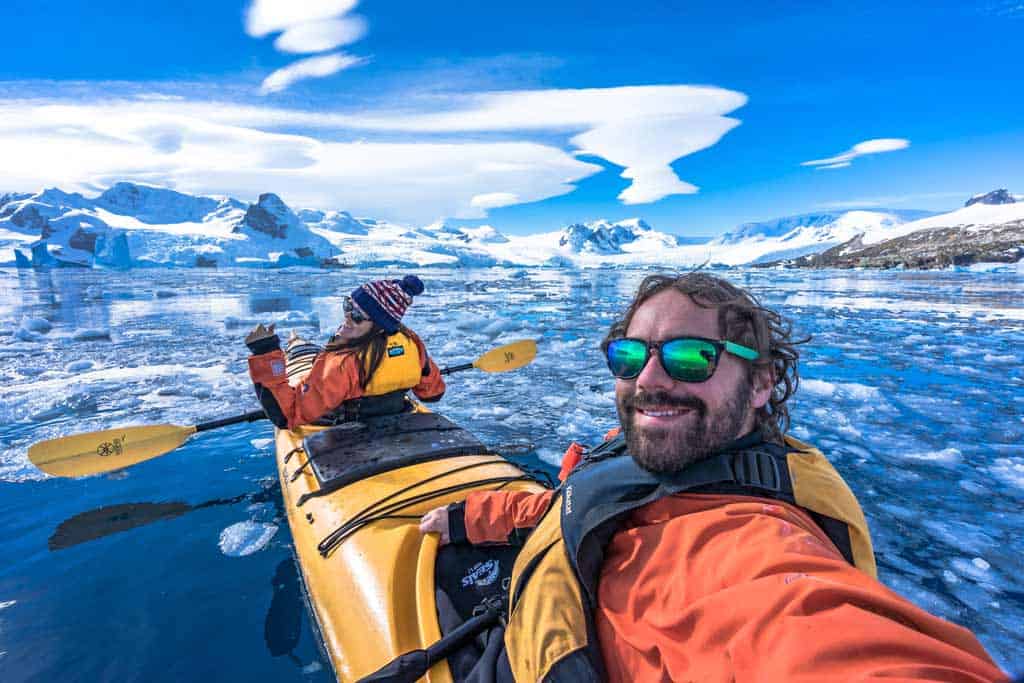
Go Kayaking or SUPing
Zodiac cruises and shore landings are incredible, but nothing quite beat the silence and connection to nature that you get from kayaking!
Read about how to go kayaking in Antarctica .
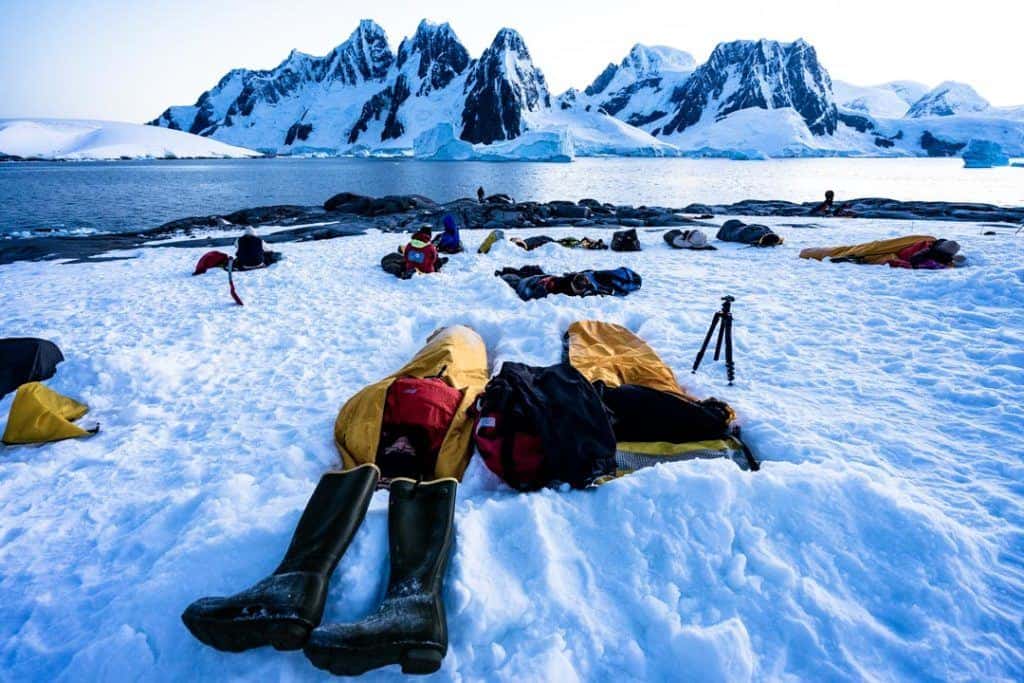
Camp Under the Stars
If you love adventure and want real bragging rights, you need to experience the fun of camping the night amongst penguins and icebergs.
Learn about camping in Antarctica .
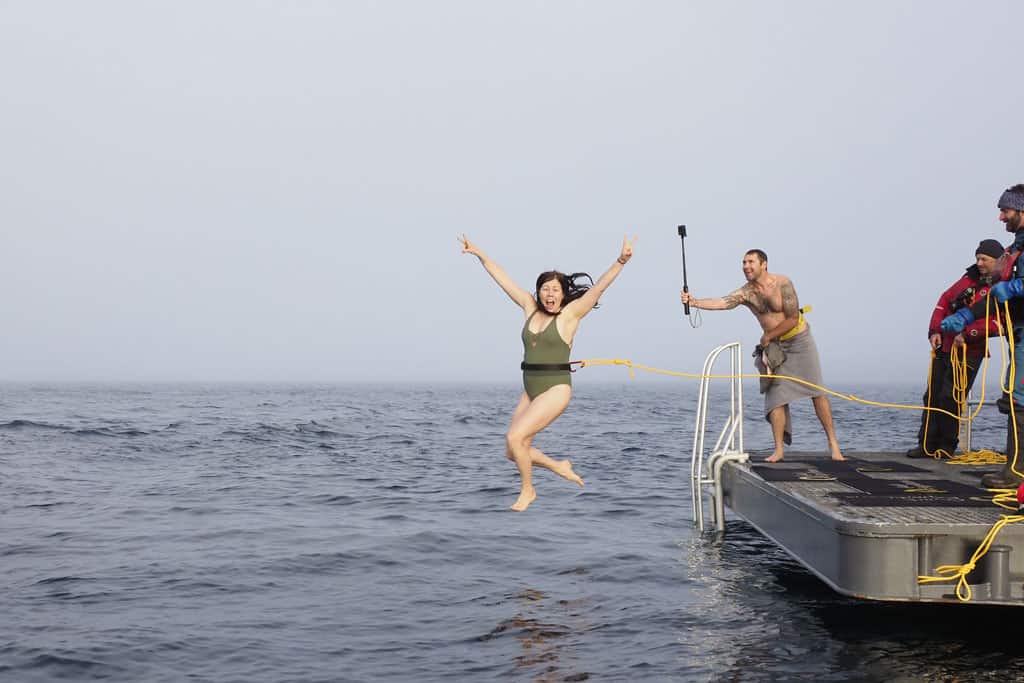
Do the Polar Plunge
Who would jump off of a perfectly good ship into the frigid Southern Ocean? You, you absolute badass! And you’ll get pictures to prove it.
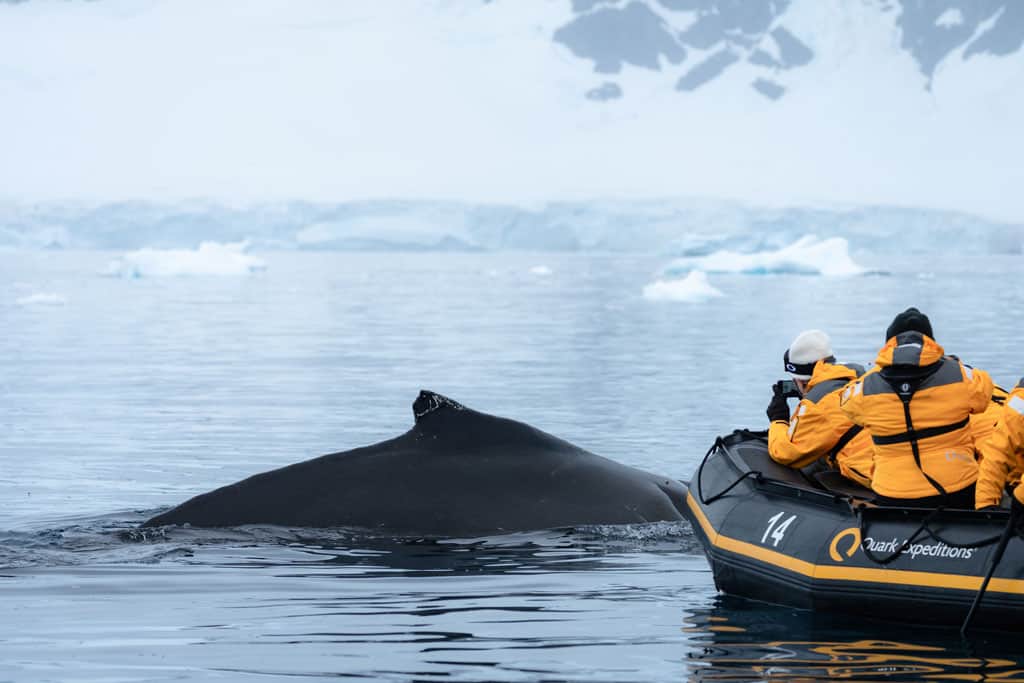
Zodiac Cruise with Whales
In our opinion, the zodiac cruises you take in Antarctica are often better than the shore landings, particularly if you have epic wildlife encounters. Travel late season for humpback whales!
How to Get to Antarctica
EXCLUSIVE – We have partnered with the world’s top polar tour operator, Quark Expeditions, to offer readers of NOMADasaurus a very special deal on any trip to Antarctica or the Arctic! Contact us ([email protected]) if you’d like to learn more.
READ MORE: Check out our latest guide on how to choose the best Antarctica cruise !
Departures from South America
- Port Stanley in the Falkland Islands
- Puta Arenas in Chile
- Buenos Aires in Argentina
- Santiago in Chile
Departures from New Zealand & Australia
Can you fly to antarctica.
BE SURE TO CHECK OUT THESE OTHER AMAZING THINGS TO DO IN ANTARCTICA
READ MORE...
What to Wear in Antarctica – Ultimate Travel Packing List
Sea kayaking in antarctica – the ultimate guide for 2024, the ultimate guide to camping in antarctica (2024), crossing the drake passage to antarctica (how bad is it), how to travel to antarctica responsibly (must read), best places to visit in antarctica.
There are plenty of amazing places to visit in Antarctica, and while you are limited to where the ship can go based on weather conditions and permits, every location is sure to blow your mind.
At just 1600m wide, the Lemaire Channel is one of the most spectacular vistas on the entire Antarctic Peninsula. Navigating through is never guaranteed, but if conditions allow, it’s an experience you’ll never forget.
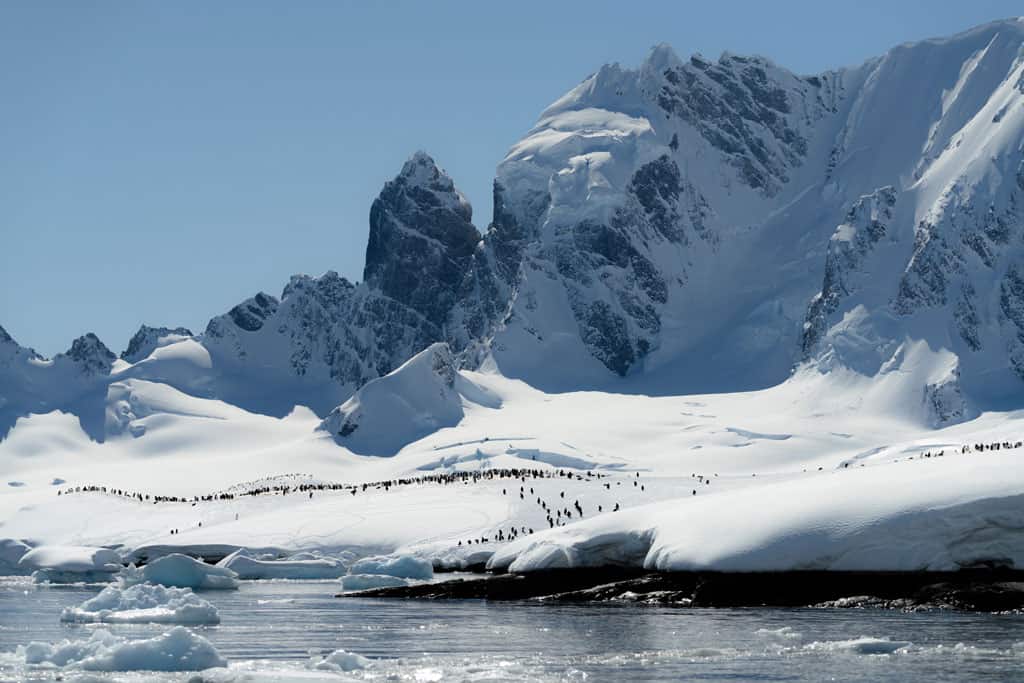
Cuverville Island
Cuverville Island lies between the Errera Channel and the Gerlache Strait, and is home to over 7,000 breeding pairs of gentoo penguins.
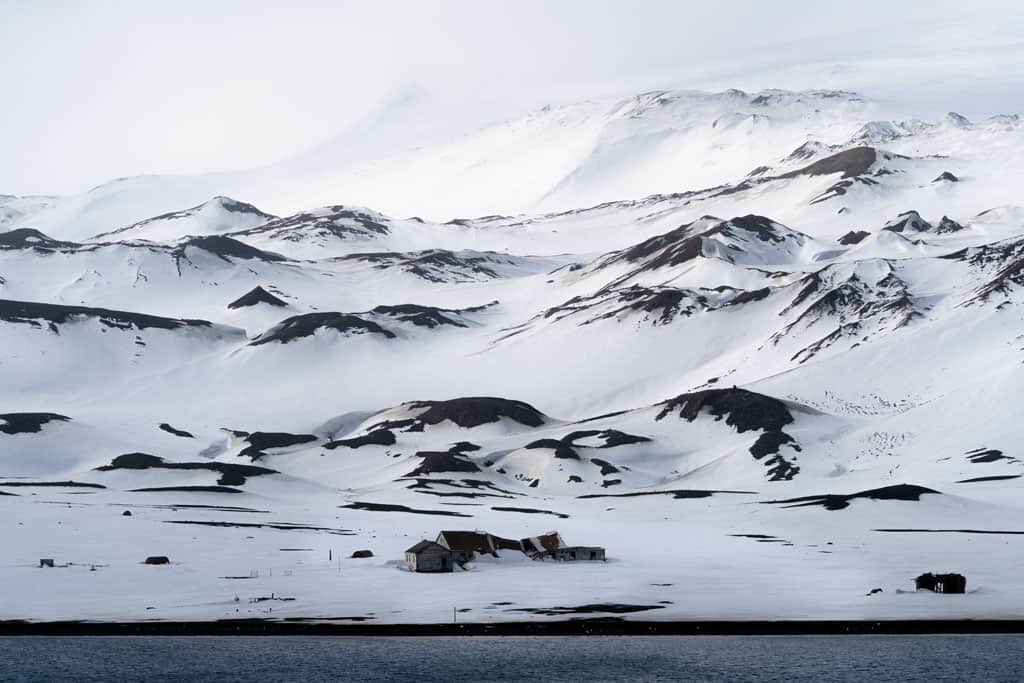
Deception Island
Deception Island is the caldera of an active volcano, and skilled captains can sail their expedition ships right into the heart of it. It is home to an old, abandoned whaling station.
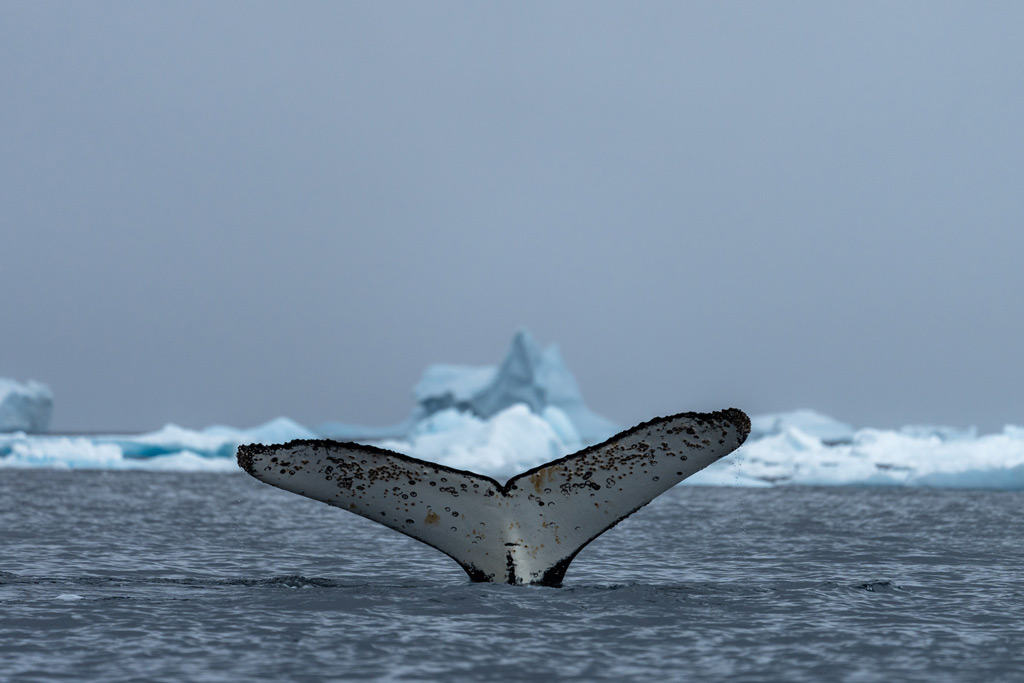
Hanusse Bay, Antarctic Circle
Hanusse Bay lies south of the Antarctic Circle, and is a wintry, iceberg-riddled and wildlife-dense location on the Peninsula.
Visa Requirements for Antarctica
Antarctica doesn’t belong to any one government or jurisdiction, and for that reason, no visas are required.
That being said though citizens of nations that have signed the Antarctica Treaty’s Protocol on Environment Protection (USA, Canada, EU and Australia) are required to get prior permission before visiting.
Don’t worry though, as this is organised through your licensed tour operator.
5 Interesting Facts About Antarctica
- It’s the coldest continent in the world, with the temperatures in wintertime dropping below -73°C (-100°F). The lowest temperature ever recorded on Earth was in Antarctica, and it was a very balmy -89.2°C (-128.6°F).
- There are no permanent residents of Antarctica, only transit residents (around 1,000), that are usually scientists or workers living in different research stations spread all over Antarctica
- Since Antarctica is situated in the southern hemisphere, winter is from May to October, and summer is from November to April.
- Antarctica is actually a desert! That might be surprising to a lot of people, because when we think of deserts we think of hot, dry, large sand surfaces. Since it doesn’t rain or snow in Antarctica it’s considered a polar desert.
- Antarctica holds 90% of the world’s fresh water!
Keen to learn more? Check out our full list of our favourite facts about Antarctica !
The Best Time to Travel to Antarctica
Unless you are working for a government organisation, the only time to travel to Antarctica is in the summer.
But what month should you visit in? Well that depends on what you want to see, and what your expectations are.
Read our complete guide on the best time to visit Antarctica , or read on for more information.
Some may argue that early season is actually the best time to visit Antarctica, because you can see it in its most undisturbed form.
After the long, cold winter, the landscape is covered in a fresh blanket of snow and ice, leaving everything looking clean and pristine (and quite other-worldy).
In terms of wildlife it’s possible to see whales, but not as much as later in the season as the water temperatures are still too cold.
If you visit at this time of year though expect to see lots of penguins, seals and birds.
The main downside to coming in November is that the temperatures are lower and polar ice is still breaking up, which means some areas of the continent are not accessible.
Peak Season – December to February
The peak season coincides with the brief summer, and is by far the most popular time to visit the continent.
Temperatures are at their highest and you get up to 20 hours of sunlight a day!
Whales are starting to visit the waters, baby penguins are plentiful, the birdlife is incredible and you’ll have a much better chance at seeing Antarctica with blue skies.
When we say it is the most popular time to visit though, we mean it. While the tour operators are strictly controlled to where and when they can visit certain areas, you may see other ships around and the foot traffic at the popular spots like Deception Island is much higher.
March to Early April
Late summer in Antarctica is the best time for whale spotting, and while a lot of the other animals have started their migration, you’ll see huge amounts of humpbacks, whales and minkes frolicking in the waters.
This time of year you will have access to almost all areas as the polar ice would have melted.
But with the temperatures slowly starting to drop as the season transitions to winter, it can be unpredictable, and snow storms are more frequent.
We personally believe travelling in the shoulder season is best!
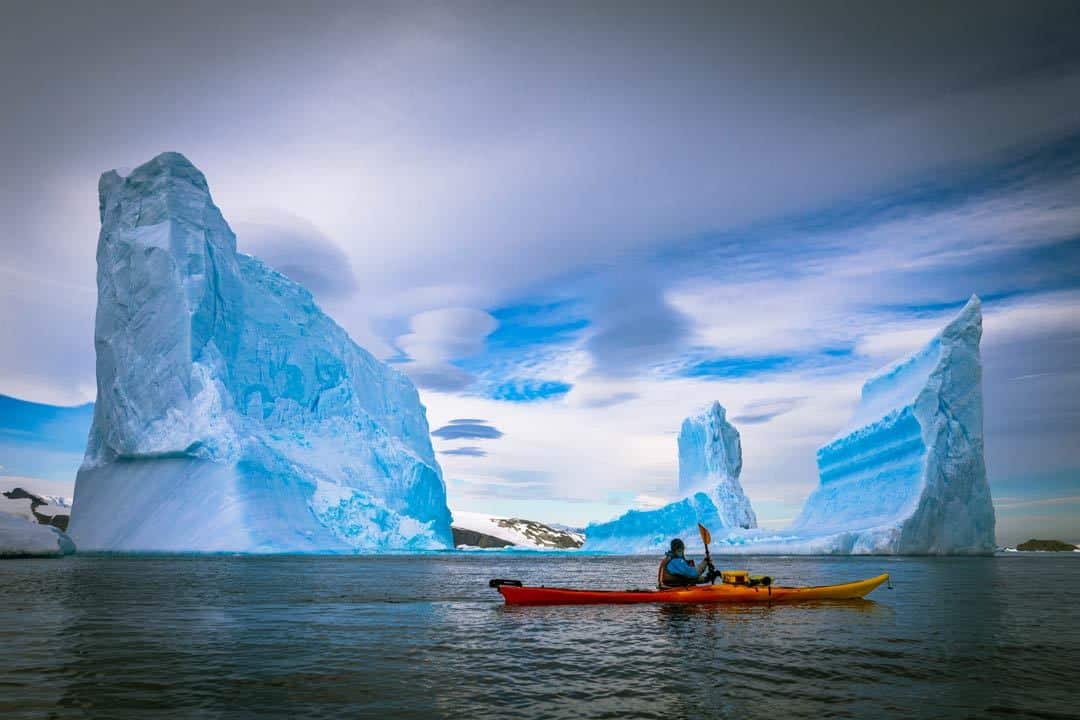
Travel Itineraries Suggestions
When you book your trip to Antarctica your itinerary is more or less determined by whichever journey you sign up for. You can’t deviate from this, so it’s important to pick an itinerary that encompasses everything you’d like to see and do.
Most standard Antarctica itineraries start and finish in Ushuaia, and go for 10 days. This includes 2 days each way to cross the Drake Passage, and a few days exploring the Antarctic Peninsula.
If you have more time, and would like to see extra places, we recommend looking for a voyage that visits the Falkland Islands and South Georgia as well. These kind of trips usually last for around 17-20 days.
These archipelagos have tremendous wildlife viewing opportunities, and are filled with fascinating history, such as the story of Sir Ernest Shackleton.
If you want a very in-depth Antarctic Peninsula adventure, you can look at crossing the Antarctic Circle, but only a few select companies do this mission.
We crossed the Circle in 2024 with Quark Expeditions and it was an incredible experience.
Budget for Travelling to Antarctica
We’re going to level with you – A tour to Antarctica is not cheap.
But when you compare everything you get to see and do, as well the remote location of the destination and just what is involved on an expedition, it is actually quite fair.
You can expect to spend anywhere from USD$500 per day right up to $3,000 per day, and this depends completely on the itinerary, the company and the type of berth you want to sleep in on the ship.
If you’re looking to save money on an Antarctica tour, the only way you can do this is to book a ticket last-minute.

Different Styles of Antarctica Tour Packages
When you’re doing your research on trips to Antarctica you might be amazed to see a huge difference in price from one company to the next. So why the fluctuation?
This often comes down to two things – the quality of the ship you will be travelling on, and the reputation of the company.
Cheap Antarctica Tours
Not all companies are created equal, and you need to take this into consideration when booking your trip. If a tour company is super cheap, there’s probably a reason for that.
The service of leaders and staff might not be as good, the ship might be much older, and you might only get a limited number of days on the actual continent.
We’ve seen trips for as cheap as USD$5000. Remember though, you get what you pay for.
Our Secret Tip – Want to go with a reputable and responsible company to Antarctica, but aren’t ready to pay huge amounts? Book the cheapest cabin on the ship.
You still get the exact same service, same guides, same destinations, same activities, except you’re not paying a huge amount for a fancy room. And the truth is you won’t be spending much time in your cabin anyway, so save your money and just book a cheap berth with a good company.
There are plenty of luxury cruise ships that visit Antarctica, and if this is what you’re into, then perfect.
These ships will have all the creature comforts you’d expect to find on a high-end cruise ship, with hot tubs, swimming pools, masseuses, elevators, etc.
Luxury Antarctic cruises might include charter flight tickets to the Ushuaia too, so you can avoid any complicated flight itineraries and add maximum comfort during your trip.
Sometimes they are part of longer South America trips that start in places like Montevideo in Uruguay or Buenos Aires, and finishing up in Valparaiso in Chile.
But these tailor-made experiences comes at a hefty price, which can go up to $25’000 (or more)!
Is this the best way to visit Antarctica? In our opinion, sometimes – it depends.
You do get what you pay for. You’ll have a newer, better ship with nicer cabins, higher quality food and potentially more experienced expedition staff.
We’ve travelled at both ends of the spectrum – on super budget trips with companies like Intrepid, and high-end luxury ships with Quark Expeditions.
Both had their pros and cons. It comes down to your budget.
Last Minute Antarctica Cruises
So what about these last minute Antarctica cruises that people talk about? Is it really possible to cruise to Antarctica for less than USD$5000?
Short answer, yes. However last minute means last minute, and you’ll often have to travel to Ushuaia and register your interest with a number of tour operators in the town.
If an opening comes up (such as someone cancelling their trip) you’ll be on a waiting list to join the tour. But you may only be given a day or two’s notice, and you may end up spending a week or more down in Ushuaia waiting to hear.
A family we met managed to score some last-minute Antarctica tickets after waiting more than 3 weeks in Patagonia, and when they got the word that it was happening they had 36 hours to drop everything and get to Ushuaia in time to jump onboard.
If you have the time and funds to stay down in southern Patagonia for a few weeks this can be a viable way to visit Antarctica cheaply.
Can I Work on a Cruise Ship to Antarctica?
Yes, you absolutely can. But the idea that you can literally just show up at the dock and get a job cleaning rooms or working in a kitchen is unfortunately not true.
The employees of these companies have months of training and maritime-grade certifications before they are sent on a trip to Antarctica and often have to sign long contracts.
Sorry, to be bearer of bad news, but no, y ou can’t show up in Ushuaia and get a one-off job on a cruise to Antarctica.
Insider’s Tip – Book A Small Group Expedition
Very few people know this when booking their travels to Antarctica, but if you end up on a ship that has more than 200 passengers onboard, your time on the continent is severely limited!
That’s because IAATO rules states that no more than 200 people from any one voyage can get off the ship at any one time, and no more than 100 people can step foot on the continent at once, so if your tour has more than this, you’ll end up spending a lot of time waiting on the ship while the other group is off exploring.
If you have between 100-200 people onboard, you do what’s known in the industry as a ‘split landing’ – basically half the group go ashore while the other half zodiac cruise, then you swap midway through the excursion.
In our expert opinion this isn’t a bad thing. We personally prefer zodiac cruising anyway.
Even worse though, if you end up booking a large cruise ship with more than 500 people onboard, IAATO regulations mean nobody gets off the ship.
That means you won’t even get the chance to do anything more other than simply look at the landscapes from afar.
And while this is still pretty amazing, in our opinion you’re paying all this money to go there – you may as well actually step foot on Antarctica!
Here’s an article to give you some more tips on how to choose a tour.
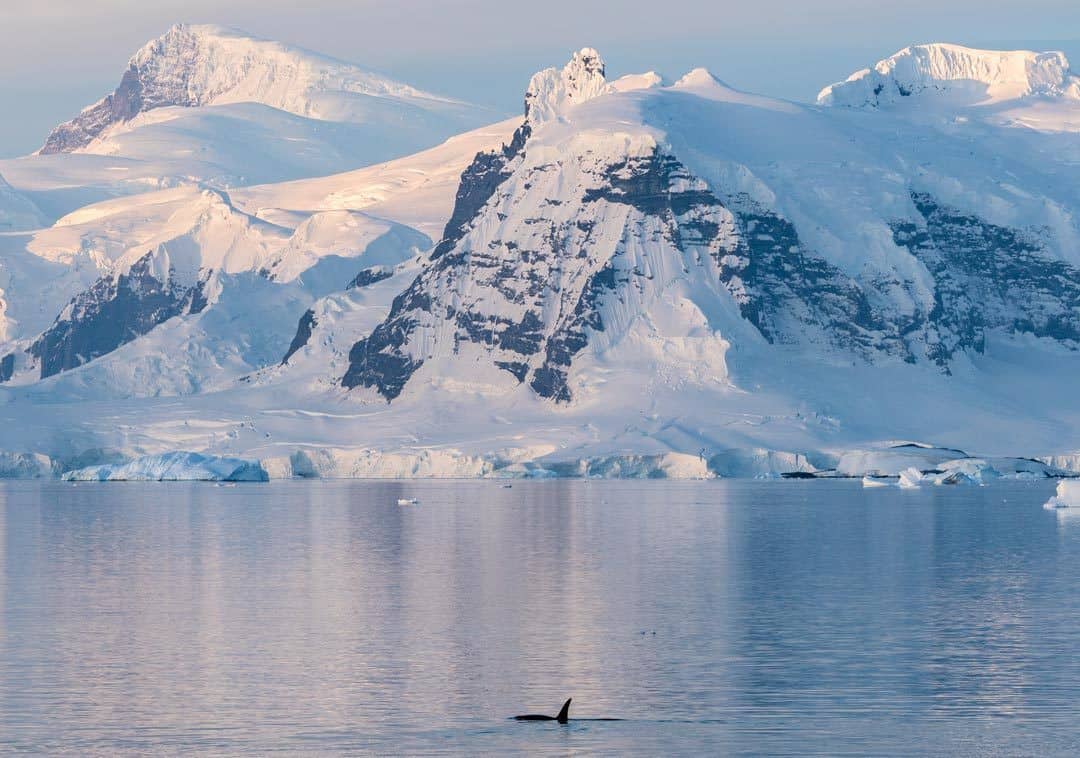
Top 5 Places to Visit in Antarctica
Antarctica is one of the most isolated places in the world and as such it has managed to maintain its pristine nature with minimum human impact (although climate change is reeking havoc down there).
For anyone wishing to enjoy the dramatic landscapes covered in polar ice and beautiful wildlife, make sure your cruise includes our top places to visit in Antarctica!
The Lemaire Channel
The Lemaire Channel is a narrow passage on the Antarctic Peninsula that is stunningly beautiful to navigate. On all sides you’ll be surrounded by towering peaks, tumbling glaciers and glistening icebergs.
It’s also a dream come true for marine life lovers, as you can spot all kinds of seals and even whales, including humpbacks and orcas!
No matter how cold it gets, we guarantee you won’t go below the deck in fear you might miss something!
Deception Island always proves to be a highlight of people’s travels to Antarctica as it is incredibly beautiful, and has a human element to it with the old whaling station.
But why the name Deception Island? That’s because even though it looks like just an island, it’s actually a caldera of an active volcano!
The waters here are a tad warmer than the rest of the seas around, making it a popular spot for people to do the polar plunge.
Vernadsky Research Station
No trip to Antarctica would be complete without spending some time at a functioning science base, and luckily you can do just that at Vernadsky Research Station!
This Ukrainian-run base has a lot of history, and today the scientists working there open their doors to visitors.
It’s even home to the southern-most bar in the world! Read all about it in our article about Vernadsky Research Station.
South Shetland Islands
The South Shetland Islands are a small group of islands about 120km north of the Antarctic Peninsula.
Their location makes them one of the most visited places on the peninsula, and they are a great place to visit in Antarctica because of the huge population of elephant seals and penguins.
South Georgia and the Sandwich Islands
While South Georgia and the Sandwich Islands don’t actually belong to Antarctica (they are part of the United Kingdom), we couldn’t write a list about the top places to visit without mentioning this place.
It has been called the Serengeti of the Southern Ocean due to the abundance of wildlife that congregates there.
You can see hundreds of thousands of king penguins hanging out on beaches, 4-tonne elephant seals battling each other for mates and the largest bird in the world, the Wandering Albatross.
South Georgia can be included on a few Antarctic cruise itineraries, so if you have the time we highly recommend visiting.
Top 5 Travel Experiences in Antarctica
So what exactly is there to do in Antarctica? Plenty!
We wrote this comprehensive guide on the best things to do in Antarctica , but let us break down some of the highlights here.
Camping Under the Stars
Yes it is entirely possible to go camping in Antarctica , but only if you join the right tour operator that provides the right gear.
It might sound risky because of the extreme weather conditions, but that’s why you should only do it with a company that takes all safety measures seriously.
You will sleep in winter-grade bivvy sacks with high-quality sleeping bags, and the expedition leaders will monitor the weather systems closely to make sure that it’ll be the optimum evening to do so.
The adventure won’t seem as challenging once night sets and you get thrown into a daze by views of the open sky and stars, with zero light pollution around to hide the universe.
Laying under the stars and waking up to the sun rising over the vast snowy landscape will be etched into your mind forever.
Take the Polar Plunge
How does swimming in the world’s coldest place sound to you? Well you can do just that in Antarctica, and it’s an experience that’ll give you the ultimate bragging rights.
Whether you’re jumping from a boat or do a sprint into the icy waters at the beach on Deception Island, it’s going to be frigidly cold. But the pain only lasts a minute, and you’ll have expert guides around you to warm you up with blankets and hot chocolate.
Climb Mount Vinson
For those that want a serious adventure, and have the skills to go with it, why not consider climbing the tallest mountain in Antarctica, Mount Vinson!
The mountain is 4897m high, but of course this isn’t for the average traveller to Antarctica, and you won’t find a standard cruise ship that goes there.
It’s one of the world’s seven highest summits, making it a must-do for any mountaineer looking to achieve the Holy Grail.
Kayaking With Whales
Sea kayaking in Antarctica is one of the best adventure activities on the continent, and it’s easy to see why.
Surrounded by icebergs, calm waters and huge glaciers, you can spend hours paddling around, being constantly amazed at the scenery.
This is the best way to get closer to Antarctica’s rich marine life, and if you’re really lucky, you might even have a close encounter with a humpback whale!
Hanging Out With Penguins
Hanging out with penguins is everyone’s number one item on their Antarctica bucket list.
There are six types of penguins living in Antarctica and they are one of the few animals on the continent that is pretty much a guarantee to see no matter when you go!
The guideline on interacting with wildlife on Antarctica is that you have to keep your distance, at least 5 meters away from all wildlife, but if they approach you that’s no problem!
These friendly birds are very unfamiliar with humans, so chances are they will come right up to you if you just hang out and wait.
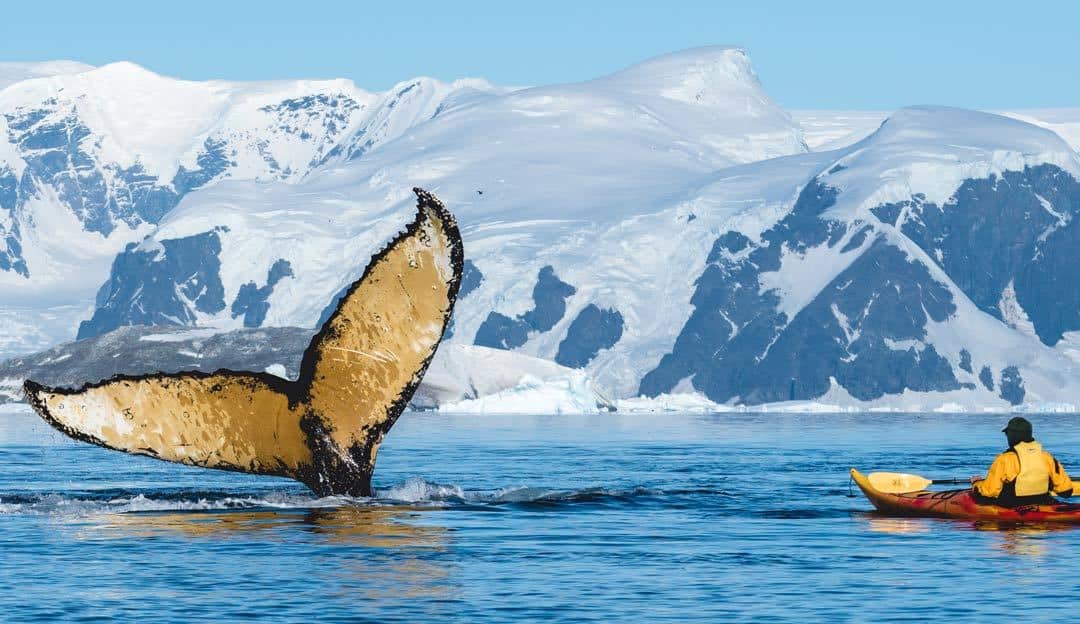
Transport in Antarctica
Unless you’re working on a research station, the only form of transport you’ll get to experience in Antarctica is the floating kind.
Cruise or Expedition Ships
The main mode of transport in Antarctica is by ship, and you have a couple of different options – A luxury cruise ship, or a research expedition ship.
Cruise ships are comfortable and luxurious, but they might also lack the character and sense of adventure that you’d expect from a place like Antarctica.
We most recently travelled on a polar expedition vessel called the Ultramarine , and it was amazing in that they were conducting real-life science research as we went.
Zodiacs (Inflatable Rubber Boats)
This is the most common, and fun way, to get your way around Antarctica.
They are used for getting from your ship to shore, or for just exploring around the gorgeous seas. They are open-air, which means you’re exposed to the elements, so make sure you wear plenty of protective gear.
We’ve already spoken about kayaks before, but if you have the chance to paddle around the continent you should definitely take it!
Safety in Antarctica
While Antarctica truly delivers on the promise of untouched nature and rich wildlife, one should seriously prepare to be exposed to the harsh climate and one of the most dangerous environments in the world.
But don’t stress too much about it – Chances are you’ll only be travelling to Antarctica in the summer, where the temperatures are warmer anyway.
Plus all Antarctic tours have qualified and experienced medical staff onboard, so you’ll be in safe hands.
Rough Sea Weather
When crossing the Drake Passage, which is a gruelling 48-hour journey, there’s a chance that you will encounter some rough sea weather.
Don’t worry though, because expedition ships are designed to charge through even the most turbulent of seas, so even though you might feel scared, the boats are absolutely fine.
If you’re prone to sea sickness you can take strong medication to help, or if you’re absolutely petrified we suggest booking a trip that has a flight to King George Island instead of boarding the cruise ship in Ushuaia or Punta Arenas.
Walking On Ice
The key to crossing the icy sections of the continent are to have good quality boots.
Sometimes the tour operator will supply you with these boots, but make sure you do your research before you show up.
The guide will offer you some practical advice how to walk across icy sections. Usually those instructions consist of keeping a slow pace and short, confident steps where you plant your feet.
Harsh Climate
The main issue travellers to Antarctica will come across is the harsh climate, so make sure you come prepared.
You need to pack all the necessities before you come, because the right clothing is the most important factor in whether you will have a good time or not.
Learn to layer up, because the temperature can change rapidly, and the last thing you want is to have one giant, warm coat on when the sun comes out, meaning all you have underneath is a t-shirt.
The expedition leaders will keep an eye on the weather to help keep you safe in Antarctica.
Cruise Ship Safety
Most incidents that happen to cruise ships in Antarctica involves the pack ice, but this is an extremely rare occurrence in this day and age.
It’s important to know that your tour operator evaluates all risks and manages the trip around perceived hazards. Safety is their number one priority.
Today we’re able to predict icebergs, pack ice and unexposed hazards with forward-scanning sonar and ice radars, and all cruise ships have them in use.
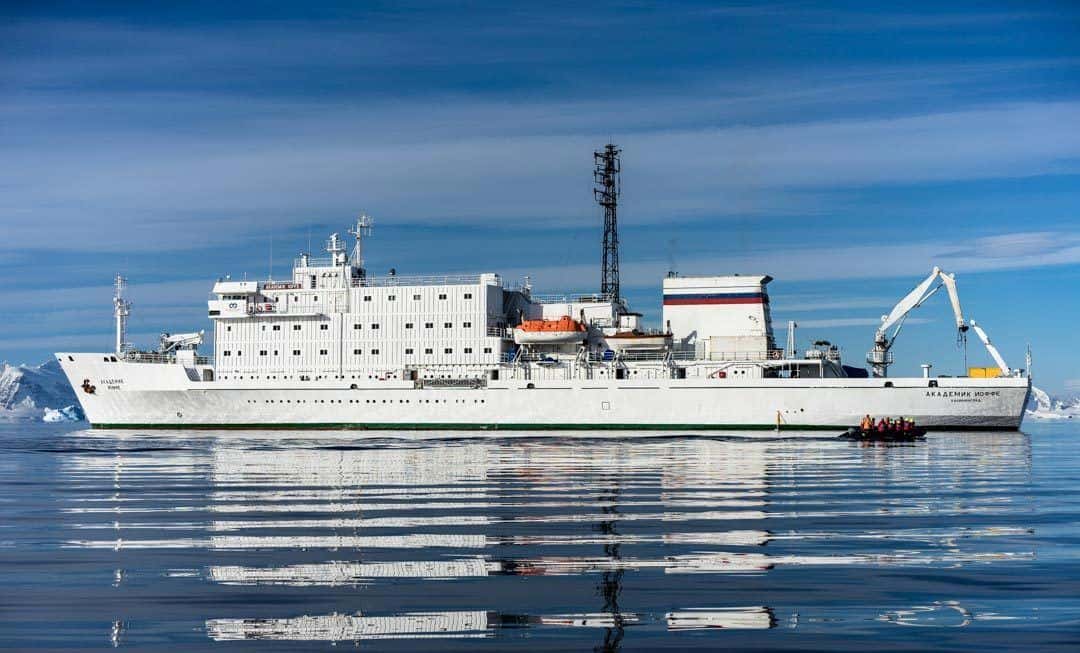
Medical System in Antarctica
All tour operators have a medical team on-board for any possible health issues you may encounter.
The only thing up to the traveller to take care of is to make sure you get the proper vaccinations before the expedition.
The vaccines that you should be up-to-date on are:
- Measles-mumps-rubella (MMR) vaccine
- Diphteria-tetanus-pertussis vaccine
- Varicella (chickenpox) vaccine
- Polio vaccine
The risk of acquiring of any of those diseases comes from the fact that they’re easily spread from person to person, and the close living quarters.
You will be sharing same space with people from many different parts of the world which carries an increased risk of contracting a disease.
Packing List for Antarctica
Making sure to pack everything you need for your Antarctica travels is the most vital part of your travel preparations.
Some of the tour operators will supply you with adequate waterproof jacket, pants and boots, but make sure to check with them.
Check out our detailed guide on what to wear in Antarctica to get you prepared.
Men And Women
- Waterproof jacket
- Waterproof pants
- Boots (with the most grip)
- Thermal underwear
- Thermal socks x2
- Merino wool socks x3
- T-shirts x4
- Long sleeve shirt x1
- Hooded jumper x1
- Down jacket x1
- Wind/rain jacket x1
- Glove liners x1 pair
- Ski gloves x1 pair
- Buff bandana x2
- Sunglasses x1
Miscellaneous Items
- Camera (here’s our list of the absolute best travel cameras on the market )
- Wide angle & zoom lens
- Spare batteries x4
- SD memory cards x4
- Waterproof cases for electronics
Travel Tips To Antarctica
- Wear layers! In some moments when you physically exert yourself you will start feeling a bit hot so then you should take off a layer. Later on when you feel cold again just put it back on – it’s important to regulate the body temperature.
- Invest in your camera equipment! This is a trip that most people only take once in their lifetime – you want to be sure to make memorable photos of it.
- When booking your cruise make sure that somewhere it says ‘step foot on the continent’ because some cruise ships don’t allow passengers to leave the vessel!
- Think of flying to Buenos Aries before connecting to Ushuaia. It might end up a cheaper and you can arrive a day or two earlier to explore Buenos Aries.
- Buy a good travel insurance policy ! Antarctica is so isolated and unpredictable that your travel policy should always include an emergency evacuation charge!
Table of Contents
Read our antarctica blog posts, the best time to visit antarctica – month by month breakdown.

Antarctica & Patagonia Expedition
- Join our austral spring expedition cruise from Valparaíso, through Patagonia, and down to Antarctica.
- See penguins in the midst of their courting and nesting rituals!
From Valparaíso, tour the Chilean fjords and waterways of Patagonia, stopping at rustic Castro, isolated Puerto Edén, and Puerto Natales, where you may have the chance to hike in Torres del Paine National Park. Weather permitting, we’ll attempt to land at legendary Cape Horn before crossing the Drake Passage.
Guided by your Expedition Team, you’ll spend four incredible days exploring Antarctica’s immense, pristine icescapes. Springtime is courting season, meaning you will be able to observe penguins’ mating rituals. There is no set schedule. We adapt our itinerary and seize every opportunity to get closer to nature and enjoy unique experiences while ice-cruising and on landings.
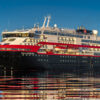
- MS Roald Amundsen
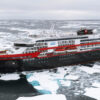
- MS Fridtjof Nansen
Standard Activities
About the antarctica & patagonia expedition, itinerary day to day, valparaíso, a unesco gem.
Discover Valparaíso, the ‘Jewel of the Pacific’
Your Antarctica and Patagonia expedition cruise begins in colorful Valparaíso. Known as the ‘Jewel of the Pacific’, this friendly UNESCO-listed city is built on steep hillsides overlooking the ocean.
Filled with enticing scents and sounds, it’s an exhilarating maze of alleyways and barrios, colorful houses, and ‘mercados’ packed with local produce. Take it all in on a funicular ride up to Cerro Alegre and Concepción.
You can explore more of the region on one of our optional Pre-Programs.
Preparing for adventure
Over the next two days at sea, you’ll learn more about the wonders we’ll encounter on our trip.
Expedition Team members are experts in everything from oceanography and geology to ornithology and history. Drop in on their fascinating lectures and hands-on presentations in the Science Center.
Grab a pair of binoculars and look for rare wandering albatrosses and petrels. Make the most of the onboard facilities and spoil yourself with a spa treatment in the wellness area. You can also enjoy the infinity pool, hot tubs, running track, sauna, and gym.
Castro's Chilotan charm
See stilt houses and historic churches and s et among the lush vegetation of Chiloé Island, Castro is Chile’s third-oldest city. It’s home to two UNESCO World Heritage Sites, those being the Iglesia San Francisco and Iglesia Nuestra Señora de Gracia de Nercón.
From various vantage points, enjoy great views of the city’s colorful ‘palafitos,’ which are stilt houses situated along the waterfront. For a bit of culture, head to the Regional Museum and the Museum of Modern Art.
Bring your binoculars, as Chiloé is an important habitat for bird species such as green-backed fire crowns and Chilean flamingos, along with penguins, black-necked swans, ringed kingfishers, and silvery grebes.
Sailing south
We continue our adventure by setting course for Puerto Edén. As we pass quietly through the beautiful islands of Aysén, you can enjoy a rare opportunity to reconnect with nature. Enjoy the fresh sea air as we glide past untouched isles and green mountains, looking out for rare wildlife.
Take it all in from the deck, the outdoor hot tub, or the panoramic Explorer Lounge & Bar. Your Expedition Team will continue its lecture program in the Science Center, offering fascinating insights into the places and animals you’ll see on your journey.
Remote Puerto Edén
Set at the end of a deep fjord, our next stop is the enchanting village of Puerto Edén, set in Bernardo O’Higgins National Park.
The tiny settlement is only accessible by sea, and the ferry that connects it to the mainland only visits once a month. There are no roads here – just wooden boardwalks connecting houses and shops. Its 250 inhabitants include some of the last remaining members of the Indigenous Kawésqar people. You will have the chance to talk to them and gain insight into their unique culture.
Bohemian Puerto Natales
Our expedition cruise continues to Puerto Natales, the gateway to Torres del Paine National Park. You can choose to see this beautiful national park on either a bus or hiking tour – both experiences are worth doing.
The rugged landscape features steppe, forest, and desert, punctuated by glaciers and lakes. Guanacos and rheas roam freely. Look out for Chilean flamingos and you may even spot the mighty Andean condor.
Puerto Natales is a popular hub for hikers and travelers, with many eateries, bars, and outdoor shops. Set out on your own to visit the artisan village at Etherh Aike, enjoy a gin tour at the Last Hope Distillery, or stroll along the photogenic waterfront.
Exploring Chile’s fjords
Your journey south along the Chilean coast takes you through the ruggedly beautiful island chains that make up the fjords of Magallanes Province. Isolated islands and hidden bays create a rich haven for wildlife.
Whether cruising aboard our small boats (RIBs) or on deck, look out for colonies of Magellanic penguins, elephant seals, and various whale species. You may also see majestic waterfalls along this dramatic and beautiful section of coastline.
Rounding Cape Horn
After sailing through the Beagle Channel, we’ll pass the southernmost tip of South America, Cape Horn. This formidable icon often presents challenging conditions, but weather permitting, we’ll attempt to land there.
From here, we’ll navigate the legendary Drake Passage toward Antarctica. En route, we will prepare you for what lies ahead and show you how to make your visit as safe and sustainable as possible.
In the Science Center, the Expedition Team will give lectures about Antarctica’s fauna, history, and geology, as well as the impact of climate change and plastic pollution. You can also get involved in our Citizen Science projects.
Antarctica: another world
Nothing prepares you for your first sight of Antarctica’s immense, frozen beauty. Icebergs, sculpted by nature, float in the straits. Gentoo and chinstrap penguins court while Adélie penguins nest. Countless seabirds wheel overhead. Nature is in charge.
During the next four days, you’ll be busy exploring several landing sites. There are more than 20 possible sites on and around the Antarctic Peninsula and South Shetland Islands. It doesn’t matter where we go or what we do, every day will be thrilling and unlike anything you’ve experienced before.
We might sail into a flooded volcanic caldera or land in icy bays where remnants of whaling paraphernalia lie abandoned. You may also have the chance to kayak among icebergs and seals or snowshoe to a thrilling viewpoint.
Bird enthusiasts should look skyward for Antarctic seabirds such as skuas, petrels, and terns. Through onboard lectures and onshore talks, you’ll learn more about this precious habitat and how we can all protect it for the future.
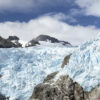
Sailing toward Ushuaia
After four incredible days in Antarctica, we sail back across the Drake Passage toward warmer weather in Argentina, giving you two days to enjoy life on board. There are plenty of things to do.
During your last few days at sea, you can take part in art workshops or enjoy a treatment in the spa. Get moving at the gym or admire views from the panoramic sauna. Relax in the outdoor pool or soak in the on-deck hot tubs.
Visit the Science Center and find out more about the things you’ve seen, or use the time to sort through your photos and get editing tips from our onboard photographer.
Ushuaia and Buenos Aires
Your expedition cruise ends in Ushuaia, the main city in Tierra del Fuego, Argentina’s southernmost province. From here, you’ll take a flight back to Buenos Aires, but it doesn’t have to be the end of your adventure.
We recommend signing up for one of our optional Post-Programs before heading home.
Departure Dates
- 2024 Departures
- 2025 Departures
- 2026 Departures
Family members of all generations can adventure in Antarctica. Save up to 50% off* your child’s voyage and save on your next family cruise. Book today!
Through June 30, save up to 45% on must-see destinations like Antarctica, Greenland, and Svalbard!
Terms & Conditions
- — The child offer is valid for new bookings on all Expedition departures and is subject to change at any time.
- — When the child occupies a cabin with at least two adults, a 50% savings applies to the cruise portion of the child’s package only.
- — When the child occupies a cabin with one adult, a 20% savings applies to the cruise portion of the child’s package only.
- — A 20% savings applies to the non-cruise portions of a package, where applicable, regardless of cabin occupancy.
- — A child is defined as 2 through 15 years of age at the time of sailing.
- — This offer is bookable online or by phone and is combinable with all current offers.
- — Please note: Participation of children under the age of 12 years in small-boat landings during expedition cruises is at the discretion of the captain.
- — In accordance with International Association of Antarctica Tour Operators guidelines, the minimum age for travel to Antarctica is 5 years.
- — This offer is valid for new, individual bookings only, on select 2024 and 2025 departures, is capacity controlled, and subject to change at any time
- — Savings apply to the cruise portion of the package only, and displayed ‘from’ prices are per person based on double occupancy, in USD, and include taxes, fees, and port expenses.
- — This offer is combinable with the Ambassador and Child offer.
- — All expeditions are subject to availability at the time of booking.
- — Other restrictions may apply.
- — Offer is valid Offer is valid February 12-June 30, 2024.
What's Included
- Flight in economy class from Ushuaia to Buenos Aires after the expedition cruise
- Transfer from the ship to the airport in Ushuaia after the expedition cruise
- Stay in a cabin of your choice
- Breakfast, lunch, and dinner, including beverages* in the Aune and Fredheim restaurants
- Fine-dining À la carte restaurant Lindstrøm is included for suite guests
- Complimentary tea and coffee
- Complimentary Wi-Fi on board
- Complimentary reusable water bottle
- English-speaking Expedition Team who organize and guide activities, both on board and ashore
- Range of included activities
- In-depth lectures and discussions hosted by experts on the Expedition Team
- Full use of our Science Center, small library, and advanced biological and geological equipment
- The Citizen Science program allows guests to contribute to ongoing scientific research projects
- Our onboard professional photographer will give photography tips and teach techniques for capturing landscape and wildlife photos.
- The ship has hot tubs, an infinity pool, a sauna, an outdoor and indoor gym, and a running track
- Join informal gatherings with the crew for daily briefings.
- Escorted landings with small boats (RIBs)
- Loan of boots, trekking poles, and all equipment needed for the activities
- Complimentary wind- and water-resistant expedition jacket
What's Excluded
- International flights
- Travel protection
- Baggage handling
- Optional shore excursions with our local partners
- Optional small-group activities with our Expedition Team
- Optional treatments in the onboard wellness and spa area
Related Itineraries
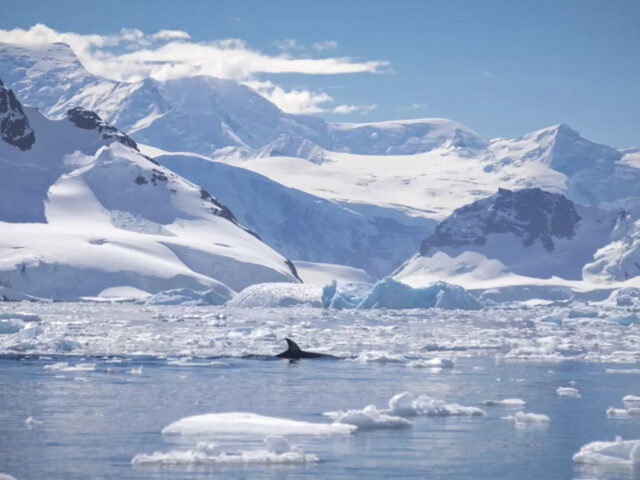
Classic Antarctica Air-Cruise
Antarctic explorer: discovering the 7th continent.
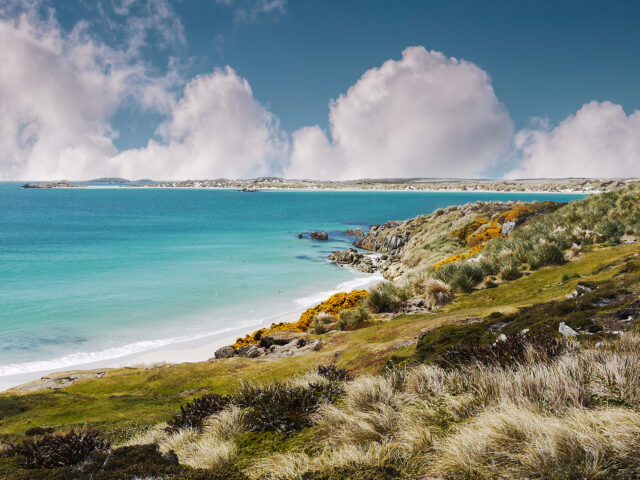
In-Depth Antarctica, Falklands & South Georgia Expedition
South shetland islands & antarctic peninsula.
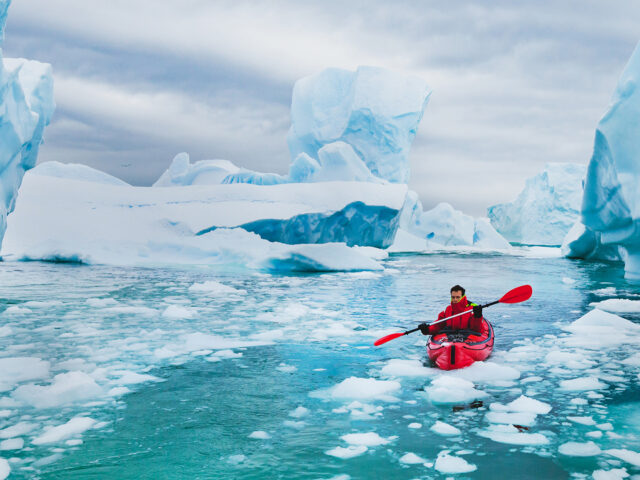
Antarctica - Basecamp
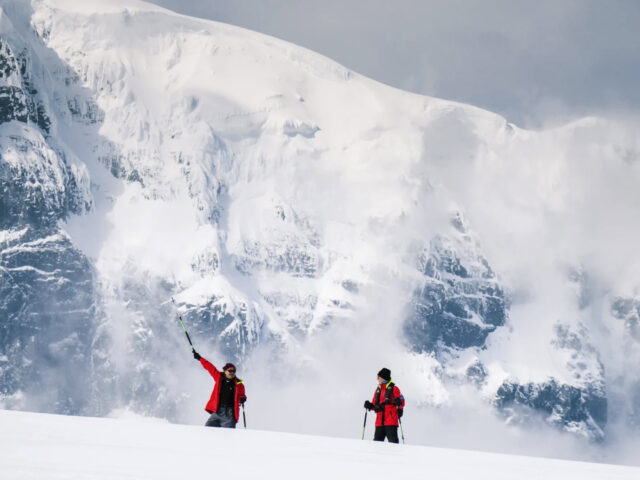
Antarctic Circle Expedition
Antarctic express: fly the drake, classic antarctica, spirit of antarctica, highlights of antarctica, prime season antarctica, ready for the adventure of a lifetime.
Get in touch with us via phone or form today and you’ll be assigned a dedicated Antarctica specialist who’ll be with you every step of the way to help you choose, book and plan the right Antarctica cruise for you. Here’s how it works:
Listen & Match
We’ll carefully listen to your aspirations and curate an impartial shortlist of personalized polar cruise recommendations—and pre- and post-cruise extensions—to match your desired experience.
Reserve & Relax
Next we’ll place a free, no obligation, 24-hour cabin hold on your preferred cruise option whilst we discuss the final details. Book and relax safe in the knowledge you’ll be paying the lowest price guaranteed.
Prepare & Travel
Then we’ll provide you with our expert packing advice, insider travel tips, and more to ensure you are fully prepared for—and maximize your enjoyment of—your once-in-a-lifetime Antarctica expedition.
Give us a Call
- Check this box if you prefer we didn't contact you by phone call or SMS.
- Yes - Please send me more info
- No thank you
- With Partner/Friend
- With Family
- As Part Of A Group
- Emperor Penguin
- Photography
- Exploration Heritage
- Antarctic Peninsula
- Antarctic Circle
- Falklands/S. Georgia
- Weddell Sea
- Ross Sea/E. Antarctica
Antarctica Cruises, Ships & Tours
10 top antarctica cruises & tours for 2024-2025, classic antarctica air cruise, antarctica - basecamp, antarctic express: fly the drake, antarctic small ship expedition, south shetland islands and antarctic peninsula, antarctica express air cruise, antarctic explorer: discovering the 7th continent, epic antarctica: crossing the circle via falklands & south georgia, 8 antarctica cruise deals for 2024-2025, find the perfect antarctica trip, cruise one way & fly one way, adventure expeditions, luxury cruises, our most remote antarctic expeditions.
- South Georgia
Falkland Islands
Weddell sea, tips for planning your antarctic cruise, how to choose an antarctic cruise.
- Book early! Fewer than 60,000 people step foot on Antarctica each year and many ships fill up many months or even years ahead of time. Plan your trip at least a year ahead of time, or even earlier if you can, for the best prices and selection.
- Choose a smaller ship, preferably with less than 200 passengers. By choosing a smaller cruising vessel for your Antarctica cruise, you are guaranteeing yourself a superior on board experience with more opportunities for daily excursions to small bays and ports. Ships carrying more than 500 passengers are not allowed to land their passengers ashore in Antarctica.
- Choose your cruise based on activities, destinations, and cruise line experience. Use this guide, or contact one of our Antarctica cruise experts and we'll help you find the itinerary and ship that is best suited to your you.
- Be prepared for rough seas. If you are affected by motion sickness, then take tried and tested medications or treatments. Consider taking a flight cruise that can fly you either one, or both ways from Punta Arenas, Chile to King George Island.
Top-Rated Small Antarctic Cruise Ships
Magellan explorer, sylvia earle, ultramarine, greg mortimer, national geographic endurance, ocean albatros, world explorer, ocean adventurer (sea adventurer), ocean victory, ms seaventure, antarctica highlights.
- Zodiac Expeditions: Delve into the heart of Antarctica's icy realm on Zodiac expeditions. Get unbelievably close to massive icebergs and glaciers that defy imagination. Encounter unique wildlife such as seals, penguins, and majestic whales, making every moment a captivating memory.
- Antarctica Camping Trips: For an unparalleled connection with the environment, camp under the starry skies of Antarctica. Some cruises offer camping experiences complete with all the necessary equipment, ensuring your safety while you immerse yourself in the raw beauty of the continent.
- Kayak Among Marine Life: Glide through the pristine waters of Antarctica in a kayak, coming face to face with the remarkable marine life that calls this continent home. Paddle through stunning ice formations and observe seals and penguins in their natural habitat.
- Snowshoeing and Skiing: Embrace the adventure spirit by snowshoeing or skiing on the pristine slopes of Antarctica. Some cruises include these exhilarating activities in their itineraries and provide top-notch equipment for guests seeking an adrenaline rush.
- Glacier Hikes: Embark on glacier hikes through awe-inspiring white landscapes, all while spotting the incredible wildlife that inhabits this unique region. It's an opportunity to stay active and witness wildlife thriving in their natural habitat.
- Scientific Explorations: Visit science research stations and onboard science labs to delve into the cutting-edge research conducted in Antarctica. Learn about the history of exploration in Antarctica and gain insights into the current challenges facing the continent.
- Breathtaking Sceneries: Be prepared to be mesmerized by the inspiring and breathtaking sceneries of Antarctica. Marvel at the incredible species that call this pristine wilderness home every step of the way.
- Relaxation and Luxury: Amidst the adventure, take time to unwind and pamper yourself. Enjoy moments of relaxation as you tour or sail through the blue waters of Antarctica. Many cruises offer onboard services like spas, massages, fine dining, hot tubs, and more, ensuring you have the best of both worlds during your expedition.
Top 10 Things to Do and See in Antarctica: A Complete Guide
Antarctic wildlife, top places to visit in antarctica.
- Antarctic Peninsula : This is one of the most visited regions in Antarctica and is known for its stunning landscapes, research stations, and abundant wildlife, including penguins, seals, and whales. Cross the Lemaire Channel back or from notable visitor sites along the Antarctic Peninsula include Paradise Bay , Deception Island , Neko Harbor, Cuverville Island, Half Moon Island, and Petermann Island.
- East Antarctica: The vast and largely unexplored eastern portion of Antarctica contains the coldest and driest areas of the continent.
- West Antarctica: This region is characterized by its massive ice sheets and glaciers, including the West Antarctic Ice Sheet. It is an important area for scientific research on climate change.
- Ross Sea : Located in the southernmost part of the Pacific Ocean, the Ross Sea region is home to the Ross Ice Shelf, the largest ice shelf in Antarctica. It is a critical area for studying the continent's marine ecosystem, Visit Brown Bluff (Tabarin Peninsula) or sail to the remote Peter I Island and Macquarie Island as you approach New Zealand .
- Weddell Sea : Situated off the eastern coast of the Antarctic Peninsula, the Weddell Sea is known for its diverse wildlife and historic significance, including the famous Shackleton expedition.
- South Orkney Islands: These islands are a sub-Antarctic archipelago located in the Southern Ocean, not far from the Antarctic Peninsula. They are home to various bird species and marine life.
- South Shetland Islands : This archipelago is a popular stop for Antarctic cruises, serving as a gateway to the continent. It is known for its research stations and wildlife, including penguins and seals. Notable visitor sites within the South Shetland Islands include Livingston Island, Hannah Point (Livingston Island), Elephant Island , and Aitcho Islands.
- South Sandwich Islands : This group of uninhabited islands located in the South Atlantic Ocean is home to a variety of seabirds and marine mammals, including chinstrap penguins, fur seals, albatrosses, and orcas.
- Sub-Antarctic Islands: These islands are scattered throughout the Southern Ocean and are known for their unique ecosystems, including various bird species and marine life. Sail to the Falkland Islands and South Georgia Island . Explore visitor sites such as Port Stanley (capital), Saunders Island, Carcass Island, West Point Island, and Sea Lion Island.
- Scotia Arc: This chain of islands and undersea ridges connects South America with the Antarctic Peninsula. It is an important migratory route for marine animals.
- Balleny Islands: These remote sub-Antarctic islands lie in the Southern Ocean and are known for their isolation and unique geology.
Antarctica Travel Guide
Ushuaia airport & transportation, antarctica fly + cruise, best time of year to travel to antarctica, antarctica weather.
- November: This is when tourism to Antarctica begins to kick off. Days start to lengthen, and sea ice retreats, marking the Antarctic "spring" in full force. While temperatures are still chilly, it's a great time for those seeking pristine landscapes and wildlife, including penguin mating rituals and seals having pups. Skiers and snowshoers will find ideal conditions in November and early December
- December: Among the most popular months for visiting, December offers optimal weather, long days, and access to stunning scenery and wildlife. It includes the austral summer solstice, providing extended daylight and relatively warmer temperatures. Penguin hatchlings and chicks are a highlight, and it's a great time for various activities, including kayaking and camping.
- January: Another prime month for tourism, January features ideal weather conditions, long daylight hours, and extensive access to the mainland and coastline. Temperatures are at their warmest, and there's an abundance of wildlife to observe, including penguins and increasing numbers of whales.
- February: Although tourist numbers start to decline from the December/January peak, February continues to offer fine weather. Daylight remains ample, and sea ice is at its yearly minimum, allowing for deeper exploration into the Antarctic wilderness. Whale-watching is particularly rewarding during this time. Scuba divers may prefer mid-December through mid-February
- March: The tail-end of the austral summer provides less-crowded sightseeing opportunities, minimal sea ice, and the chance to experience the "Antarctic fall." While temperatures cool off, March offers lower cruise prices, clearer waters for diving, and unique wildlife experiences, such as leopard seals hunting penguin chicks.
- Don't introduce any non-native species that could become invasive species.
- Always listen to your guides and the ship's crew while on day-trips.
- Make sure to observe animals from a safe distance and never try to touch them (at least 15 feet is a good recommendation).
- Don't feed any animals.
- Stay on designated walking paths.
- Allow animals enough space to make their own navigation decisions.
- Do not surround any animal or go between baby animals and their mothers.
What's it like on an Antarctic Cruise?
A Typical Day on an Antarctica Cruise
Expeditions to the south pole, south pole expeditions.
- The cruising season in the Arctic is from May to September, while in Antarctica it runs from November through March.
- While temperatures in Antarctica can be more extreme than in the Arctic, the cruising season tends to stay between 20-30 degree Fahrenheit, with plenty of sunny days (sometimes with 24 hours of sunlight each day).
- A trip through the Arctic might bring you through any of the following countries: Canada, the US, Greenland, Iceland, Norway, Russia, Sweden and Finland. Longer comprehensive cruises might do the whole Northwest Passage or cruise almost all of the Arctic Circle. Cruises board either in Scandinavia, Russia, or Canada.
- Antarctica trips either start in Ushuaia, Argentina for cruises or Punta Arenas for the fly cruises over the Drake Passage .
- Polar bears or Penguins - While penguins are so prolific in Antarctica and the Southern Ocean that the idea of not seeing hundreds on your cruise seems absurd, the polar bears of the Arctic can be much harder to spot (though some feel that they are more majestic and rewarding when you do spot them). NOTE: Polar bears live in the Arctic and penguins live in the southern hemisphere, so there is nowhere (other than perhaps a zoo) where you will see them both living in their natural habitat on the same trip.
- Wildlife in Antarctica features more whales and many different types of seals.
- Active travelers might prefer Antarctica for the chances to do activities like camping, kayaking, mountaineering, cross-country skiing, paddleboarding or scuba diving, which aren't included on Arctic tours for safety reasons.
- Ice vs. Land: Antarctica is aptly named the White Continent because its landmass is almost entirely permanently frozen ice and glaciers with towering rocky mountains, while the Arctic Circle goes through a summer season of lush vegetation when its icy coat melts away.
Antarctica Cruise Lines
Penguins of antarctica.
- Adelie Penguins - are common along the entire coast of the Antarctic continent and is the most widely-spread penguin species.
- Emperor Penguins - the tallest, heaviest and perhaps most famous of the penguin species.
- King Penguins - the second largest penguin, and similar in appearance to the Emperors, King Penguins live in the sub-antarctic islands and northern regions of Antarctica.
- Rockhopper Penguins - get their name because they are found jumping from jagged rock to rock instead of waddling like most penguins.
- Chinstrap Penguins - are easily distinguishable by their black chinstrap, which makes it look like they're wearing a bicycle helmet!
- Gentoo Penguins - are related to the Adelie and Chinstraps, and perhaps the speediest of the penguins in the water.
- Macaroni Penguins - with their distinctive spikey orange crests, are perhaps the world's most abundant penguin species, though they only visit Antarctica part of the year.
Antarctica Travel FAQ's
Fun facts about antarctica, real antarctic traveler stories & reviews, antarctica - pure awe for 19 days, antarctica air cruise on the ocean nova, top antarctica travel destinations, antarctica trips by departure date.
- 2024 Antarctica trips (112)
- 2025 Antarctica trips (154)
- 2026 Antarctica trips (70)
- November 2024 (52)
- December 2024 (68)
- January 2025 (68)
- February 2025 (54)
- March 2025 (34)
- November 2025 (37)
- December 2025 (39)
- January 2026 (40)
- February 2026 (37)
Top Experiences in Antarctica
- Antarctica Cruises (216)
- Antarctica Wildlife & Safari Exploration (182)
- Antarctica Luxury (58)
- Antarctica Solo Travel (25)
- Antarctica Active (19)
- Antarctica Family (11)
- Antarctica Land Tours (9)
- Antarctica Cultural (6)
- Antarctica Scheduled Group Tour (4)
- Antarctica Beaches (3)
- Antarctica Most Popular (3)
Antarctica Trips by Duration
- 6 day trips (4)
- 8 day trips (7)
- 9 day trips (6)
- 10 day trips (15)
- 11 day trips (17)
- 12 day trips (38)
- 13 day trips (23)
- 14 day trips (12)
- 15 day trips (12)
- 16 day trips (5)
- 17 day trips (8)
- 18 day trips (10)
- 19 day trips (11)
- 20 day trips (12)
- 21 day trips (12)
- 22 day trips (11)
- 23 day trips (7)
- 24 day trips (3)
Antarctica Trips by Activity
- Antarctica wildlife viewing (215)
- Antarctica small ship cruises (180)
- Antarctica whale watching (153)
- Antarctica adventure options (105)
- Antarctica kayaking (103)
- Antarctica photography seminars (39)
- Antarctica camping (36)
- Antarctica hiking (32)
- Antarctica snorkeling (20)
- Antarctica fly cruises (16)
- Antarctica land & sea exploration (14)
- Antarctica skiing (9)
- Antarctica stand up paddle boarding (9)
- Antarctica spa relaxation (8)
- Antarctica helicopter tours (6)
- Antarctica scuba diving (5)
- Antarctica wilderness lodge exploration (4)
Why Travel With Adventure Life
Recognized by.

- Skip to main content
- Keyboard shortcuts for audio player

- LISTEN & FOLLOW
- Apple Podcasts
- Google Podcasts
- Amazon Music
- Amazon Alexa
Your support helps make our show possible and unlocks access to our sponsor-free feed.
Investigators will travel to Antarctica after claims of sexual assault at U.S. bases

Juliana Kim

McMurdo Station is photographed from the air on Oct. 27, 2014. National Science Foundation via AP hide caption
McMurdo Station is photographed from the air on Oct. 27, 2014.
Investigators with the National Science Foundation's watchdog office are heading to Antarctica in response to longtime allegations of sexual misconduct at U.S. research stations there — which the NSF director has described as a "pervasive problem."
Special agents are expected to arrive Monday at McMurdo Station, the largest research hub on the continent where hundreds of scientists conduct fieldwork. The visit is scheduled through Nov. 17.
"Members of our investigative staff will be visiting McMurdo to prepare for a future on-site presence in Antarctica and meet with staff to explain our role," Lisa Vonder Haar, the chief of staff for the NSF's inspector general, said in a statement.

Sexual harassment and assault plague U.S. research bases in Antarctica, report says
The trip comes more than a year after the release of a damning report by the NSF, which oversees all American operations in Antarctica, cataloging a culture of harassment and assault within the U.S. Antarctic Program. In addition to McMurdo, the NSF also collected concerns of sexual misconduct at South Pole Station, Palmer Station and other U.S. research vessels in Antarctica.
Drawing on surveys of 880 current and recent employees, 59% of women said they had a negative experience with sexual harassment or assault during the program, while 95% of respondents said they knew of someone who was assaulted or harassed within the program.
"Every woman I knew down there had an assault or harassment experience that had occurred on ice," one interviewee told the report's authors. Another woman in the report called sexual assault and sexual harassment "a fact of life" in Antarctica. Several men also recounted experiencing sexual harassment by men and women, according to the report.
The inquiry also revealed that a pervasive environment of harassment and assault was compounded by fears of retaliation.
"People on station fear, and rightfully so, that if they are harassed or assaulted and report it, they will be the ones who will be going home," one person told the report's authors. "When things happened on ice, the number one thing I heard was 'don't report it or you will go home and be blacklisted from the program.'"
The NSF commissioned the report in 2021 afters years of reports of sexual misconduct. In 2018, three women came forward with allegations that Boston University geologist David Marchant had sexually harassed them during research expeditions to Antarctica while they were graduate students. He was later fired from his university . In a statement at the time, he denied the allegations.
"It wasn't surprising to me to hear some of the stories that we heard," said Roberta Marinelli, the director of the NSF's Office of Polar Programs, in an interview with NPR last year. "It's certainly disappointing."
The U.S. Antarctic Program sends more than 3,000 people — from researchers to cooks — to the bottom of the world each year. About one in three of them are women.
Over the past few months, the NSF watchdog office has been addressing complaints from Antarctica workers remotely. The upcoming visit is part of an effort to have a stronger presence on the ice, Vonder Haar added.
On Thursday, the NSF appointed Renée V. Ferranti as a new special assistant to the director tasked with sexual assault and harassment prevention and response implementation. Ferranti was previously the director of the Sexual Assault Prevention and Response program at the Peace Corps. She begins her appointment on Sunday.
"Addressing this pervasive problem remains a top priority for me and the agency, and with Renee's expertise we will continue to adapt and further accelerate our efforts to address the evolving landscape of sexual assault prevention and response," Sethuraman Panchanathan, the director of NSF said in a statement.
Correction Nov. 3, 2023
An earlier version of this story mistakenly said that investigators will be spending the next two weeks examining reports of sexual misconduct at U.S. research bases on Antarctica. Investigators will be arriving to prepare for a future on-site presence in Antarctica.
- Meet the Team
- Work with Us
- Czech Republic
- Netherlands
- Switzerland
- Scandinavia
- Philippines
- South Korea
- New Zealand
- South Africa
- Budget Travel
- Work & Travel
- The Broke Backpacker Manifesto
- Travel Resources
- How to Travel on $10/day
Home » South America » Best Trips to Antarctica – EPIC Holidays for 2024
Best Trips to Antarctica – EPIC Holidays for 2024
Dreaming of waddling alongside penguins under the midnight sun in one of the remotest parts of the planet? In that case, you need to dig deep into your pockets and get yourself down to Antarctica. The ultimate bucket list destination, this sprawling frozen desert is also home to seals, whales, and unique seabirds – and let’s not forget icebergs the size of villages.
The best way to explore Antartica is by booking yourself onto a marine expedition. Trips to Antarctica generally depart from the southernmost tip of South America in Chile. By the time you’ve found your sea-legs, you’ll be ready to place your own feet on the frosty wilderness.
We know research for a trip as wild as this is overwhelming. So, to give you a headstart on your planning, we’ve rounded up the best Antarctica tours. Amass your thermals and zip up your parka – you’re setting sail for the planet’s last frontier.
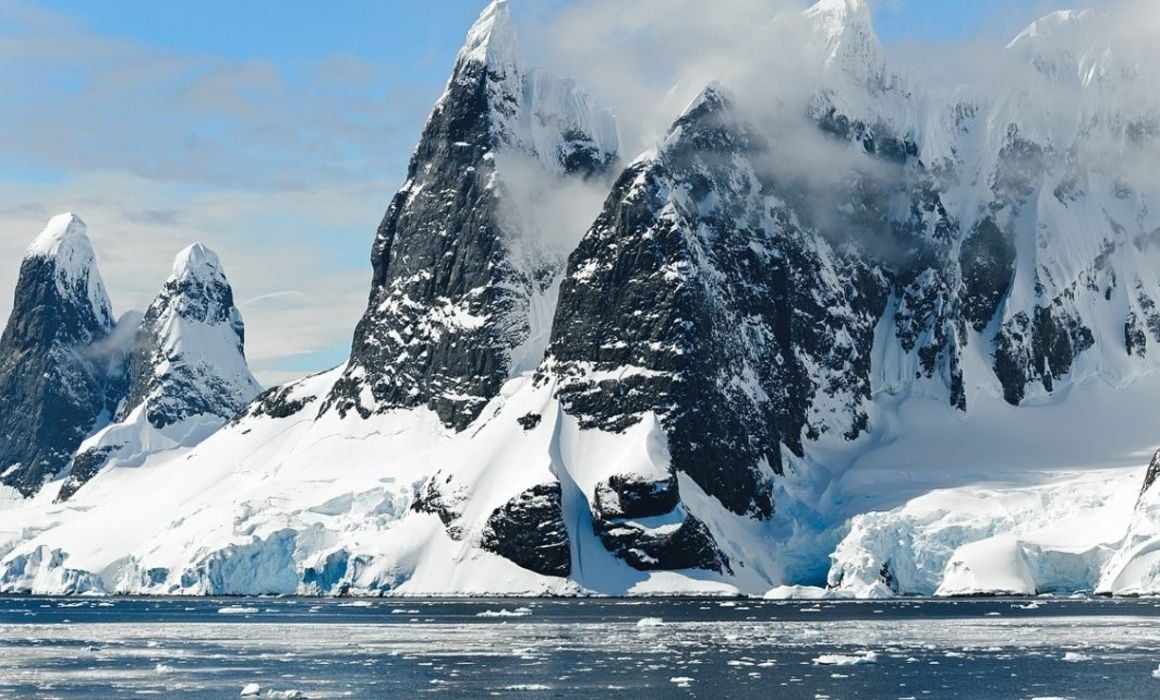
Best Trips to Antarctica
- Best Overall Trip to Antarctica – Quest for the Antarctic Circle
Best Winter Trip to Antarctica – Christmas in Antarctica
Best whale watching trip to antarctica – wwf giants of antarctica .
- Best Budget Trip to Antarctica – Best of Antarctica from Punta Arenas
- Best Trip to Antarctica for Photographers – Spirit of Shackleton
- Most Unique Trip to Antarctica – Antarctic Eclipse
Best Short Trip to Antarctica – Antarctic Express
- Best Camping Trip to Antarctica – Antarctica Classic
Quick Guide to Visiting Antarctica
Final thoughts on the best antarctica trips.
All the trips to Antarctica that we’ve rounded up are marine expeditions. That means long, sunny days exploring the icy formations and spying on wildlife, and nippy evenings snuggled up in your toasty cabin. But, rather than a traditional cruise, these adventures feel more like a private expedition.
Bear in mind that the tourist season for Antarctica holidays is limited to November – March (summer in the South Hemisphere). All the trips we’ve curated sail during these five months. Outside of the summer season, the tourist cruises are halted as the temperatures plummet. Plus, to access this isolated corner, it’s going to cost you. But a trip to Antarctica is an adventure of a lifetime and it’s worth every last penny to see these heartstopping sights.
Let’s find the best Antarctica tour package for you…

Unlock Our GREATEST Travel Secrets!
Sign up for our newsletter and get the best travel tips delivered right to your inbox.
Best Overall Trip to Antarctica – Quest for the Antarctic Circle
- Number of days: 14
- Price: $9,682 USD
- Group Size: Max 134
- Fitness Required: Light
- Accommodation type: Comfortable expedition cruise ship / 1 night hotel
- How many meals included: 13 breakfasts, 11 lunches, 12 dinners
- Service Level: Marine comfort / high standard
This fortnight-long expedition starts and finishes at Ushuaia, Argentina. Brace yourself for the turbulent Drake Passage , known as one of the world’s most dangerous stretches of sea. Assuming the conditions are favourable, your voyage then takes you over the Antarctic Polar Circle. Few travellers have the opportunity to venture this far south; in fact, this is the only trip we’ve found that makes the crossing, making this one of the most unique trips to Antarctica.
The rest of the trip takes you to the South Shetland Islands and down along the western coast of the Antarctic Peninsula . Once here, you’ll be in and out of the Zodiac boats. Keep your eyes peeled for a massive rookery of penguins and pod of whales gliding through the frigid waters. All in all, a terrific overview of the Great White Continenent.
If you want a slightly shorter and cheaper option, check out the Antarctica Classic expedition . This one skips crossing the Polar Circle and is one of the most budget trips to Antarctica we’ve seen.
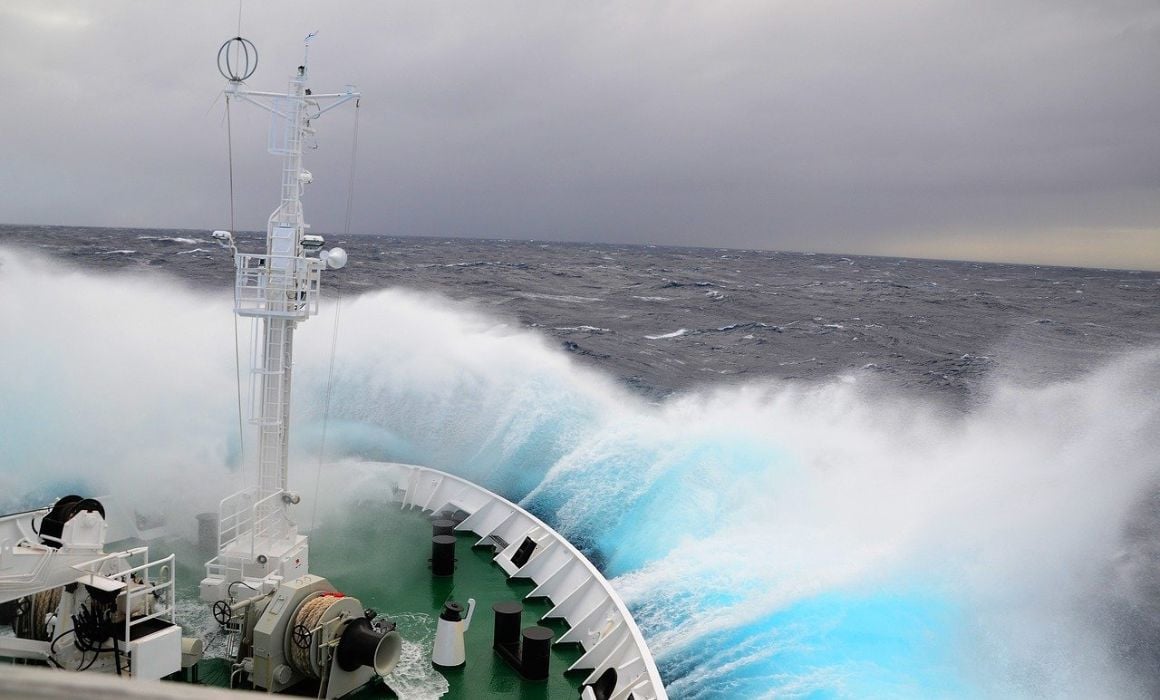
Who is this tour best for?
Bucketlisters, couples, families with children over 10.
- It’s not cheap
- Antarctic kayaking is not included in the cost and must be purchased separately at the time of booking
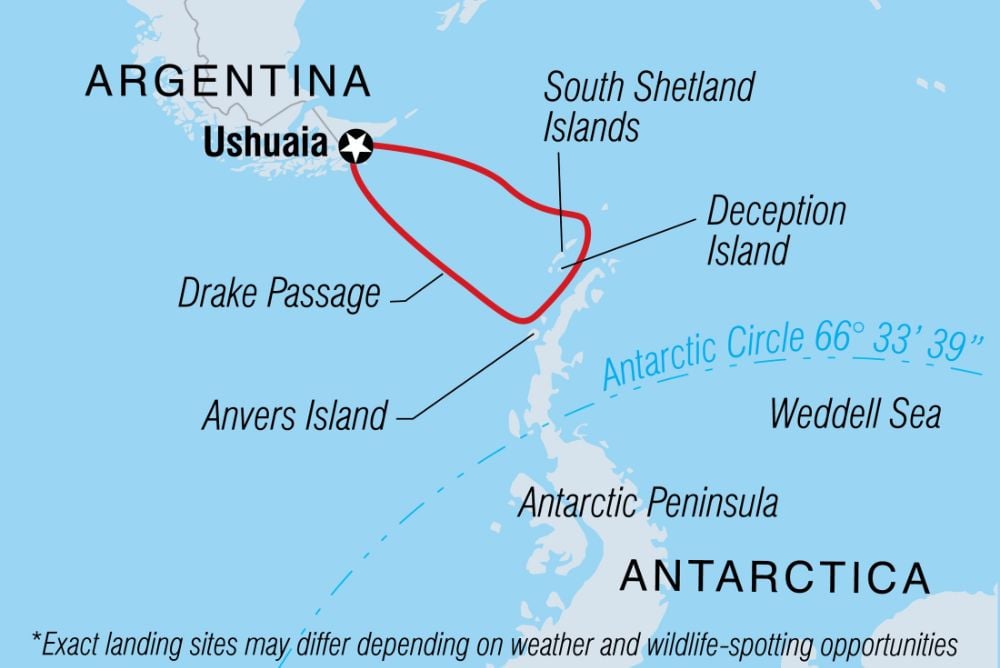
- Number of days: 11
- Price: $9,525 USD
- Group Size: Max 200
- How many meals included: 10 breakfasts, 8 lunches, 9 dinners
Treat yourself to a truly magical Christmas this year and join this festive winter trip to Antarctica. Not to confuse you if you already live in the South Hemisphere – when we say the best winter trip to Antarctica, we’re talking to your Northern neighbours with a lust for a snowy Christmas.
The festive season is one of the most active times for Antarctic wildlife. That means there are plenty of opportunities to see penguins, seals and whales under the midnight sun. In between Zodiac excursions, you can wind down in the onboard wellness spa and saunas, or take a yoga class . Christmas Day will be spent along the Antarctic Peninsula – providing the weather conditions cooperate, you’ll have two landings to look forward to. It’s as white a Christmas as you’ll ever get.
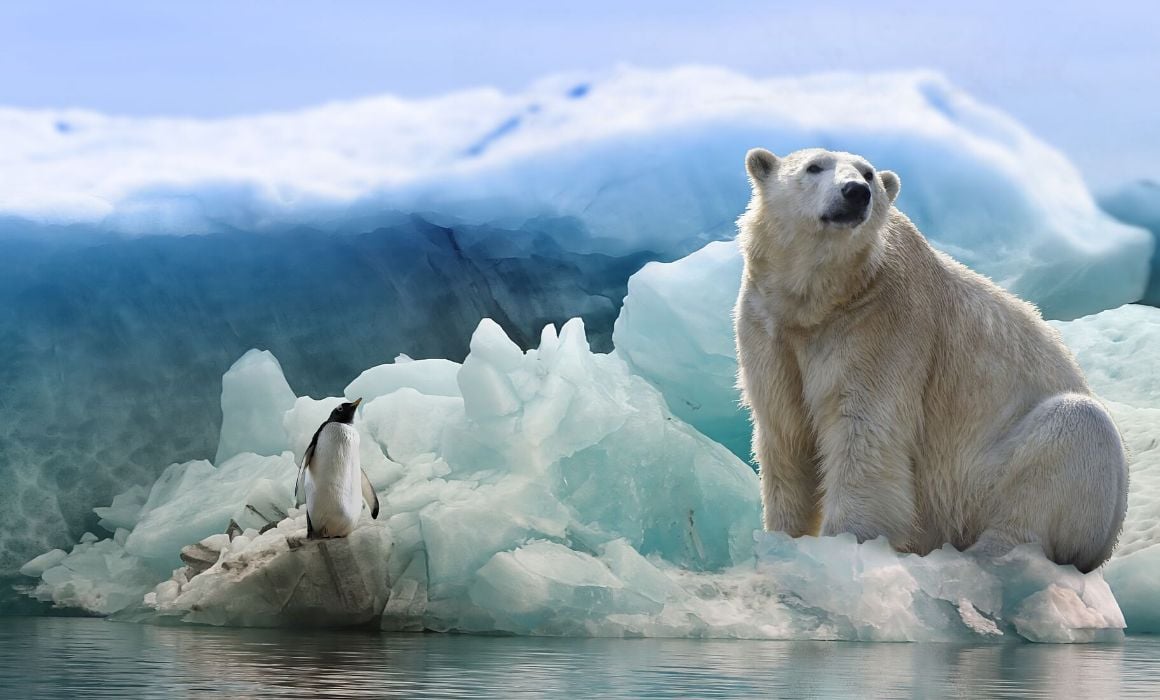
Couples, families, solo travellers (single cabins are available at the same price as some twins). Travellers who prefer to get away over the Christmas holiday.
- Prices for flights this close to Christmas may be inflated
- While all meals onboard are included, drinks are not. Over Christmas, this might rack up your bill if you’re not mindful of your spending
- Price: $10,599 USD
Intrepid has teamed up with the World Wildlife Fund Australia to curate the best Antarctica tour package for wildlife enthusiasts. Joining you onboard this voyage is the marine ecologist Dr Ari Friedlaender and his team of scientists. During the course of the trip, Ari will provide a series of comprehensive talks about the history, geology, and biology of Antarctica. Additionally, Ari will accompany you on your daily excursions, providing a rich insight onto Antarctica’s wildlife.
To optimise your chances of sightings, this tour is scheduled right in the midst of peak humpback whale season. You stand an excellent chance of seeing these majestic creatures slicing through the water with your own eyes. What else can we say other than you’ll have a whale of a time.
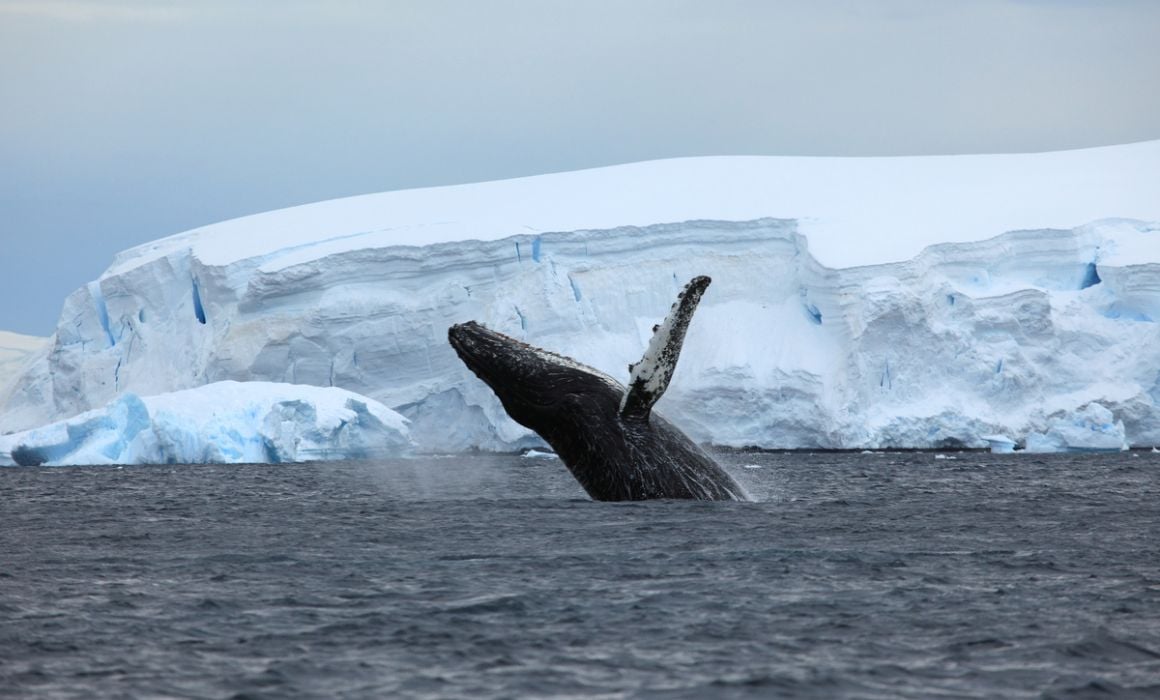
Anyone eager to learn more about the biology of Antarctica – particularly marine wildlife enthusiasts. Photographers.
- There is only one set of dates available for this tour: 16 – 26 February
- One of the more expensive tours

Wanna know how to pack like a pro? Well for a start you need the right gear….
These are packing cubes for the globetrotters and compression sacks for the real adventurers – these babies are a traveller’s best kept secret. They organise yo’ packing and minimise volume too so you can pack MORE.
Or, y’know… you can stick to just chucking it all in your backpack…
Best Budget Trip to Antarctica – Best of Antarctica from Punta Arenas
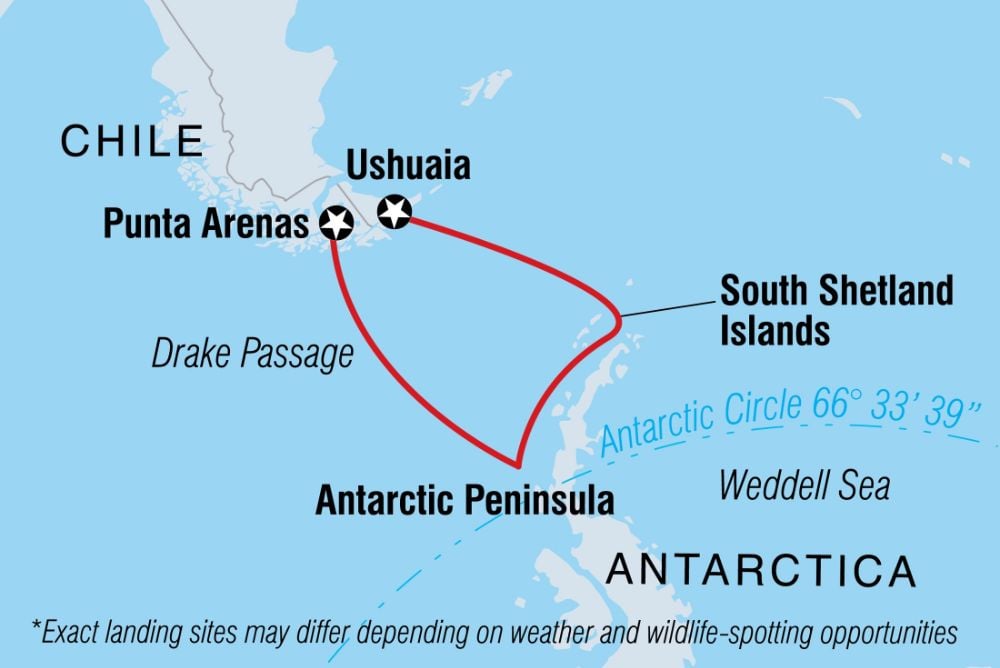
- Price: $6,148 USD
Alright, you need to take a ‘budget’ trip to Antarctica with a tiny pinch of salt. This isn’t going to be your standard ten bucks a day set-up – it’s still an Antarctic expedition at the end of the day. However, this trip does come at a much more wallet-friendly price than other trips. Plus, with ten nights at sea, you’re still getting ample time to explore and seeing similar sites to other trips on the list.
Your route follows the dramatic Drake Passage before sailing along the Antarctic Peninsula and giving you a chance to explore the South Shetland Islands. While aboard, you will learn a thing or two about your upcoming explorations. There is a series of lectures and workshops presented by photographers, marine biologists, and glaciologists to keep you occupied.
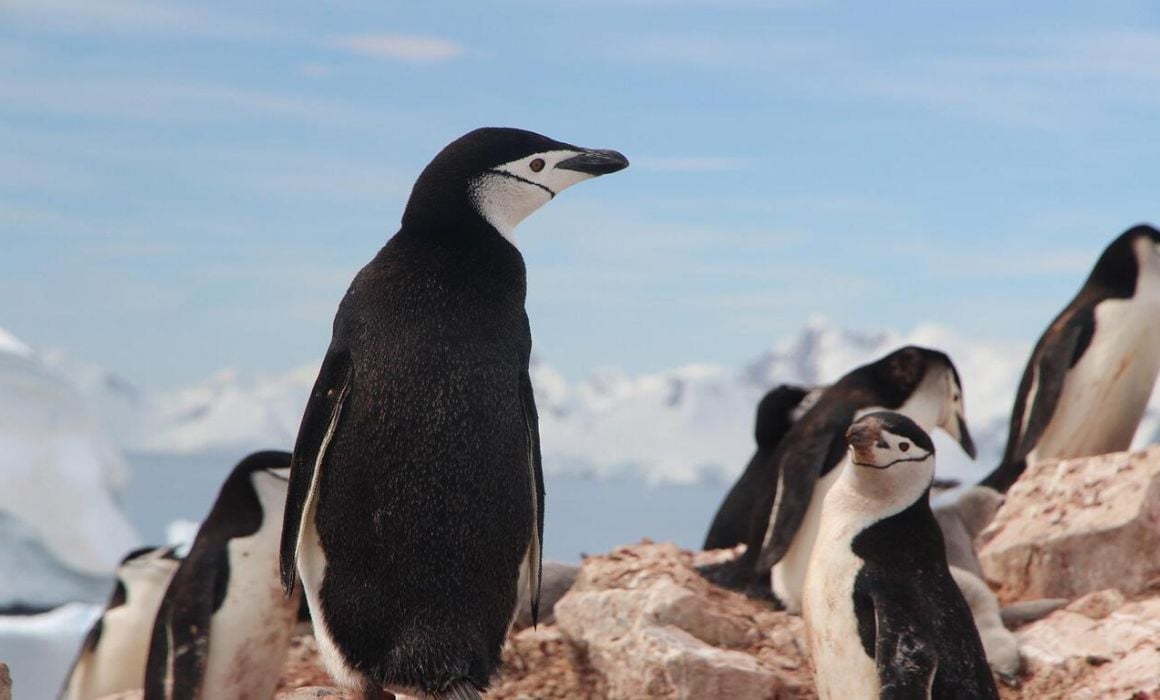
Travellers on a (slightly) smaller budget. Those who want to see a bit of Chile as well as Argentina onto the trip.
- The trip departs from Chile and ends in Argentina so depending on your nationality, you may require two visas. It might also impact your inbound/outbound travel costs
- The cheapest cabins do not have a window/porthole. Bear that in mind if you suffer from claustrophobia (or simply enjoy an ocean view)
Best Trip to Antarctica for Photographers – Spirit of Shackleton
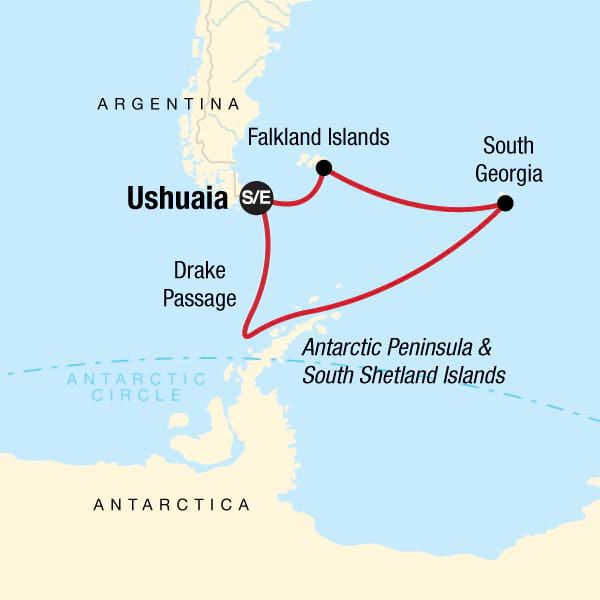
- Number of days: 21
- Price: $15,515 USD
- How many meals included: 20 breakfasts, 18 lunches, 19 dinners
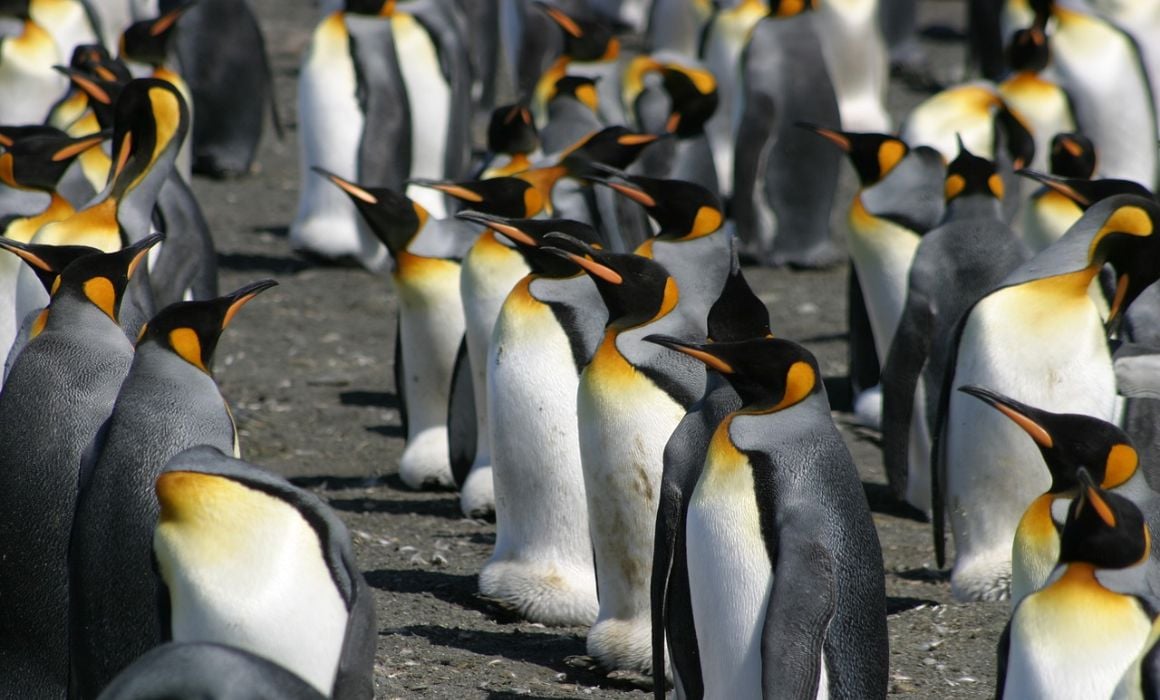
Photographers, film-makers, couples, older travellers . Those taking a gap year/sabbatical.
- This is the most expensive trip on our list (but on the plus side, it’s also the longest)
- As sensational as the midnight sun is, some passengers struggle to sleep. Don’t forget to take a quality eye mask to ensure your beauty sleep on the lengthy trip
Most Unique Trip to Antarctica – Antarctic Eclipse
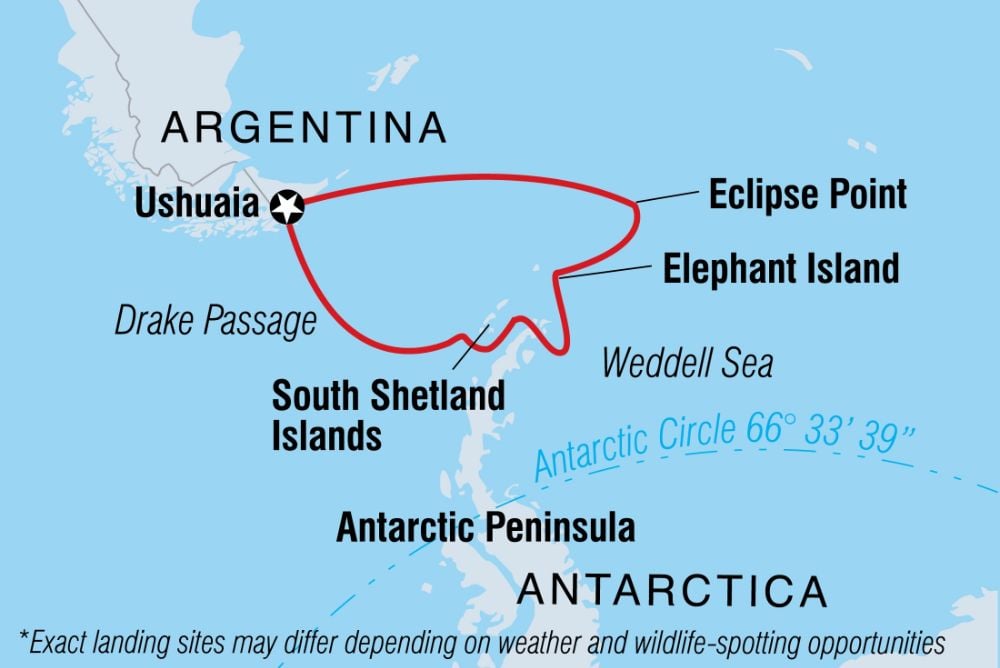
- Price: $12,722 USD
Just try and eclipse this tour. Aside from the rugged glacial landscapes, once-in-a-lifetime wildlife spotting, and immersive Zodiac explorations, you get to witness a total solar eclipse. As you cruise towards Eclipse Point, look out for Adelie and gentoo penguins, leopard seals, sea birds, and whales.
Overnight, the ship will travel into what’s called “the zone of 100% obscuration.” Not to get too technical, but this is a specific region of coordinates where the eclipse will last the longest possible time. Very early in the morning, you’ll be invited on deck to experience the eclipse in all its glory through specialised goggles (provided).
You’ll have an onboard astrophysicist and meteorologist on hand to explain this natural phenomenon. Plus, they’ll help you snap a professional shot – that way, you can take home the perfect souvenir from the most unique trip to Antarctica.
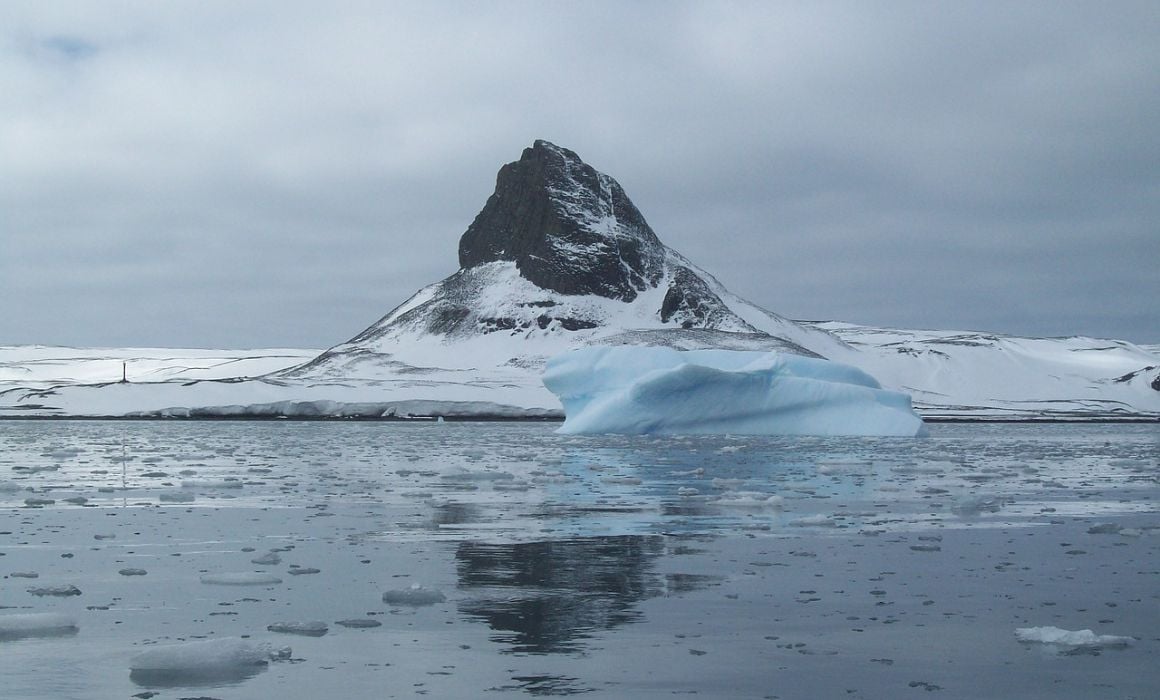
Photographers, bucket listers, older travellers, astrology hobbyists. Couples – this is the best tour in Antarctica for a honeymoon!
- Very expensive
- You’ll need to pack carefully for this long trip – domestic flights within Argentina aren’t generous with their hold luggage
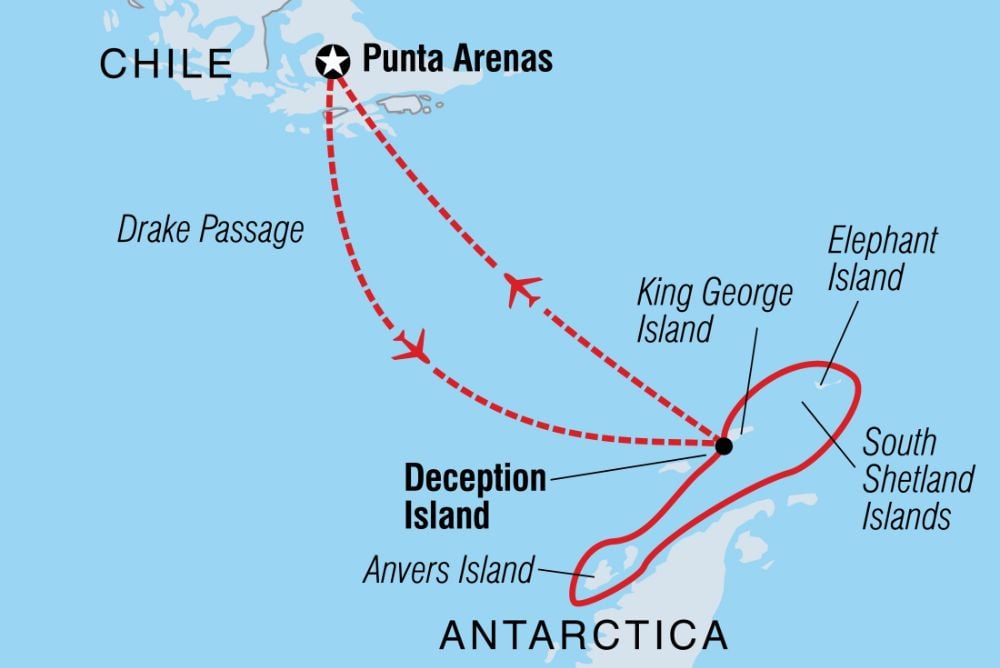
- Number of days: 8
- Price: $11,315 USD
- Group Size: Max 132
- How many meals included: 7 breakfasts, 4 lunches, 6 dinners
If your heart is set on Antarctica but your annual leave allowance is holding you back, take the fast track. From Punta Arenas (Chile), you’ll fly over the infamously choppy waters of the Drake Passage to King George Island. Once at your dramatic embankment point, you can hop aboard your ship bound for the frozen wonderland. Cruise between towering icebergs floating in iridescent blue seas, and feel the thrill of catching the first glimpses of Antarctica’s icy shoreline.
Over the next four days, you’ll explore a number of islands and landings by Zodiac before flying back to Punta Arenas . This trip means you spend less time at sea but don’t miss out on the glacial sights of the Antarctic Peninsula or the islands.
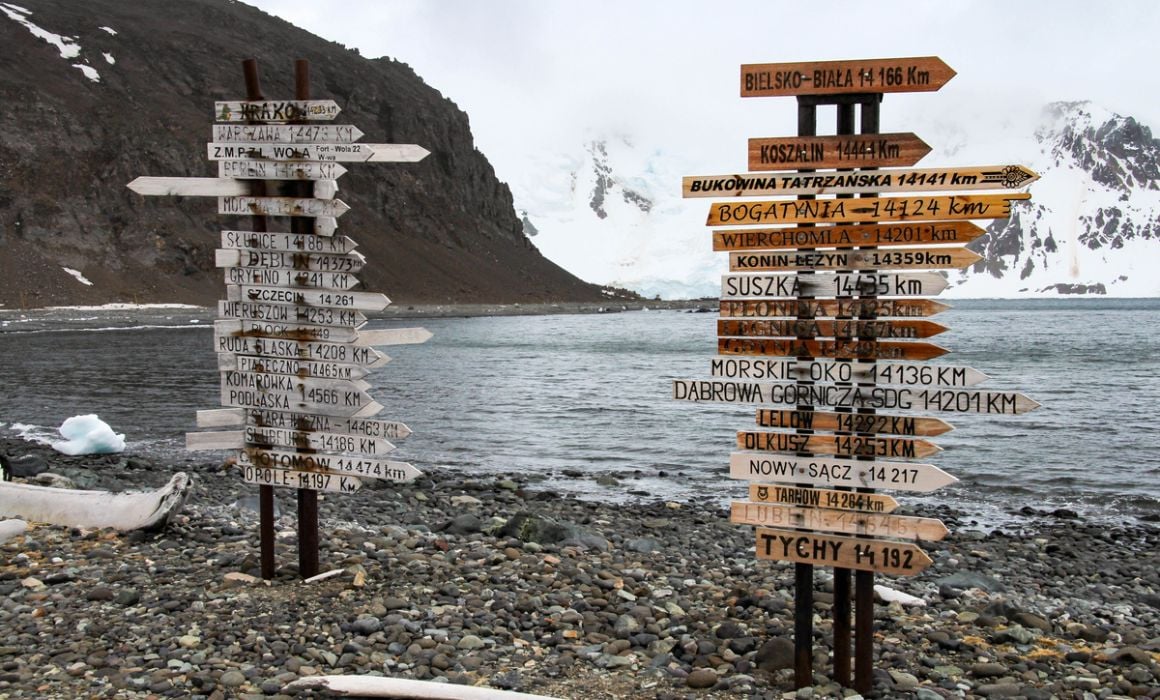
Travellers with a time limit. You still get a decent chunk of time to explore the continent, but flying over the Drake Passage saves you a few days of travel time.
- A walk of approximately 1.5km is required between the runway on King George Island and the zodiac landing point. Your luggage is transferred for you
- Flights to King George Island from Punta Arenas can be disrupted by adverse weather conditions. Travel insurance is a must, in case you encounter a delay
Best Camping Trip to Antarctica – Antarctica Classic
- Price: $6,882 USD
- Accommodation type: Comfortable expedition cruise ship / 1 night hotel. 1 night camping on the Antarctic Peninsula (if selected at purchase)
If you didn’t think it was possible to camp on the Great White Continent, think again. With this trip, it is possible to add one night of sleeping on an iceberg under the midnight sun. Just try and get more adventurous than that.
Now, one downside to this trip is that the camping element is an added-extra, so you’ll need to factor in the extra cost. However, this trip is slightly cheaper than other itineraries that offer camping. Plus, the scheduled dates align perfectly with the warmest months in Antarctica. If there’s ever an occasion to tick camping in the South Pole off your list, this is it.
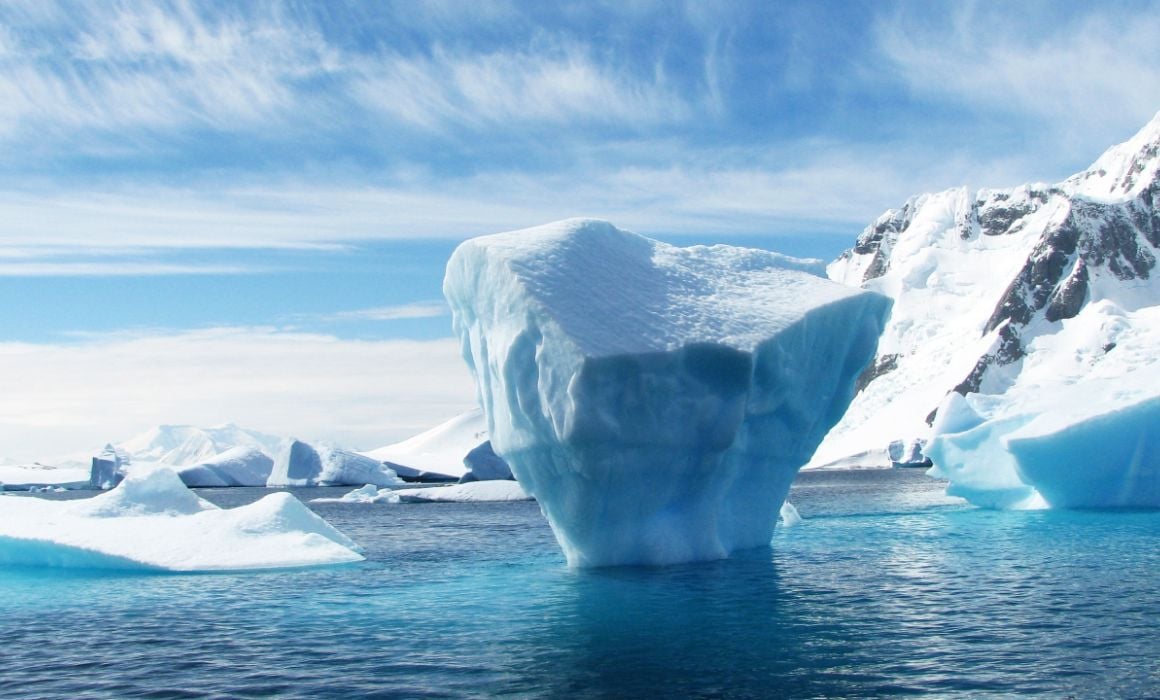
Bucketlisters, couples, photographers. Anyone adventurous enough to camp on the South Pole.
- You must book your camping slot at the time you book this vacation in Antarctica – spaces are capped at 60 people
- If you want to add kayaking to your trip, that’s an extra in addition to the cost of the camping excursion
Best Time to Visit Antarctica
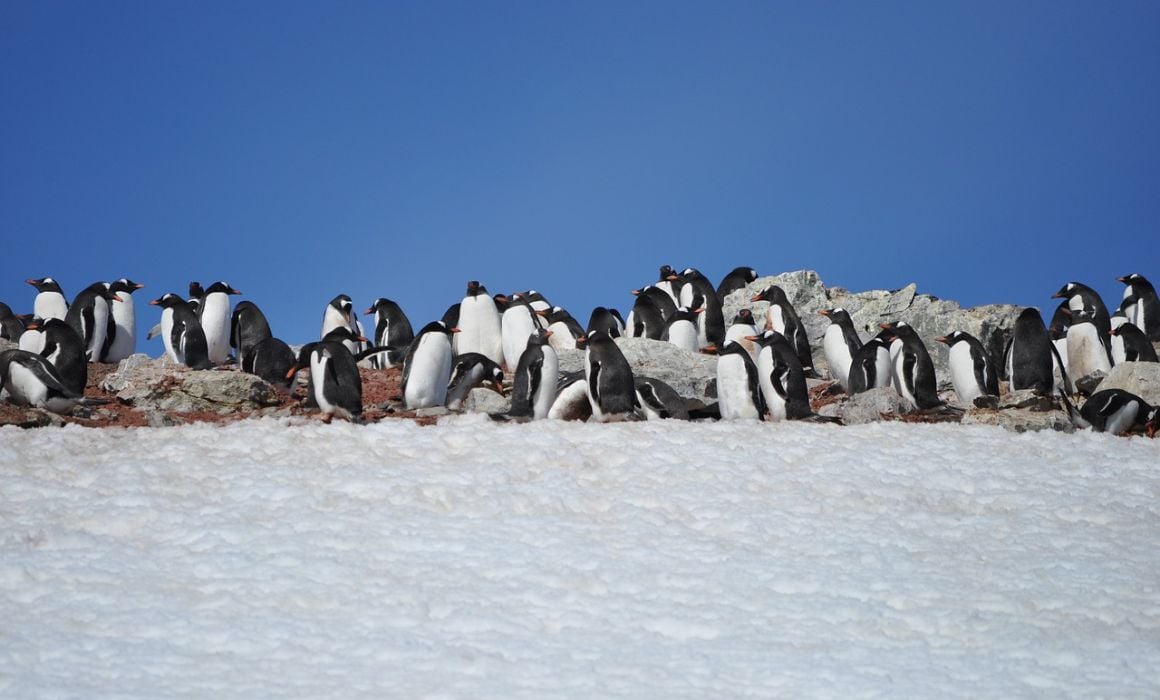
The best time to book your vacation in Antarctica is during the five months of Southern Hemisphere summer – November to March. At this time of year, the sea ice melts enough for expedition vessels to power their way through the giant slabs of ice.
Visit early in the season (November to mid-December) for a chance to see the courting rituals of penguins and seabirds. You’ll also see the summer wildflowers come into bloom on the Falkland and South Georgia Islands.
On the other hand, if you’ve got your heart set on camping, the milder weather of mid-December and January makes this more likely. Generally, this is also an excellent time for photography, thanks to the midnight sun. Look out for seal pups, too. Deeper into January as the temperatures peak, you may be lucky enough to catch a glimpse of hatching baby penguins.
Towards the end of the season, temperatures cool, but you can experience sensational Antarctic sunrises and sunsets over the snow algae. This is also the climax for whale sightings, fledgeling penguin chicks, and moulting elephant seals. Come late March, the season for tours in Antarctica wraps up for the year.
Travel Insurance for your Antarctica trip
It doesn’t matter where in the world you’re going – one thing you should always consider is some trusty travel insurance. Yeah, we know you’d much rather put that cash towards some new lenses for your camera, but if you get into a pickle, it’s that travel insurance that’s going to have your back.
Also, don’t forget that all trips to Antarctica require travellers to have a valid policy. If you turn up at the harbour without proof of travel insurance, the CEO is obligated to turn you away.
Cruising around the South Pole might not sound dangerous, but there is a high risk of travel disruption. You need that cover in case a flight is delayed or cancelled. And while we really hope you don’t need to use it, you will also need evidence of medical, repatriation and emergency rescue cover. If you’re taking fancy tech with you, don’t forget to add protection to your policy.
ALWAYS sort out your backpacker insurance before your trip. There’s plenty to choose from in that department, but a good place to start is Safety Wing .
They offer month-to-month payments, no lock-in contracts, and require absolutely no itineraries: that’s the exact kind of insurance long-term travellers and digital nomads need.

SafetyWing is cheap, easy, and admin-free: just sign up lickety-split so you can get back to it!
Click the button below to learn more about SafetyWing’s setup or read our insider review for the full tasty scoop.
What to Pack for Antarctica
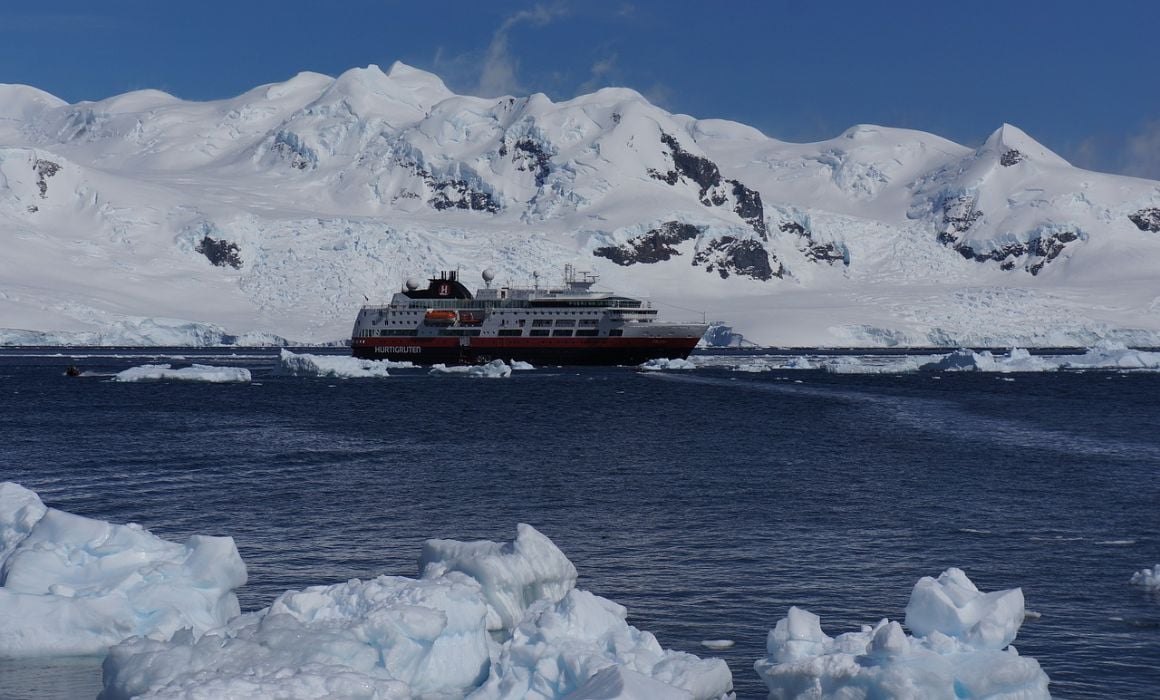
Packing for your Antarctica vacation demands more thought than your classic beach vacation. You need to prepare for both near-freezing temperatures and intense sunlight. Plus, remember that you may be clambering in and out of Zodiacs several times a day. You’ll need to deck yourself out in clothing that’s waterproof, warm, and doesn’t hinder your mobility.
Bear in mind that all tours in Antarctica do require some mandatory gear, which we’ve listed below.
- Camera
- Binoculars (highly recommended)
- Waterproof day pack and/or drybag (mandatory for daily Zodiac excursions)
- First-aid kit
- Fleece / down jacket
- Waterproof trousers (mandatory for all Zodiac landings)
- Thermal base layers
- Polarised sunglasses
- Footwear with excellent grip – open-toed shoes are not allowed in public spaces on any expedition ship
- Hat, scarves and warm gloves or mittens .
- Sunscreen and SPF lip balm
- Seasickness tablets
- Outlet adapter
- Swimwear for the Polar Plunge (some expedition ships also have heated pools onboard, if that sounds more appealing)
- Face masks and hand sanitiser (mandatory)

Things go wrong on the road ALL THE TIME. Be prepared for what life throws at you.
Buy an AMK Travel Medical Kit before you head out on your next adventure – don’t be daft!
There you have it – the eight best trips to Antarctica, plus all you need to know about visiting this breathtaking place. All the tours we’ve shared offer a comparable level of comfort and the chance to spot wildlife and plant your feet on the continent. Ultimately, the decision comes down to what wildlife you are most eager to see and how cold you’re prepared to get – and, of course, how much you want to spend on your vacation in Antarctica,
If we have to pick just one, our favourite tour is the Quest for the Antarctic Circle . This one gives you a thorough sweep across the Drake Passage and the Antarctic Peninsula, and even takes you beyond the Antarctic Polar Circle. Considering the length of the trip, the price isn’t unreasonable, either.
Whichever one you go with, Antarctica holidays are the adventure of a lifetime.
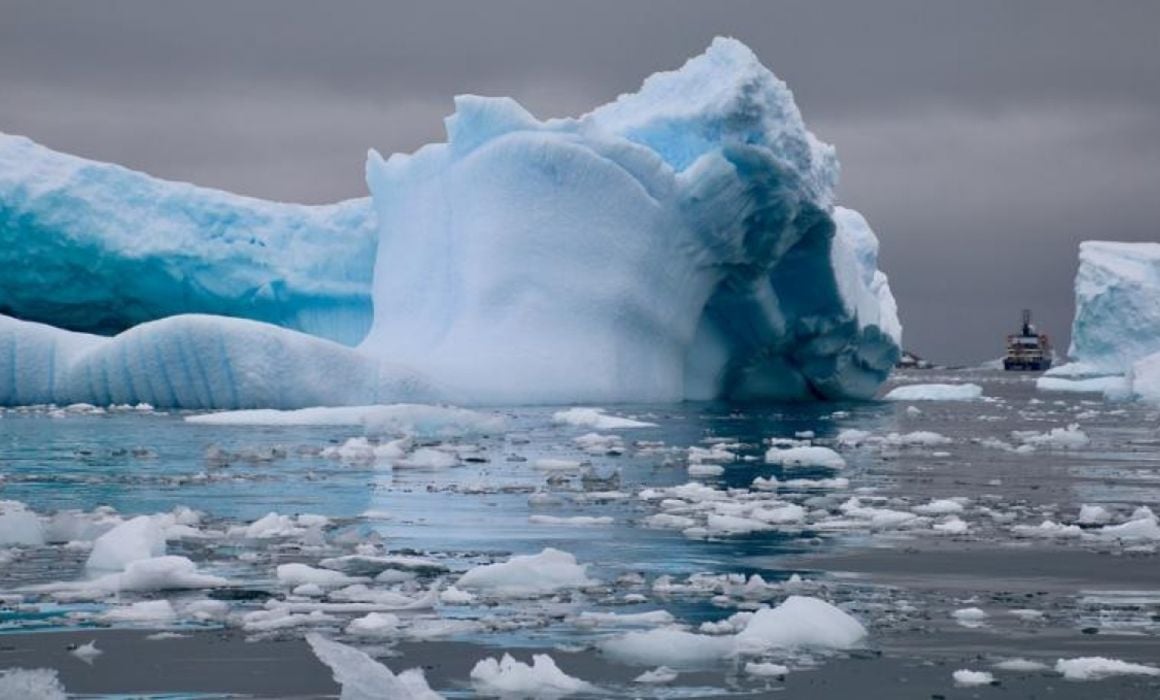
Ana Pereira
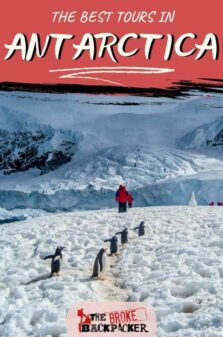
Share or save this post

Leave a Reply Cancel reply
Your email address will not be published. Required fields are marked *
Save my name, email, and website in this browser for the next time I comment.
Notify me of followup comments via e-mail.
An official website of the United States government
Here's how you know
Official websites use .gov A .gov website belongs to an official government organization in the United States.
Secure .gov websites use HTTPS. A lock ( Lock Locked padlock ) or https:// means you've safely connected to the .gov website. Share sensitive information only on official, secure websites.

Antarctic Research
Status: archived, important information for proposers.
All proposals must be submitted in accordance with the requirements specified in this funding opportunity and in the NSF Proposal & Award Policies & Procedures Guide (PAPPG) that is in effect for the relevant due date to which the proposal is being submitted. It is the responsibility of the proposer to ensure that the proposal meets these requirements. Submitting a proposal prior to a specified deadline does not negate this requirement.
Supports collaborative polar and cyberinfrastructure research on the interactions between the Antarctic region and global systems, and on Antarctic systems, biota and processes. Workshops, conferences and research coordination networks are also supported.
The Antarctic Sciences Section (ANT) of the Office of Polar Programs (OPP) supports cutting-edge research that:
- Improves understanding of interactions among the Antarctic region and global systems;
- Expands fundamental knowledge of Antarctic systems, biota, and processes; and
- Utilizes the unique characteristics of the Antarctic region as a science observing platform.
The U.S. Antarctic Program (USAP) supports scientific research in Antarctica and the Southern Ocean with logistics provided by OPP’s Antarctic Infrastructure and Logistics Section (AIL). Antarctic fieldwork is supported only for research that must be performed, or is best performed, in Antarctica. ANT encourages research, using existing samples, data, and models, that do not require fieldwork.
ANT encourages and supports research that crosses and combines disciplinary perspectives and approaches. ANT also supports proposals that promote effective collaborations between Polar and cyberinfrastructure researchers.
When making investments, ANT seeks broad representation of PIs and institutions in its award portfolio, including a geographically diverse set of institutions (including those in EPSCoR jurisdictions) and PIs who are women, early-career researchers, members of underrepresented minorities, veterans, and persons with disabilities.
Program contacts
Additional program resources.
- USAP Information for Proposers on USAP.gov
- U.S. Antarctic Program portal
- Dear Colleague Letter: Data Management and Data Reporting Requirements for Research Awards Supported by the Office of Polar Programs
- United States Antarctic Program Data Center (USAP-DC)
- Grantee Deployment Packets and Information
- OPP Policies
- U.S. Antarctic Program Participant Guide
Awards made through this program
Organization(s).
- Directorate for Geosciences (GEO)
- Office of Polar Programs (GEO/OPP)
National Geographic content straight to your inbox—sign up for our popular newsletters here

Photo story: a water-borne adventure into fragile Antarctica
An increasingly fragile place of barren shores lapped by bone-chilling waters, Antarctica is home to every form of ice — in snow, glaciers and bergs — and a surprising amount of wildlife.

For Hungry Minds
Related topics.
- PHOTOGRAPHY
- CLIMATE CHANGE
- POLAR EXPEDITIONS
- POLAR REGIONS
You May Also Like

Following early polar explorers on a journey through Canada's Northwest Passage

See the otherworldly beauty of Earth’s polar regions

What it's like to cross Antarctica's Weddell Sea

11 of the best wildlife cruises for 2024 and beyond

Listen to 30 years of climate change transformed into haunting music
- Environment
History & Culture
- History & Culture
- History Magazine
- Mind, Body, Wonder
- Coronavirus Coverage
- Paid Content
- Terms of Use
- Privacy Policy
- Your US State Privacy Rights
- Children's Online Privacy Policy
- Interest-Based Ads
- About Nielsen Measurement
- Do Not Sell or Share My Personal Information
- Nat Geo Home
- Attend a Live Event
- Book a Trip
- Inspire Your Kids
- Shop Nat Geo
- Visit the D.C. Museum
- Learn About Our Impact
- Support Our Mission
- Advertise With Us
- Customer Service
- Renew Subscription
- Manage Your Subscription
- Work at Nat Geo
- Sign Up for Our Newsletters
- Contribute to Protect the Planet
Copyright © 1996-2015 National Geographic Society Copyright © 2015-2024 National Geographic Partners, LLC. All rights reserved
2-FOR-1 GA TICKETS WITH OUTSIDE+
Don’t miss Thundercat, Fleet Foxes, and more at the Outside Festival.
GET TICKETS
BEST WEEK EVER
Try out unlimited access with 7 days of Outside+ for free.
Start Your Free Trial

The Impossible Dilemma of a Polar Guide
Tourism to the Arctic and Antarctica contributes to their demise, and the regions are melting fast. A polar guide of 25 years asks: Should I stay away?
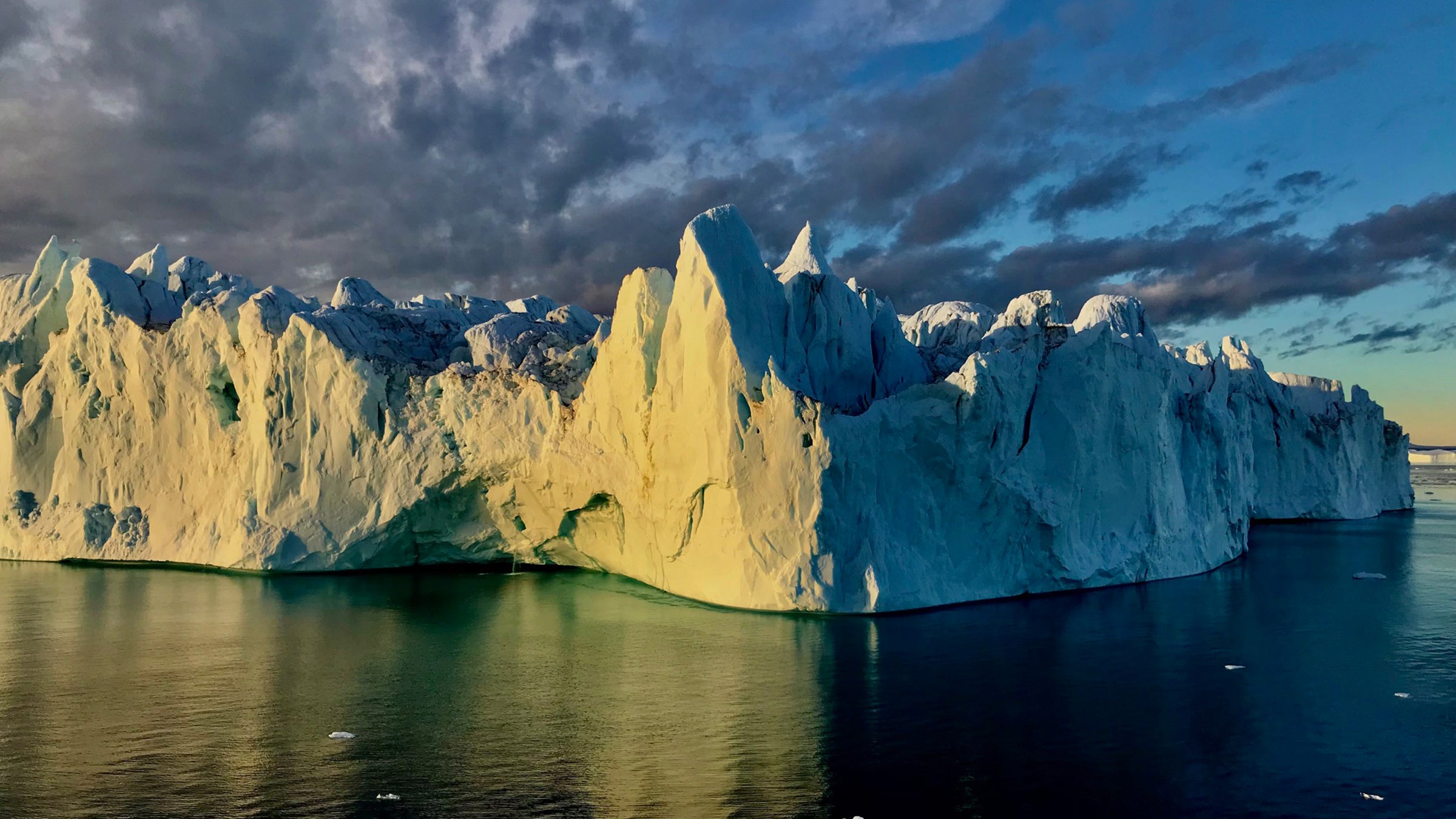
Heading out the door? Read this article on the Outside app available now on iOS devices for members! >","name":"in-content-cta","type":"link"}}'>Download the app .
Though it is night, the ice surrounding us glitters in the sunshine. Only silence and shades of white surround me as I pace the decks. I am on a tourist ship, parked in the sea ice off the coast of Antarctica , for my work as a naturalist. It is 2 a.m., in January. On one side, glaciers drape the mountains, sliding slowly toward the sea. On the other is the frozen ocean. I can’t discern the line between ice and sky. Behind our ship, only the jagged break in the floes indicates that humans have come, and disturbed.
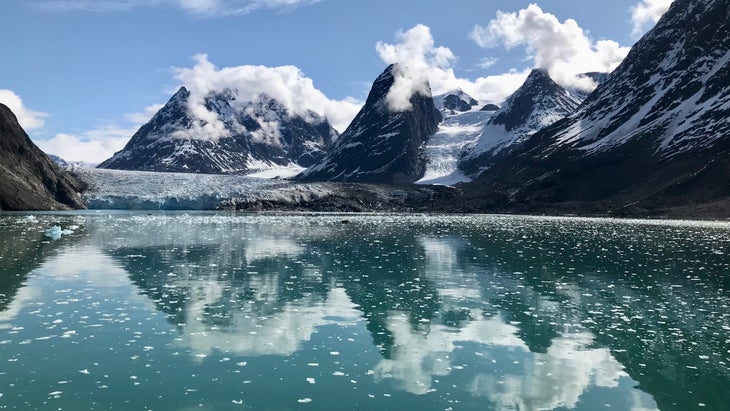
The ice is moving, unseen in the stillness. Melting of Antarctic and Greenland ice, as well as glaciers all over the world, is clearly documented. The polar regions are warming faster than any other place on Earth. Climate change is incontrovertible. I have witnessed it. Yet I know my being here, marveling at this icy world, contributes to its melt.

I have seen a lot of ice.
In 1993, I journeyed to Antarctica on a small ship that lurched through frenzied waters, we 50 passengers clutching the walls as we staggered between communal showers and a pot of pasta plonked unceremoniously on the table for dinner. But I was entranced by the beauty of the land outside. For 25 years, I have worked as a guide in Antarctica and the Arctic, and I wrestle with knowing that I should probably stay at home to avoid further contributing to the climate change affecting my beloved frozen world. But is the best way to protect what I love, never to see it again? Other guides and I discuss this dilemma often. We do not know what to do.
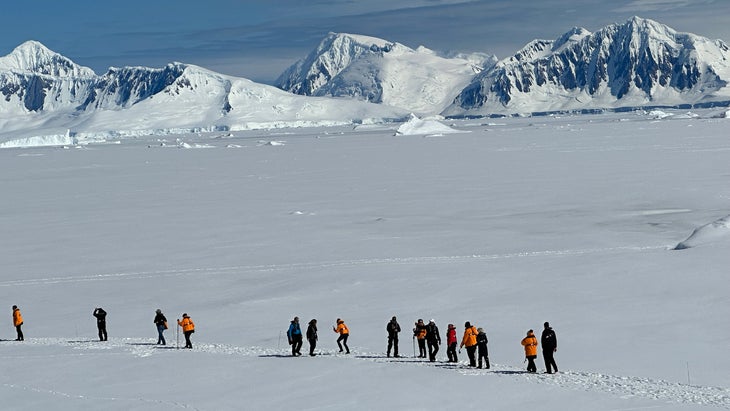
As a naturalist-guide, I take people to shore and talk to them about what they are seeing: wildlife, glaciers, habitat, everything. In all the years I have done this, I have believed that only by seeing the great ice expanses, tasting and smelling the salt air, and touching the cold do people learn to care for these places and join the fight to preserve them. Sea ice retreats to higher and higher latitudes, with shrinking populations of bewildered penguins nesting in previously unimaginable places, and humans now reach sites once only imagined.
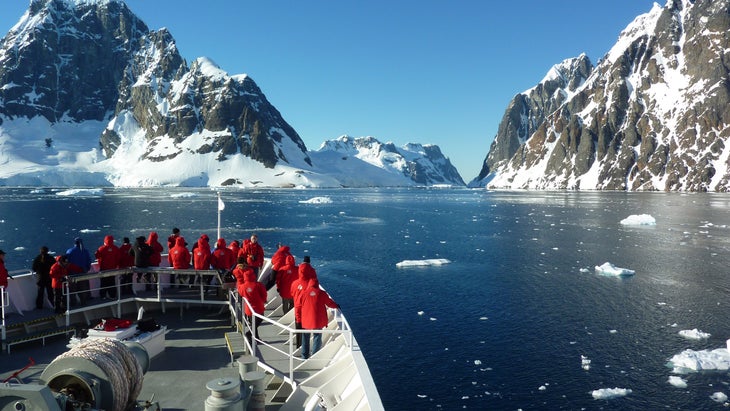
We visitors used to see Adelie penguins everywhere. On some trips now, we are lucky to spot even one. Last year, on a cruise ship designed for luxury rather than serious exploration, we reached the western side of James Ross Island; 20 years ago, in an icebreaking ship three times more powerful, we could not get within about 80 miles. The ships have changed as well. Now luxury ships prevail, and passengers can enjoy champagne, live music, and butler service. On the first icebreaker I worked on, the beds had seatbelts for rough weather, but the communal area for passengers and crew at the bottom of the stairwell was full of laughter.
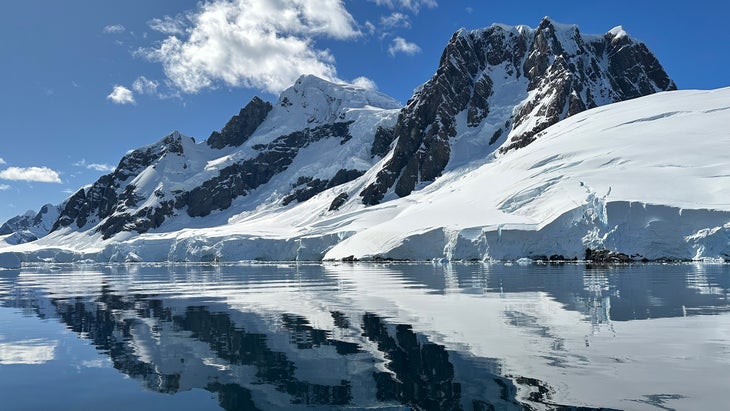
The National Snow and Ice Center reported that 2023 was the record low for maximum sea ice in Antarctica since continuous recording in this region began. The World Meteorological Organization says the Antarctic Peninsula has experienced a 3-degree C (5.5-degree F) temperature rise in the last 50 years. In February 2020, the highest temperature ever recorded in Antarctica was reported at 18.3 degrees C (65 degrees F). The rate of ice loss is three times greater since 2012 than in previous decades; were the Antarctic ice sheet to melt, global sea levels would rise 58 meters (190 feet). Although there is no danger of all the ice in Antarctica or Greenland melting away in any of our lifetimes, visiting tourists often tell me they want to see the ice before it is gone.
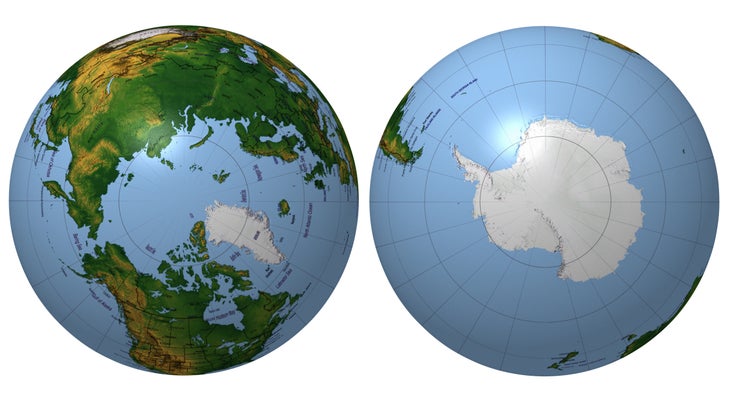
Yet fossil-fuel emissions from travel and human activity accelerate ice melting, trapping all of us who come here to admire these icy realms in a quandary: We further the demise of what we have come to marvel over. When I started as a guide in the late 1990s, approximately 10,000 visitors traveled by ship to Antarctica each year. Now data from the International Association of Antarctic Tour Operators shows over 71,000 in the 2022-23 season.
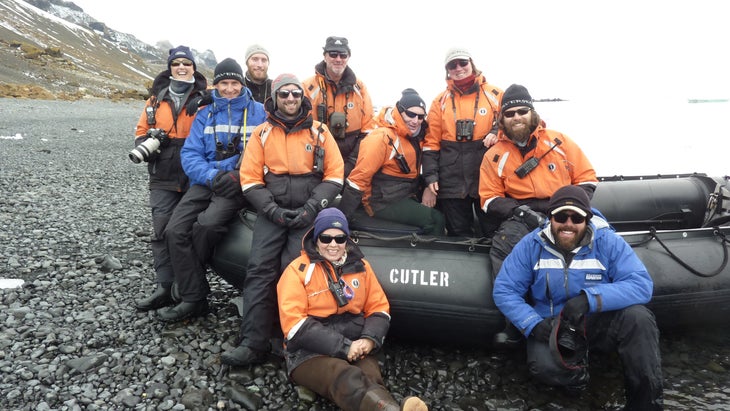
Staring at the ice around me, I wonder about the people below decks, sleeping soundly through the sunshine of the night. Will they act as ambassadors for these regions? My fellow naturalists and I fervently hope so. We feel conflicted by our presence and the presence of the passengers we guide. We love ice, but we also know that our carbon footprint, which contributes to melting, is greater for flying across the world to reach the ships that burn fossil fuels as they steam towards these ends of the earth. We do our best to educate our passengers about climate change and have them understand what they are witnessing. Sometimes it doesn’t feel like enough. Would it be better for us to stay home to protect these regions? Yes. Would other guides step in and take our place? Also yes.
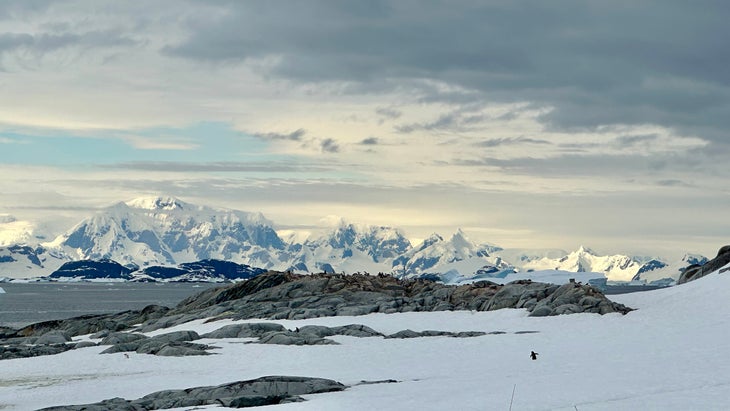
A recent article in Nature described a study of black carbon (essentially soot) in Antarctica resulting from fossil-fuel emissions, and showed that it contributes to the darkening of snow and ice, accelerating melting. More people equals more melt.
In 2022, a group of scientists determined a method for separating natural variability in glacier fluctuations and the contribution humans make to climate change. So far, it has been tested only in computer models, but if it can be applied to actual locations, we could know exactly what human visitation does to this ice. When jagged pieces break and crash into the sea, would tourists shed tears, knowing exactly how much damage they contribute, instead of shouting with joy to see such power?
Most of the ice I have touched is now gone.
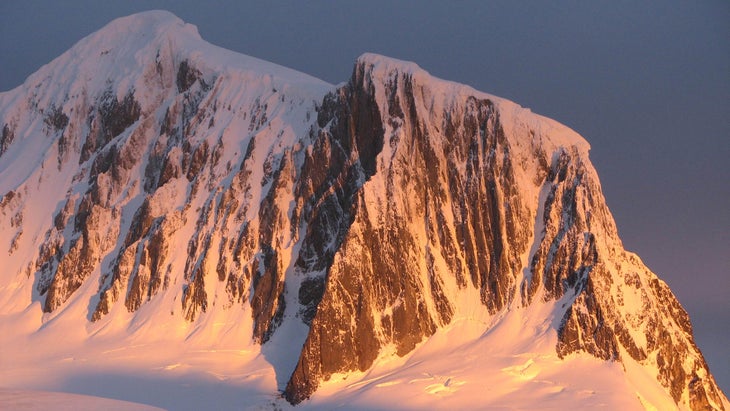
My father, Gunter Weller, was a glaciologist who became a climate scientist before the term existed. He introduced me to Antarctica through the six-foot-long black-and-white photo of Adelie penguins that hung on our living-room wall in Fairbanks, Alaska. His voyages to Antarctica in the early 1960s were a bit different from mine. On two separate occasions, a supply ship dropped him off at the research station and picked him up one year later. There he drove a VW beetle with chains on the tires over glaciers to collect weather data, watched the same black-and-white films so often that he and his co-workers took turns reciting the actors’ lines, and ate eggs of a disturbing color since fresh supplies also only arrived once a year.

His work looked at the effects of climate change on glaciers, which were clear to him already in the 1970s. He became curious when a scientific station buried long ago by ice and snow on the McCall Glacier in northern Alaska melted out (research he did on this glacier was published in a peer-reviewed paper, “Fifty Years of McCall Glacier Research”), and he turned his attention toward what melting ice meant for people and the environment. As kids in Alaska, my sisters and I walked along glacial moraines and explored ice caves with our father. We slipped and slid crazily in our old sneakers as we scrambled behind him, trying to keep up.

Over the years, as my father tried to convince the world that climate change was happening, and people ignored his pleas, he developed a strategy for deniers. He never shouted back when people tried to argue. He calmly told them they were welcome to disregard the clear data and statistics if they wished. But surely, he said, they must acknowledge that we humans have put a lot of horrible stuff into the atmosphere. Wouldn’t the world benefit by reducing that? That usually ended the conversation.
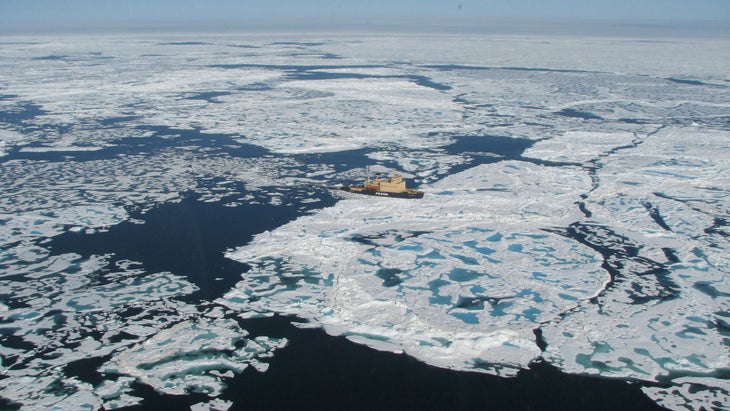
Many people travel to see the natural places on this planet, to glimpse a wild animal in its ferocious splendor, feel the grandeur of vast landscapes, or learn about the world. And yet an analysis in The Scandinavian Journal of Hospitality and Tourism in 2020 of tourists visiting glaciers in Iceland, Canada, New Zealand, and Chile showed that although most guests were aware that this might be the last chance to see these glaciers, few understood that their visits contributed to the demise. Even for the few people who did, the desire to see the destination exceeded concern. The Journal of Sustainable Tourism in 2021 described a study from Churchill, Canada, where tourists flock each fall to view polar bears, that indicated that few visitors associate their air travel with greenhouse gas emissions responsible for melting the ice that the polar bears need for survival. Comparing data from 2008 and 2018, the study found that consumption patterns and CO2 production have not changed despite growing awareness of the impacts.

How sad, this conundrum of desire, guilt, and lack of understanding.
Years ago, I did the same thing, climbing Kilimanjaro in Tanzania with my sister, to see ice at the equator before it was gone. As we rose from the tropical zones, we smelled wet soil turned hard with frost, then tasted the tang of ice. My teeth chattered, my face and fingers froze, and we gasped for breath in the thin air. My father would have loved those glaciers, pink in the rising African sun.
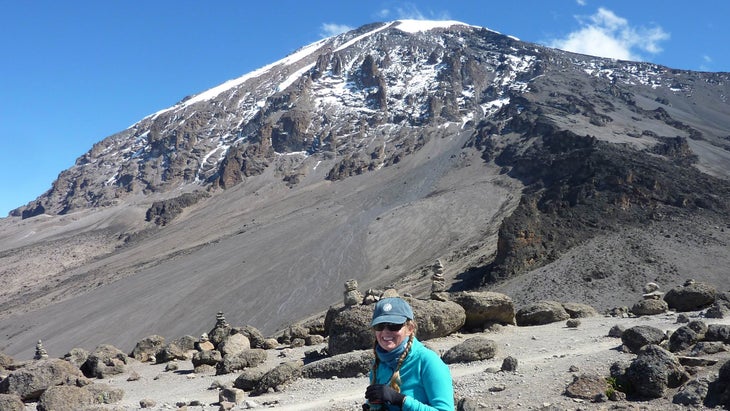
On one of my tour ships, ice blocked the way when we tried to reach the northernmost piece of land in the world, Oodaaq Island in northeast Greenland. Since then, new islands have been revealed as ice melts and now, the northernmost land is a rocky islet called 83-42. Another year we got stuck in sea ice in the Northwest Passage, and even our six-engine, 25,000-horsepower icebreaking ship could not move until the currents released us. Some passengers were frustrated, some bored, and some frightened as we watched the icy rubble press high against the side of the ship. After a week, the ice consented to let us through.
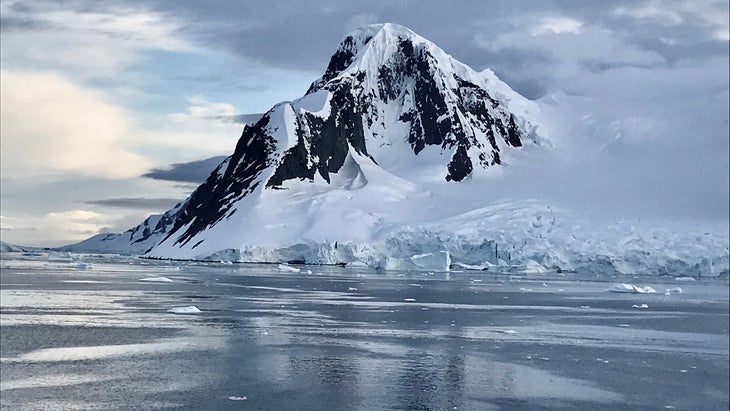
In other years, we made it to the North Pole, in a bigger, nuclear-powered icebreaker that smashed and plowed its way through the thinning sea ice. We found open water at the top of the world, a place that should be solid white. The tourists marveled at the vast expanses of ice surrounding that open water, and a reverence for this landscape shone in their eyes. We tasted the icy brine as we plunged into the open water for lightning-quick swims.
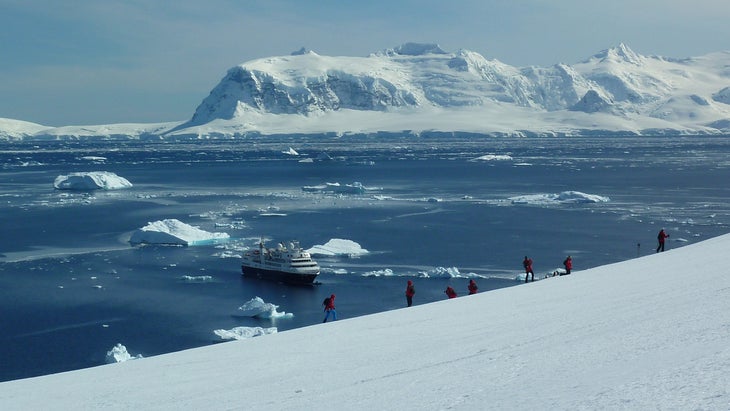
The North Pole trips have become more difficult in subsequent years, because finding solid sea ice in which to park the ship is a challenge. A study published in Nature Communications this year projects that under current greenhouse-gas-emission scenarios, the Arctic Ocean will be ice-free in the summer before 2050. That is soon.
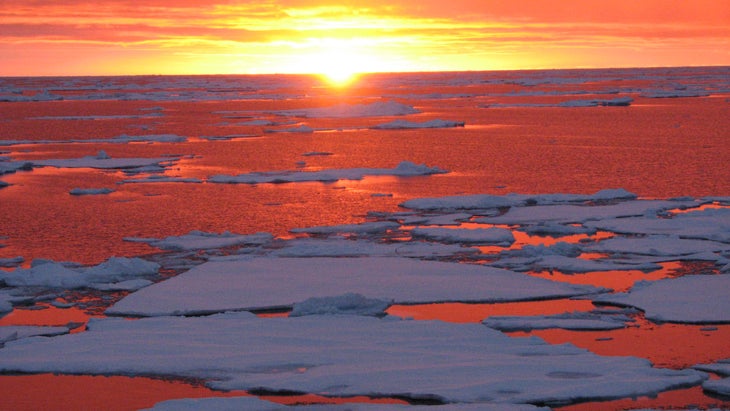
At the annual Antarctic Treaty Consultative Meeting (ATCM) in 2023, the governing body of Antarctica made a resolution known as the Helsinki Declaration. They committed to increasing efforts to communicate the global impact of climate change on Antarctica and the need to prevent irreversible changes.
Do I keep guiding at the ends of the Earth?

Susan Adie, a friend and fellow guide who has worked in the polar regions longer than I have, says she believes that if she can help educate the visitors who travel there and get them to care, and enough caring people educate others, perhaps action can be taken, in many ways, to help the Earth. She says, “If I just give up and say it’s a losing battle, then what kind of a human am I?”
Our lives are enriched by ice, made larger and wilder and somehow more precious. To love cold inanimate objects sounds at odds with all that is logical and right in the world, and yet we do.
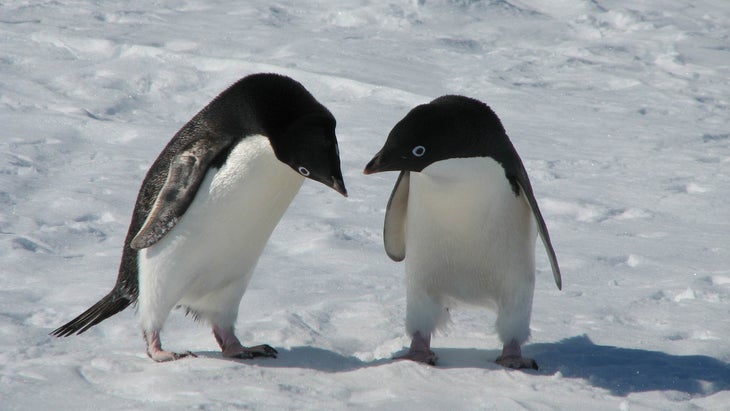
It may be that this one politician, that one influencer, that one poetic writer who listens to us guides, who sees what we see, whose heart can be pierced by a shard of glittering ice, can make a difference in this confusing, messed-up, beautiful world of ours. Maybe I can reach one more person. Maybe just one more trip.
Kara Weller is a ship-based naturalist who works all over the world, but primarily in the polar regions. Although a snow and ice aficionado, when visiting the outhouse at her plumbing-less cabin in minus-40 degree temperatures she dreams of simple things such as flush toilets. She lives in Fairbanks, Alaska.
- Polar Exploration
Popular on Outside Online

Enjoy coverage of racing, history, food, culture, travel, and tech with access to unlimited digital content from Outside Network's iconic brands.
Healthy Living
- Clean Eating
- Vegetarian Times
- Yoga Journal
- Fly Fishing Film Tour
- National Park Trips
- Warren Miller
- Fastest Known Time
- Trail Runner
- Women's Running
- Bicycle Retailer & Industry News
- FinisherPix
- Outside Events Cycling Series
- Outside Shop
© 2024 Outside Interactive, Inc

It's not for everyone: 3 things to know about Antarctica expedition cruises
W hen James Rameson stepped on land in Antarctica during an expedition cruise last month, it’s possible it was the first time anyone had ever set foot on that part of the ice-covered continent.
When the Zodiac boat arrived at the rocky shore, the expedition leader told the Santa Barbara, California, 13-year-old and his fellow passengers – of which I was one – that our group on board Aurora Expeditions’ Sylvia Earle ship may have been the first to visit that particular spot.
Rameson, who took the cruise as a birthday gift with his father, Tyler, 49, made the most of his sudden pioneer status. “I walked over to this random spot, and I'm like, ‘Look, dad, no one has ever been here,’ ” he told USA TODAY. “It's like, ‘I’m the first person to set foot right here,’ which I thought was pretty cool.”
Start the day smarter. Get all the news you need in your inbox each morning.
Not every trip can offer that. “One of the most incredible things about visiting Antarctica is the feeling of exploration and being somewhere very few people have been before,” said Kristin Winkaffe, a luxury travel designer and founder of Winkaffe Global Travel.
But the continent has become an increasingly popular destination. More than 71,200 people visited the ice during the 2022-2023 season, up from around 24,000 in 2021-2022 in the wake of COVID-19 and just under 56,000 in 2019-2020, according to the International Association of Antarctica Tour Operators. There has been a surge in inventory , too, with new ships and itineraries from a range of expedition lines.
Here are three things to know about taking an Antarctica cruise:
I did a polar plunge in Antarctica. It meant more than I expected.
1. You’ll have to cross the Drake Passage – maybe
Most expedition cruises to Antarctica depart from Ushuaia, Argentina, and cross the infamous Drake Passage . The waterway is notoriously treacherous, and travelers could experience a rough “Drake Shake” or calm “Drake Lake” during the journey, which takes about two days to complete each way (you may have seen videos of it on TikTok ).
My trip fell somewhere in the middle on the way down with waves as high as about 13 feet. “A lot of people, even if they haven't experienced seasickness before, tend to experience seasickness on the Drake Passage,” Winkaffe said.
Expedition ships tend to be small, but larger cruise ships visit Antarctica as well and guests may feel the impact of the waves less thanks to their size. However, travelers should note that ships carrying more than 500 passengers are not permitted to take them on land , according to the International Association of Antarctica Tour Operators.
Some cruise operators offer flights over the Drake Passage. But Winkaffe warned that those trips are not only “exponentially more expensive” – Antarctica cruises can range from around $5,000 per person to more than $20,000 and those flights could add between $5,000 and $10,000 – but also less reliable since weather in the area can be unpredictable.
“There is the possibility that (ships will) get canceled or delayed due to weather but they're able to cross during worse weather than the flights are,” she said.
Lindblad Expeditions is the latest operator to add the option, allowing guests to skip potentially rough waters and shave time off their trip. CEO and founder Sven-Olof Lindblad said last month at the luxury travel trade show ILTM Cannes that the brand had long held off due to concerns passengers wouldn’t take off and land as scheduled, but that technology has made the flights more predictable, Travel + Leisure reported .
2. You have to be flexible
Given the extreme climate, Antarctica cruises may not always go as planned.
During my trip with Aurora, the expedition team shared an intended itinerary for the next day each night with guests, with the caveat that it was only a Plan A. After they assessed the conditions upon arrival, we sometimes explored by Zodiac rather than attempting to go on land or relocated altogether.
That may be an adjustment for travelers who have been on other types of cruises with detailed itineraries from start to finish. “Antarctica is a totally different beast in that you basically just have to accept that you’re going on a tour to Antarctica and not get attached to any specific place,” Winkaffe said.
She recommended going into the trip with a “sense of adventure,” and that travelers avoid Googling specific locations ahead of time to minimize disappointment if they don’t make it there. Destinations may also look different from their photos, particularly because the environment changes throughout the year (the Antarctica cruise season runs from October through March , encompassing its summer).
“Everybody has FOMO ( fear of missing out ) and everything, but everybody’s experience is different,” said Jeff Nagel, the assistant expedition leader on my trip.
3. Keep the environment in mind
As harrowing as the Antarctic environment can seem, it’s also vulnerable. Scientists have already warned of dire impacts due to climate change.
That makes visiting with care especially important. On board the expedition with Aurora, we received information on the International Association of Antarctica Tour Operators guidelines and followed biosecurity protocols , like cleaning and having our gear inspected to avoid transporting nonnative species and scrubbing our boots after landings (the ship even played songs like Taylor Swift’s “Shake It Off” while we twisted our feet against rubber mats to remove debris).
“We are aware that, of course, in spite of all the work we do to make it as sustainable … as possible, we do have an impact,” said Mario Placidi Spring, the expedition leader on my trip.
What is wave season?: Why you should book your next cruise now
Winkaffe recommended doing research before booking and choosing a cruise operator that is putting effort and money toward operating sustainably.
“I'd like to believe that through our educational programs and (other programming) on board that we are creating ambassadors, and people are going home and maybe thinking about those small changes they can make in their life that will protect these areas and protect the world as a whole,” Nagel added.
Editor’s note: The reporter on this story received access to this expedition from Aurora Expeditions. USA TODAY maintains editorial control of reviews.
Nathan Diller is a consumer travel reporter for USA TODAY based in Nashville. You can reach him at [email protected].
This article originally appeared on USA TODAY: It's not for everyone: 3 things to know about Antarctica expedition cruises
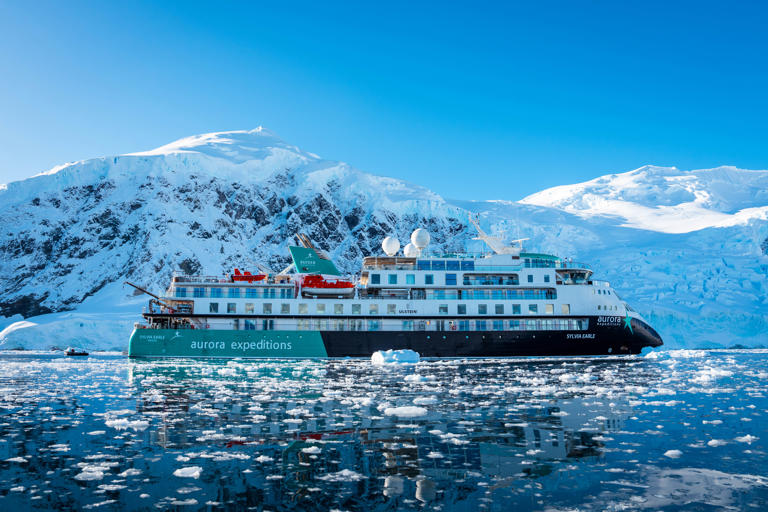
California second-grade teacher becomes rare traveler to visit every country in the world
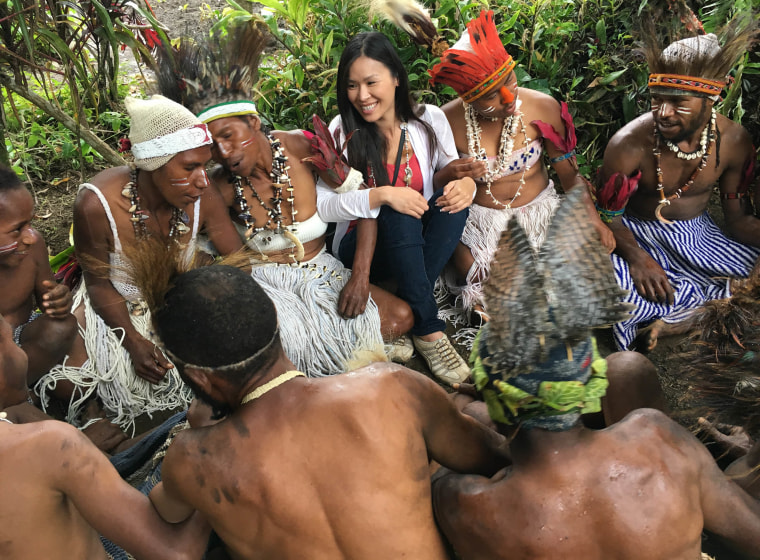
A schoolteacher in the San Francisco area has joined the elite ranks of humans who have visited every nation on Earth.
Lucy Hsu, who teaches second grade in San Jose, California, has officially visited 193 nations.
Most travel clubs and groups use the number of nations as 193 because that’s how many nations are members of the United Nations, Hsu explains.
Hsu, as NBC Bay Area first reported , visited the last country on her list, Syria, in May 2023.
She says she waited a long time for Syria to be open again to Americans (the United States Department of State put the country on its “Do Not Travel” list months after Hsu visited). When she finally traveled there, she was bracing herself “to make sure nothing happens.”
“When we got into Syria ... I felt really excited, obviously, and a little bit surreal,” she tells TODAY.com “I couldn’t believe this was actually happening. I felt very calm. Like there was a sense of calm that ‘Oh, I’ve reached my goal.’”
There is no official tally of who has visited every country in the world but it’s estimated to be somewhere around 400.

The daughter of Vietnamese refugees, Hsu says she didn’t travel much as a child and got her first passport at 23.
“Growing up, it was a very modest upbringing and we never went anywhere,” Hsu says, but before going back to school for her master’s degree, she decided to get her passport and go backpacking through Europe. From there, she caught the travel bug and made it a goal to travel every summer.
As her country count climbed higher and higher, she figured out how to keep her costs low and give back at the same time.
“I realized if I planned my summers properly, I could travel on a low budget and see a couple of countries that are clustered together,” she explains. “And then I realized by the time I’d traveled for five or six years, I’d reached probably 60-70 countries.”
She says she discovered networks of other international travelers in various clubs who offered tips and new destination goals. She joined the Century Club — which has the goal of hitting 100 countries — and then once she reached that goal, Hsu figured she would keep going.
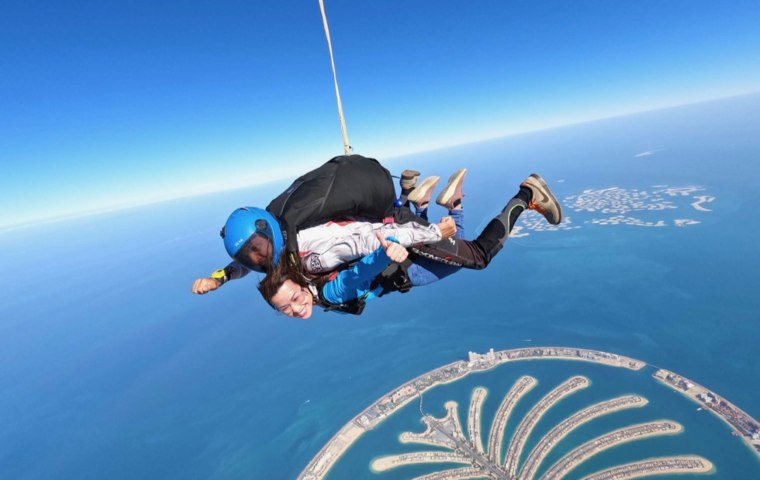
“And I just thought, ‘Well, how could I go to 193? Is it possible?” she says. “Then I realized, ‘Oh, you actually can go to Afghanistan safely. And you can actually go to Iran and North Korea safely.’ So why not?”
How is Hsu able to afford so much travel?
Hsu, 42, says that the biggest question people ask her is how she’s able to afford to travel so much.
She says it’s through a variety of cost-saving strategies but her biggest one is by signing up to do volunteer exchange programs and homestays.
She says she uses Workaway — a subscription-based website that connects volunteers with vetted organizations — to find hosts and opportunities.
She says she’s done many different types of cultural exchanges but mostly ones “geared towards education and working with children because that’s my profession and that’s my passion.”Courtesy Lucy Hsu

Hsu adds that she is a “low-key traveler” and often stays in hostels using a website called HostelWorld — and has even found deals working at hostels in exchange for her room and board.
She offered a few other suggestions for traveling on a smaller budget, including earning credit card points to rack up rewards.
Hsu says she has also taken low-cost buses across borders and trains while on her travels.
She says it’s important to her to help people realize that travel is more attainable than they might think.
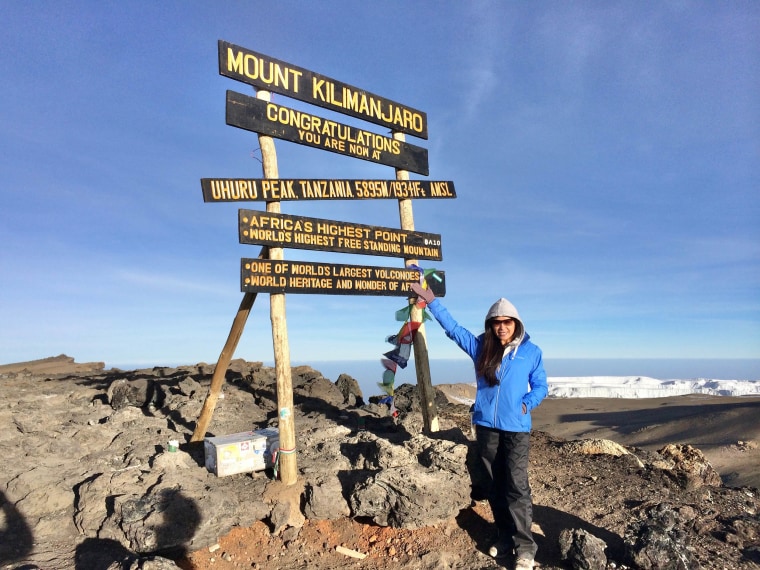
“There’s still a lot of misconceptions about travel being unattainable ... or that it’s very unsafe or unaffordable,” she says.
But now, she says, she’s learned how to make trips happen and wants to spread the knowledge — especially as, Hsu notes, there are so few minority women in her international travel community.
“Travel is attainable if you’ve learned ways to do it in a budget-conscious way. And those methods are out there if you want to research,” she says. “Travel is less unattainable than people think.”
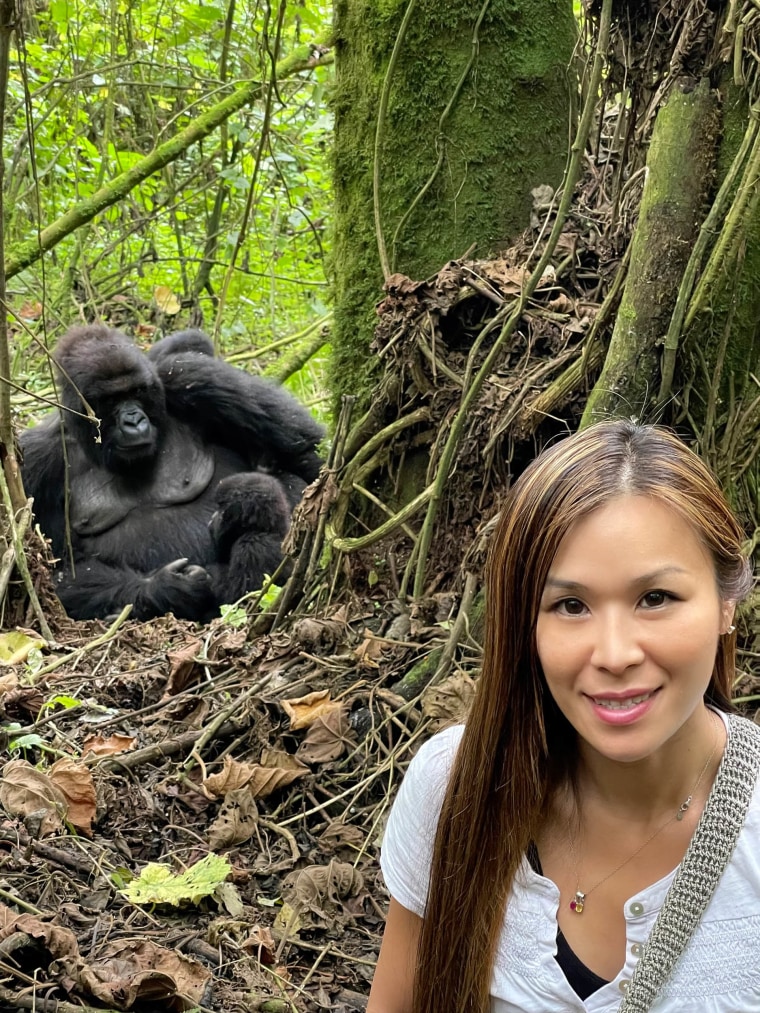
Hsu’s favorite countries out of 193
Hsu says it’s hard to choose her favorite trips because she’s had so many wonderful experiences but Mongolia stands out in her mind.
“It’s really this land of undiscovered adventure,” she says, explaining she stayed a few days in the Gobi Desert in a yurt with a local family. She reminisced about riding the family’s camels in the morning and sliding down sand dunes with the children.
She also mentioned her love for her “Kenyan family” whom she stayed with for several months one summer and traveled around Eastern Africa.
“The thing that really reminds me of the value of travel is just a sense of gratitude for how much we have in our world. Yet we’re often unsatisfied because we want more,” she says.
“And I think those lessons I bring home to me when you want to complain about you know, there’s traffic or the weather sucks today, or my internet’s down and then you realize, ‘OK, let’s stop for a moment. There’s people living happily with none of those things.’”
Hsu’s tips for staying safe as a solo traveler or going to less touristy destinations
Hsu says the key to staying safe while traveling is to do your research ahead of time. For example, she says when she was debating going to North Korea, she initially thought it “sounds like a really stupid idea.”
“But once you do the research, then you realize, ‘Oh, there’s actually three companies that have been taking travelers to North Korea for eight years,’” she says.
She says relying on her network of fellow experienced travelers for recommendations for things like guides, drivers and translators, also made her feel safe, along with following the local rules.
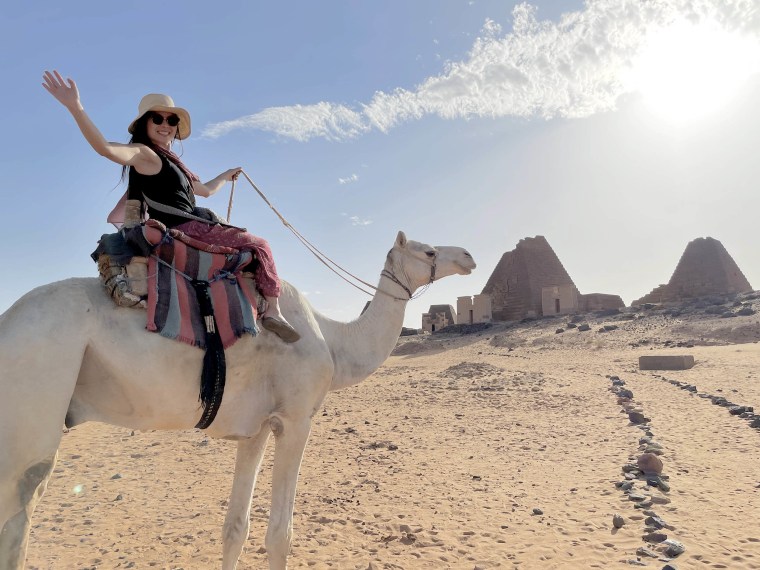
Where is Hsu off to next?
Even though she’s now traveled to every nation (and Antarctica!), Hsu still has big plans for the future. She’s interested in traveling on a cargo ship, she says, and has several new cities and regions in countries she’s previously visited that she would like to see.
“It’s like what they say: ‘The more you learn, the more you realize you don’t know much,” she laughs. “And the more I travel, the more I realize I haven’t seen anything yet.”

IMAGES
VIDEO
COMMENTS
Antarctica Science Program 2023-2024. Don't miss the chance to sail with Antarctic scientists this season! From penguins and whale research to fisheries management and the impact of Citizen Science, you'll have the chance to get up close and personal with any of seven different projects. 1 mins read. Arctic Wildlife Antarctic Wildlife ...
Today, Airbnb and Ocean Conservancy announced the Antarctic Sabbatical, an unprecedented opportunity for five passionate individuals to travel to Earth's most remote continent and join Antarctic Scientist Kirstie Jones-Williams on a first-of-its-kind scientific research mission in December. The five volunteer citizen scientists will collect ...
González Videla Base. Located at Waterboat Point in Paradise Bay, this base was named after Chilean President Gabriel González Videla, who, in the 1940s, became the first chief of state of any nation to visit Antarctica. It's a small station and even at the height of the summer season, there is only up to 16 people living there.
Experience the splendor of the coldest and oldest continent, Antarctica, on one of many tour & vacation packages with National Geographic Expeditions.
Abby Wallace. Feb 21, 2022, 1:30 AM PST. The Viking Octantis. Viking Cruises. Two expedition cruise ships are offering people the opportunity to cruise Antarctica and the Arctic. Participants will ...
Browse Expeditions. Travel the World. Make a Difference. Earthwatch expeditions pair researchers with volunteers to address some of the world's most pressing environmental challenges. Explore our current expeditions to discover how you can make a difference. Regions. Expedition focus.
Antarctica Tours and Adventures. Antarctica covers an area of 5.5 million square miles. That's twice the size of Australia and larger than the United States of America and Mexico combined. On this expansive continent, there are hundreds of different animal species, including 46 species of bird, 10 cetaceans (including killer whales and ...
Embark on one of the longest Antarctica-only cruises, this 13-day Antarctica Explorer voyage, and discover in depth the breathtaking scenery, glacier-clad peaks, and extraordinary wildlife of the Great White Continent. Experience a genuine exploratory expedition with no predetermined schedule, allowing you to discover Antarctica as it was meant ...
There's a Brand-new 30-day Antarctica Trip Departing in January 2024 — Here's How to Get on Board. The trip, a partnership between Ponant and the Explorers Club, is a research expedition, but ...
Current Science. Each summer season, between October and February, around 100 scientists and technicians travel to Antarctica and the Southern Ocean to conduct research. Other scientists carry out Antarctic research from New Zealand using remote technology and by tapping in to sample and data archives. The scientists that work out of Scott Base ...
April 06, 2016. • 6 min read. "Towering mountains rise straight out of ice-clogged seas, icebergs gleam the radiant blue that only ancient ice attains, wildlife congregates in multitudes. In ...
Antarctic Cruises & Expeditions | Quark Expeditions. Dates & Rates. Travel Advisors. Know Before You Go: FAQ's. Contact Us. Call Now to Book : +1 (877) 585-1235.
Guests will have the option to reserve a spot on the Viking DNV-classed submarine for a thrilling journey into the depths of the frigid waters in Antarctica. The return sailing, by way of the ...
SAFETY: Travelling to Antarctica comes with inherent risks such as cold weather exposure and possible wildlife encounters. The remoteness of the destination means medical assistance is not instant. All tour operators have trained medical professionals onboard and will mitigate risks to the best of their ability.
Research Station Visits . Young Explorer Program ... — In accordance with International Association of Antarctica Tour Operators guidelines, the minimum age for travel to Antarctica is 5 years. Up to 45% off . Through June 30, save up to 45% on must-see destinations like Antarctica, Greenland, and Svalbard! ...
Explore Antarctica with Lindblad Expeditions and encounter penguins, seals and legendary ice on this fascinating itinerary. Call +1.800.397.3348 or contact ... where endless white mountains roll to the horizon and massive glaciers churn icebergs into the sea. Travel with a diverse team of experts aboard one of our three state-of-the-art ...
Call 1.406.541.2677. Start Planning My Trip. Adventure Life's Antarctica cruises and tours are the ultimate way to visit the white continent in comfort, safety, and style. Thousands of travelers have trusted Adventure Life's Antarctica cruise experts to help them choose the perfect small ship cruise to Antarctica .
A bit of research or a phone call with a Polar Travel Adviser can help you choose what ship best fits your preferences. What can I do while in Antarctica? Passengers spot a whale fluke while on a zodiac cruise. Photo: David Merron. Expedition trips to Antarctica provide daily opportunities to get off of the ship and into the environment. While ...
Investigators will travel to Antarctica after claims of sexual assault at U.S. bases. McMurdo Station is photographed from the air on Oct. 27, 2014. Investigators with the National Science ...
Best Whale Watching Trip to Antarctica - WWF Giants of Antarctica. Best Budget Trip to Antarctica - Best of Antarctica from Punta Arenas. Best Trip to Antarctica for Photographers - Spirit of Shackleton. Most Unique Trip to Antarctica - Antarctic Eclipse. Best Short Trip to Antarctica - Antarctic Express.
Antarctic fieldwork is supported only for research that must be performed, or is best performed, in Antarctica. ANT encourages research, using existing samples, data, and models, that do not require fieldwork. ANT encourages and supports research that crosses and combines disciplinary perspectives and approaches. ANT also supports proposals ...
An increasingly fragile place of barren shores lapped by bone-chilling waters, Antarctica is home to every form of ice — in snow, glaciers and bergs — and a surprising amount of wildlife.
The Antarctica trips traveling to South Georgia and the Falkland Islands take more time, and cost upwards of $20,000. How To Save Money on An Antarctica Trip. ... Maybe I should have done more pre-travel research - okay, I definitely should have, but for some reason, I was under the impression I would see emperor penguins on our trip. ...
Nov. 7, 2022, 9:21 AM PST. By Denise Chow. A Covid outbreak at an American scientific research station in Antarctica has forced U.S. officials to temporarily halt all travel to the remote outpost ...
In January, Dr. Cassandra Brooks—an assistant professor of environmental studies and a faculty fellow with the Institute of Arctic and Alpine Research at the University of Colorado, Boulder, who has been a regular visitor to the Southern Ocean since she began studying marine conservation in the Ross Sea almost 20 years ago—returned to Antarctica for a half circumpolar expedition.
He introduced me to Antarctica through the six-foot-long black-and-white photo of Adelie penguins that hung on our living-room wall in Fairbanks, Alaska. His voyages to Antarctica in the early ...
But Winkaffe warned that those trips are not only "exponentially more expensive" - Antarctica cruises can range from around $5,000 per person to more than $20,000 and those flights could add ...
And those methods are out there if you want to research," she says. "Travel is less unattainable than people think." Hsu on a "gorilla trek" in the Congo.